All thoughts and opinions shared in this post are my own and do not reflect those of Shenandoah University’s Division of Physical Therapy.
My Doctor of Physical Therapy (DPT) program is voted #1 in Virginia for 2020 by Unversities.com! Shenandoah University has a phenomenal DPT program and I could not imagine myself anywhere but here. In this post, I will be including everything you need to know about Shenandoah DPT and why I love it so much!
Top DPT Programs in Virginia for 2020
Best Physical Therapy Colleges in Virginia for 2020 (voted by Universities.com)
Shenandoah University
Lynchburg College
Virginia Commonwealth University
Hampton University
Old Dominion University
Marymount University
Radford University
Information Available on PTCAS
The Application Process
Admission Requirements
- A minimum cumulative grade point average (GPA) of a 2.8 on a 4.0 scale in all completed course work.
- A grade of “C” or above is required for all prerequisite courses.
- Take the Graduate Record Examination (GRE). For non-native speakers of English, a Test of English as a Foreign Language (TOEFL) must be completed.
- Two letters of reference which must come from a licensed practicing physical therapist and a college professor (preferred science or professor in major).
- Demonstrate knowledge of the profession by completing a minimum of 40 documented hours (volunteer or paid) of exposure to physical therapy practice under the supervision of a licensed physical therapist.
- All science courses must be less than 10 years old at the time of application. Exceptions are made at the discretion of the PT Admissions Committee.
- Advanced placement credits are accepted for prerequisite courses except for human anatomy, human physiology, physics and chemistry.
Traditional Admissions
This is the primary method for admission into the DPT program. In addition, consideration for admission through this process requires:
Completion of a bachelor’s degree from an accredited institution, prior to matriculation, including the 41 credit hours of prerequisite coursework required by the program. Typical undergraduate degrees include Exercise Physiology, Biology, and Kinesiology. However, undergraduate degrees may vary and no specific degree is required prior to applying.
A minimum cumulative GPA of 2.8 on a 4.0 scale for the prerequisite courses and for overall undergraduate GPA.
Articulation Agreement Admissions
A second means of admission into the DPT program is through articulation agreements established by the Division of Physical Therapy with six universities and colleges. The articulation agreements of participating institutions are located on the SU PT Articulation Agreements page and include Bridgewater College, Ferrum College, James Madison University, Shenandoah University, Virginia Tech University, and West Virginia Wesleyan College. This articulation agreement gives preference to applicants who meet the criteria of those agreements. Consideration for admission through this process requires:
Completion of a bachelor’s degree from one of the institutions that have established an articulation agreement with SU. The bachelor’s degree must include the 41 credit hours of prerequisite course work.
All courses for the degree awarded including the prerequisites must be completed at the granting institution.
A minimum cumulative GPA of 3.2 on a 4.0 scale for the prerequisite courses.
SU 3 + 3 Early Assurance Pathway: Doctor of Physical Therapy
In addition to the articulation agreements, the Division of Physical Therapy has established a unique admissions process with the undergraduate office of admissions for Shenandoah University (3 + 3 Early Assurance Pathway: Doctor of Physical Therapy).
Admission Acceptance Rates
SUPT usually has just under 1,000 applicants each year. The incoming class size is typically around 60 students - 40 students at the primary campus in Winchester and 20 students at the secondary campus in Leesburg.
The Interview Process
My interview was about four hours long, which included a tour of the facility, an orientation with information about the program, my actual personal interview, and a period of time where refreshments were served and applicants had the opportunity to connect with current students in the program. The interviews usually take place during Monday and Tuesday of our first week of winter break, but the majority of students (a mix of 1st, 2nd, and 3rd years) stick around to help out with interviews (and because we love SU so much and aren’t ready to leave our friends quite yet). The current students in the program are there to answer any questions about life in Winchester, the program, and first-hand insight about what it is really like to be a DPT student. Shenandoah utilizes 1-on-1 or 2-on-1 interviews, which will either take place with the applicant, professor, and an upperclass (2nd or 3rd year) student in the program or the applicant and a professor (this is how my interview was held).
Check out this post where I share all about my interview experience at Shenandoah!
Course Curriculum
The SUPT program is a three year, eight semester (2 summer semesters and 6 fall/spring semesters), and 100 credit hour cohort program. Shenandoah also offers a dual DPT/MSAT (Doctorate in Physical Therapy/Master of Science in Athletic Training) and Performing Arts Medicine Certificate for anyone that may be interested in obtaining an additional degree or certificate in those areas.
Fall of 1st Year:
- Clinical Conference I
- Evidence-Based Research Practice
- Examination and Intervention
- Gross Human Anatomy I & Dissection Lab
- Histological Aspects of Movement I
- Medical Terminology and Documentation
- Professional Issues I
Spring of 1st Year:
- Functional Neuroanatomy
- Gross Human Anatomy II & Dissection Lab
- Histological Aspects of Movement II
- Integrated Part-Time Clinical Experience (10-week long rotation once a week)
- Introduction to Therapeutic Intervention
- Medical Fundamentals
- Musculoskeletal System I
- Psychosocial Aspects of PT Practice I
Summer of 1st Year: NADA! In this program, we get the full summer off after our first two semesters (fall and spring) from mid-May to the end of August. The next two summers will consist of terminal full-time clinical experiences.
Fall of 2nd Year:
- Adult Neurotherapeutics
- Clinical Conference II
- Evidence-Based Practice I: Advanced Analysis
- Gait Analysis and Biomechanics
- Integrated Part-Time Clinical Experience II (10-week long rotation once a week)
- Musculoskeletal System II
- Pathophysiology
- Therapeutic Interventions I
Spring of 2nd Year:
- Advanced Medical Fundamentals
- Evidence-Based Practice II: Advanced Analysis
- Integrated Part-Time Clinical Experience III- Musculoskeletal System III
- Pediatric Physical Therapy- Physical Agents
- Professional Issues II
- Therapeutic Interventions II
Summer of 2nd Year:
- Terminal Full-Time Clinical Internship I (8-week long rotation)
Fall of 3rd Year:
- Advanced Topics
- Cardiovascular and Pulmonary Physical Therapy- Clinical Conference III
- Evidence-Based Practice III: Advanced Criteria
- Professional Issues III
- Prosthetics and Orthotics
Spring of 3rd Year:
- Establishing a Physical Therapy Practice/Direct Access
- Terminal Full-Time Clinical Internship II (12-week long rotation)
Summer of 3rd Year:
- Terminal Full-Time Clinical Internship III (12-week long rotation)
Accreditation, NPTE Passing Rates, and Employment After Graduation
The Division of Physical Therapy at Shenandoah University is accredited by the Commission on Accreditation in Physical Therapy Education (CAPTE). CAPTE is an accrediting agency that is nationally recognized by the US Department of Education (USDE) and the Council for Higher Education Accreditation (CHEA). CAPTE grants specialized accreditation status to qualified entry-level education programs for physical therapists and physical therapist assistants.
100% of the graduates from Shenandoah University Doctor of Physical Therapy program have passed the NPTE and are practicing physical therapists. Shenandoah is committed to excellence among their students and graduates to advance the physical therapy profession, and students are consistently above the National average for the first time pass rate for the NPTE examination.
The ultimate pass rate of Shenandoah University DPT graduates on the national PT licensure exam is 100%.
94% of entering DPT students ultimately graduate from Shenandoah University with the DPT degree.
100% of Shenandoah University DPT graduates were employed as a physical therapist within 12 months of passing the NPTE (for all graduates seeking employment).
Tuition, Financial Aid, and Scholarships
The 3 year curriculum is a total of 100 credit hours and the cost per credit hour is pictured below. Financial aid is available for incoming graduate students. More information can be obtained HERE. There are grants and scholarships available to graduate students including:
SUPT Scholarship for Academic Excellence – provides about $1000.00 per semester for the entire program. Typically 2-3 of these are awarded to each incoming class of students. Application materials are provided upon acceptance into the program and after a deposit has been made to hold a seat.
Virginia Tuition Assistance Grant (VTAG) – available to VA residents only enrolled full-time in a grad program. Application is made directly to the state. The award is in the range of $1500-$2500 per year, with the exact amount depending on how much money the Virginia General Assembly allocates for that program each year.
For my first year, I received financial aid via the Federal Direct Unsubsidized Stafford Loan and VTAG grant, which covered all of my tuition. I had to take out an additional Federal Graduate PLUS Loan this year to cover the additional expenses required for a 3-semester school year. I will be sharing a separate blog post soon all about my financial aid, student loans I have, and my job that has helped covered my funds during my time in PT school!
Why Shenandoah?
I had a gut feeling this was the place for me before I even had my first interview!
The faculty and staff at SUPT are amazing and were so friendly from the very first email. Upon being offered an interview during my application cycle, I still needed one more course to fully meet the prerequisite requirements. I enrolled in this course in the following spring semester and was provisionally accepted, meaning I was still fulfilling this last prerequisite requirement when I was offered a spot. I had SO many questions throughout the application process and the admissions committee was so kind, patient, and always ready to answer my questions via email or phone. I was #14 on the waitlist during my application cycle. Even though I was high on the wait list and it didn’t take very long before I was offered a spot, it was still a nerve-wracking process and I received frequent updates about where I was on the waiting list. So between talking about my class, spot on the waiting list, and general admissions information, I felt like I already knew some of the faculty and staff so well on my interview day because they had been so communicative and readily available prior to even meeting them.
We have the option to attend one of two different campuses!
There are two different campuses available for students to attend - one is in Winchester, VA (~40 students) and the other is in Leesburg, VA (~20 students). When applying on PTCAS, you have the option to designate a preference for the Winchester campus, Leesburg campus, or be open to accepting a spot at either campus. Depending on traffic, the campuses are about 45-60 minutes away from each other. There is not a lot of travel required between campuses and students will primarily complete classes and activities at their respective campus. During your first semester, you will have a few joint classes as an entire class at our Cool Springs campus, which is the halfway point between the two campuses. It’s a really awesome cabin with scenic views and is where we have our orientation each year. Otherwise, we utilize video teleconferencing to hold lectures and meetings together as an entire class, in which one campus will be present and the other campus will be videoed in with advanced technology to use that contributes to an optimal learning experience. Since Winchester is the primary campus, students at this campus typically receive more in-person lectures from the faculty and staff compared to the students at the Leesburg campus (I’d say about a 60/40 ratio). However, the professors do travel back and forth between campuses and are present at both campuses periodically. When it comes to labs and hands-on sessions, each campus completes these separately from one another and students will always receive in-person instruction from lab instructors.

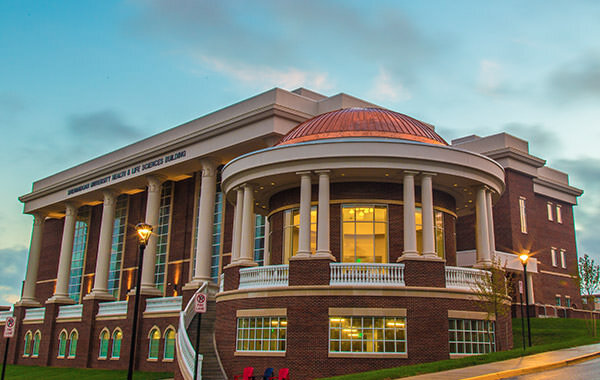
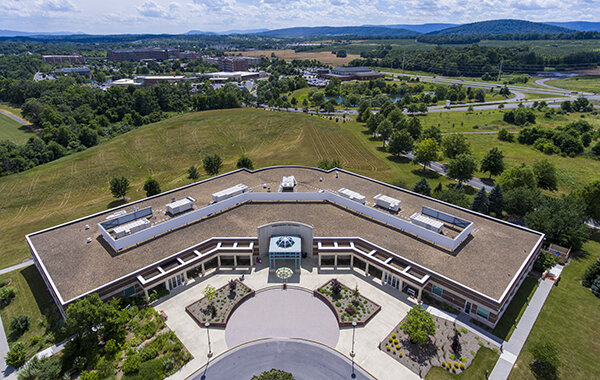
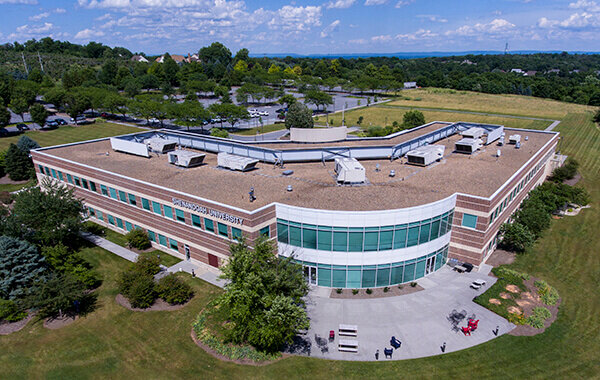
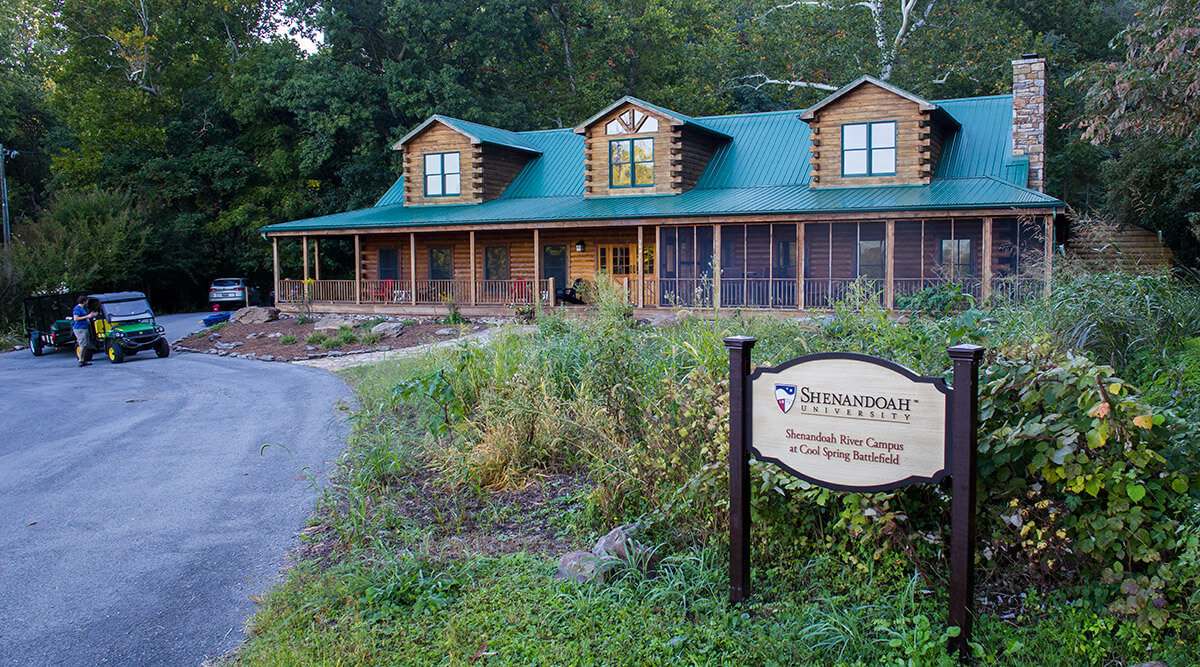
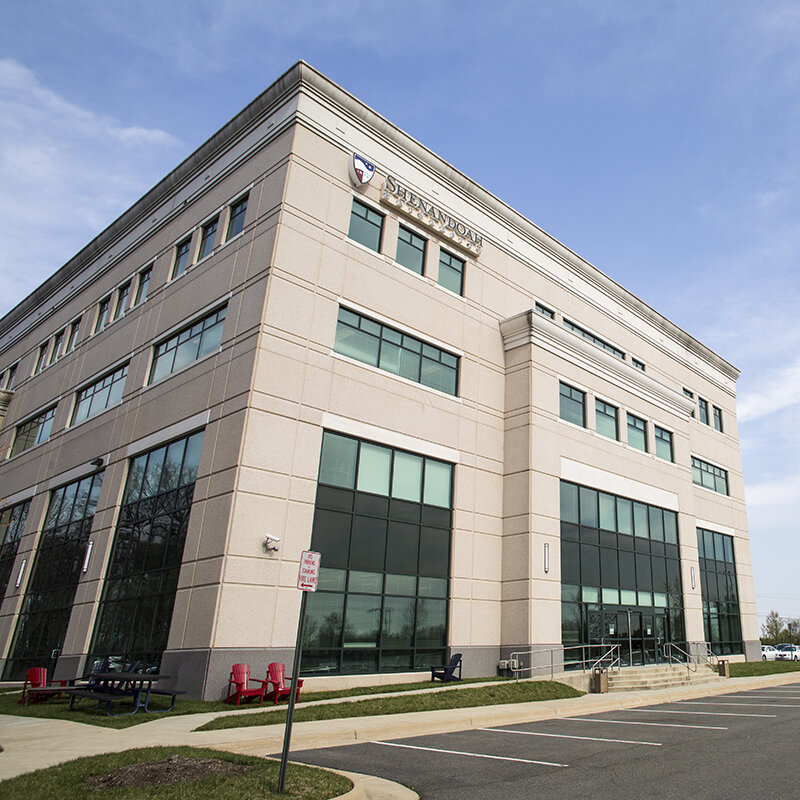
We have a super fun orientation with all of the current students, faculty, and staff in the program!
Before starting your first week of classes, you will have a super fun orientation with all of the faculty, staff, and current students in the program. It is a great way to meet everyone and for all of us to get together before classes begin. During orientation, you’ll have an early Christmas and get a brand new MacBook, iPad, and Apple Pencil! You’ll get a professional headshot taken for your student ID card, a PT kit with all of your lab equipment, and any “swag” that you ordered to represent SUPT (scrubs, jackets, sweatshirts, polos, hats, etc). You’ll get to meet and have lunch with your second your “buddy” or “big” - I spoiled mine with lots of goodies! On the last day of orientation, we have a picnic at our Cool Springs campus and your families, friends, and significant others are welcome to come! We have a Q&A session with the second and third year students, play lots of games, do team building activities, have an annual volleyball tournament (that we all take pretty seriously haha), jam to music, get to eat the YUMMIEST food, and just have fun and let loose before the semester gets into full swing.

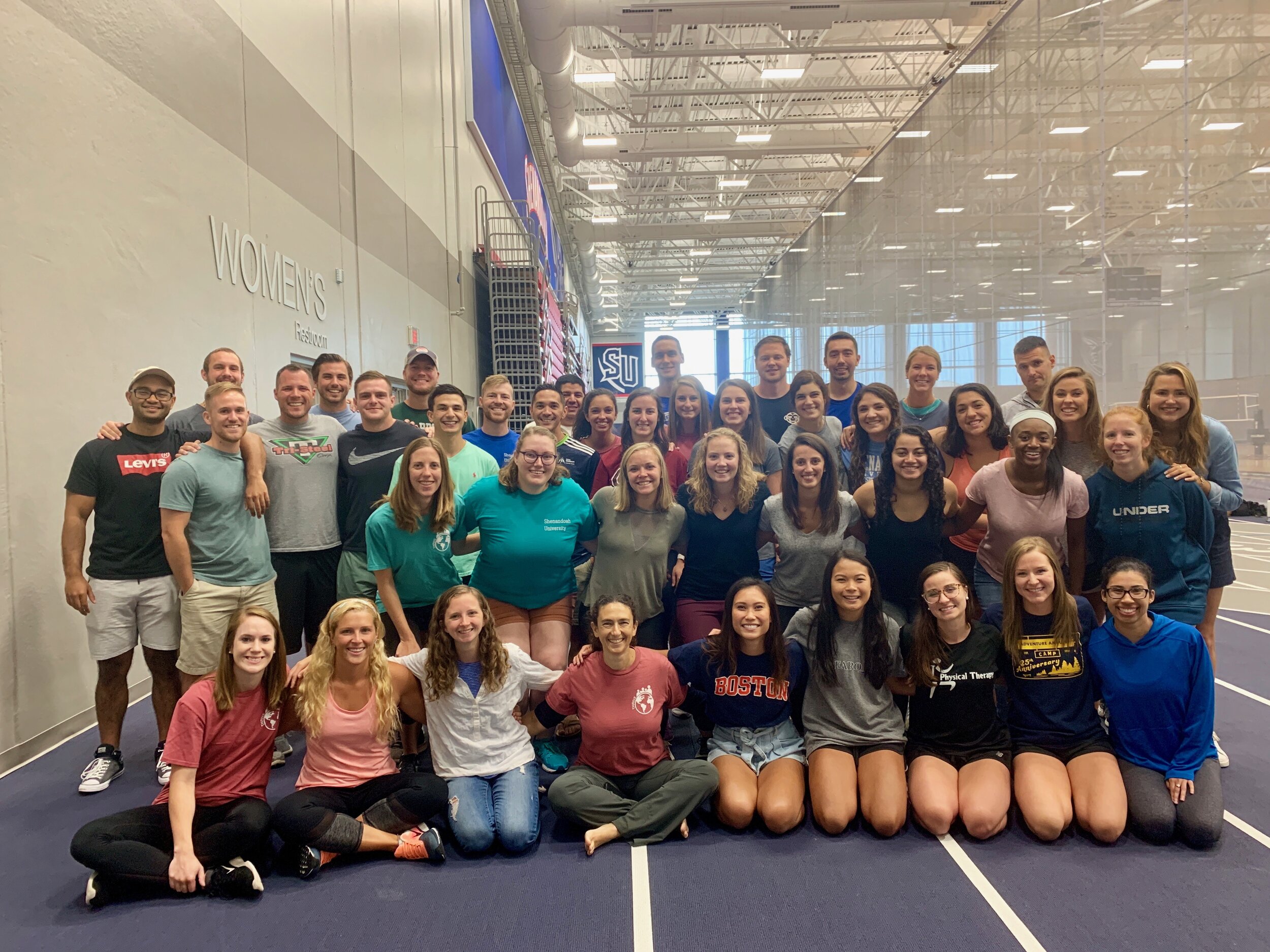
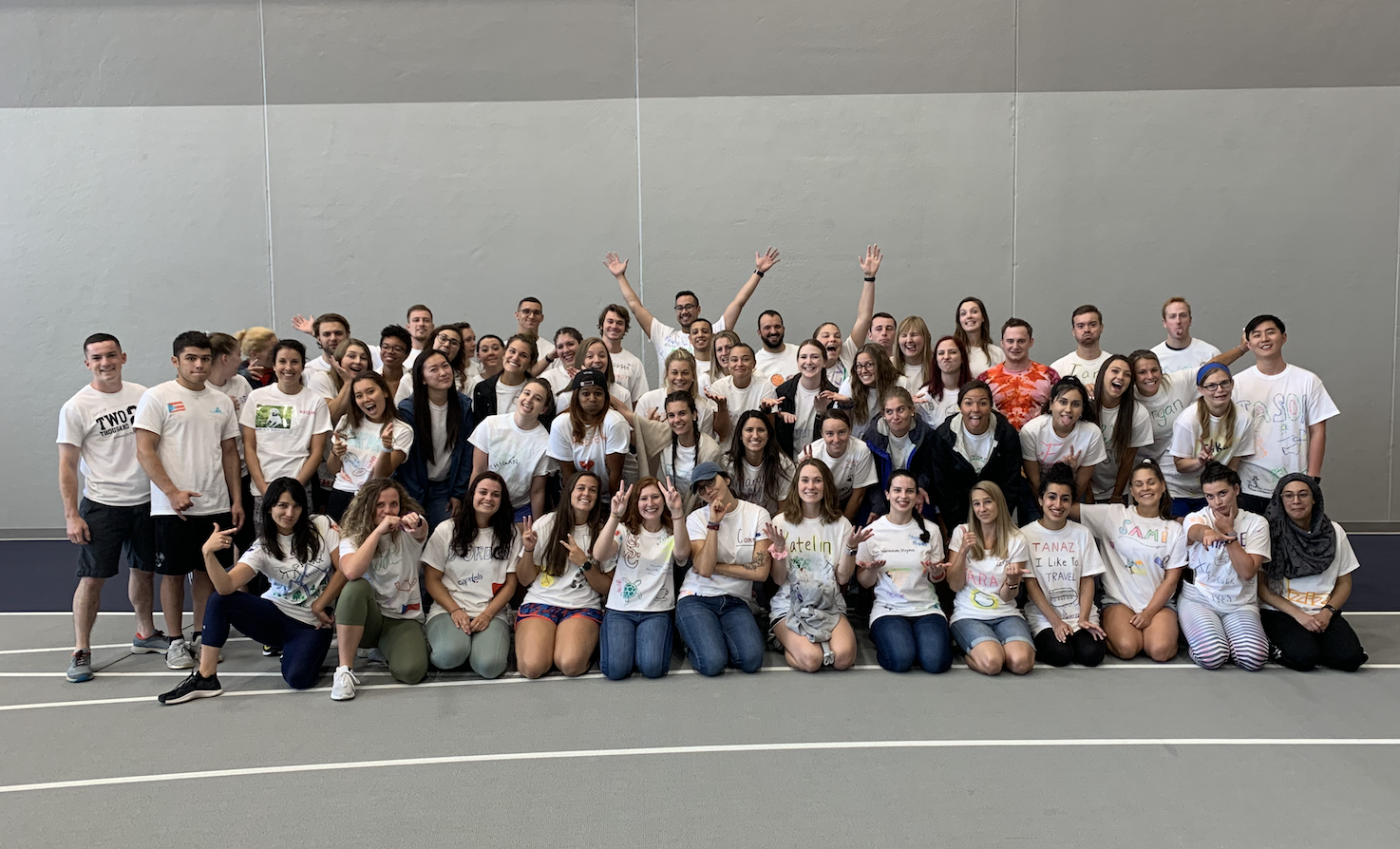
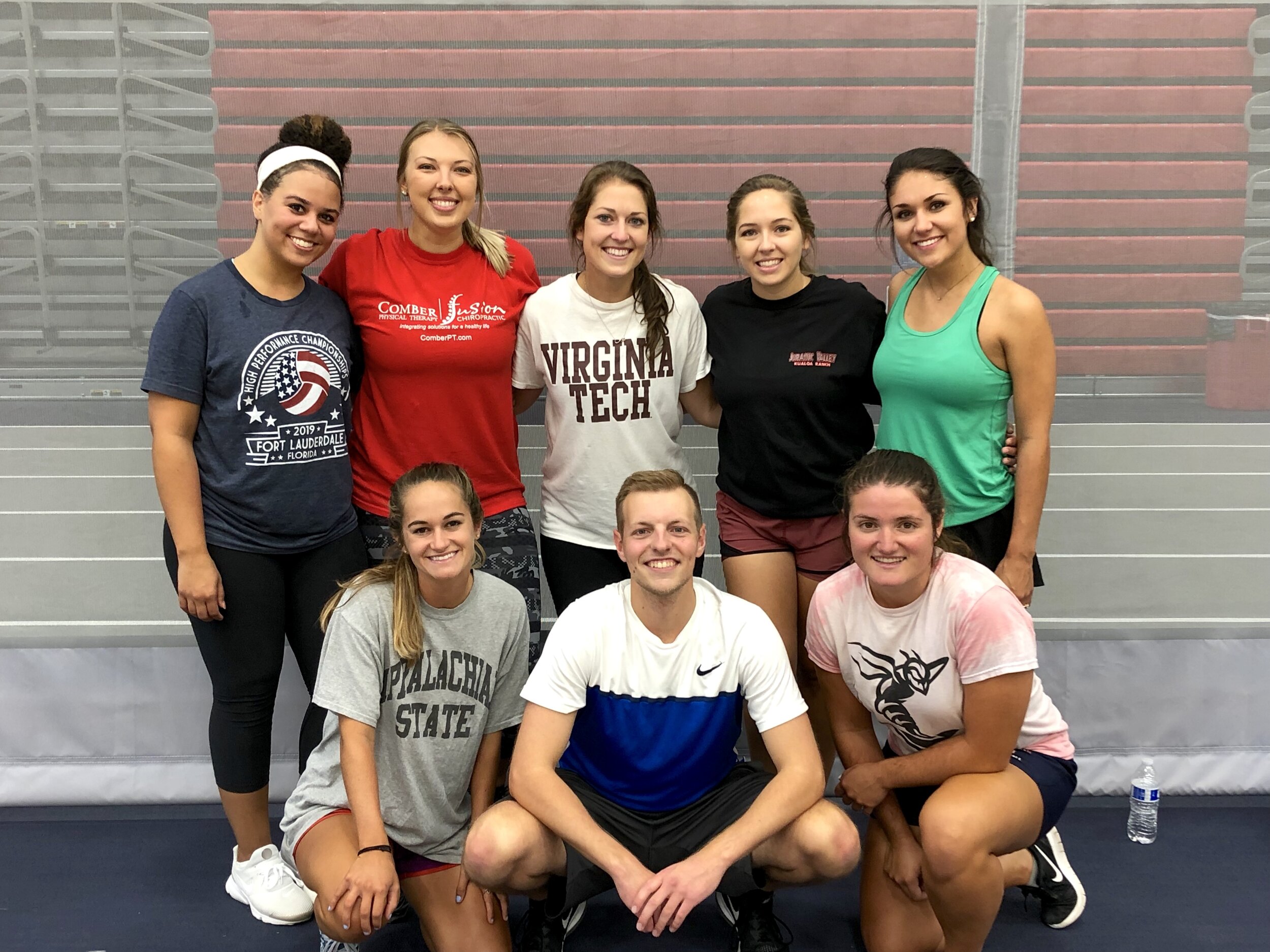
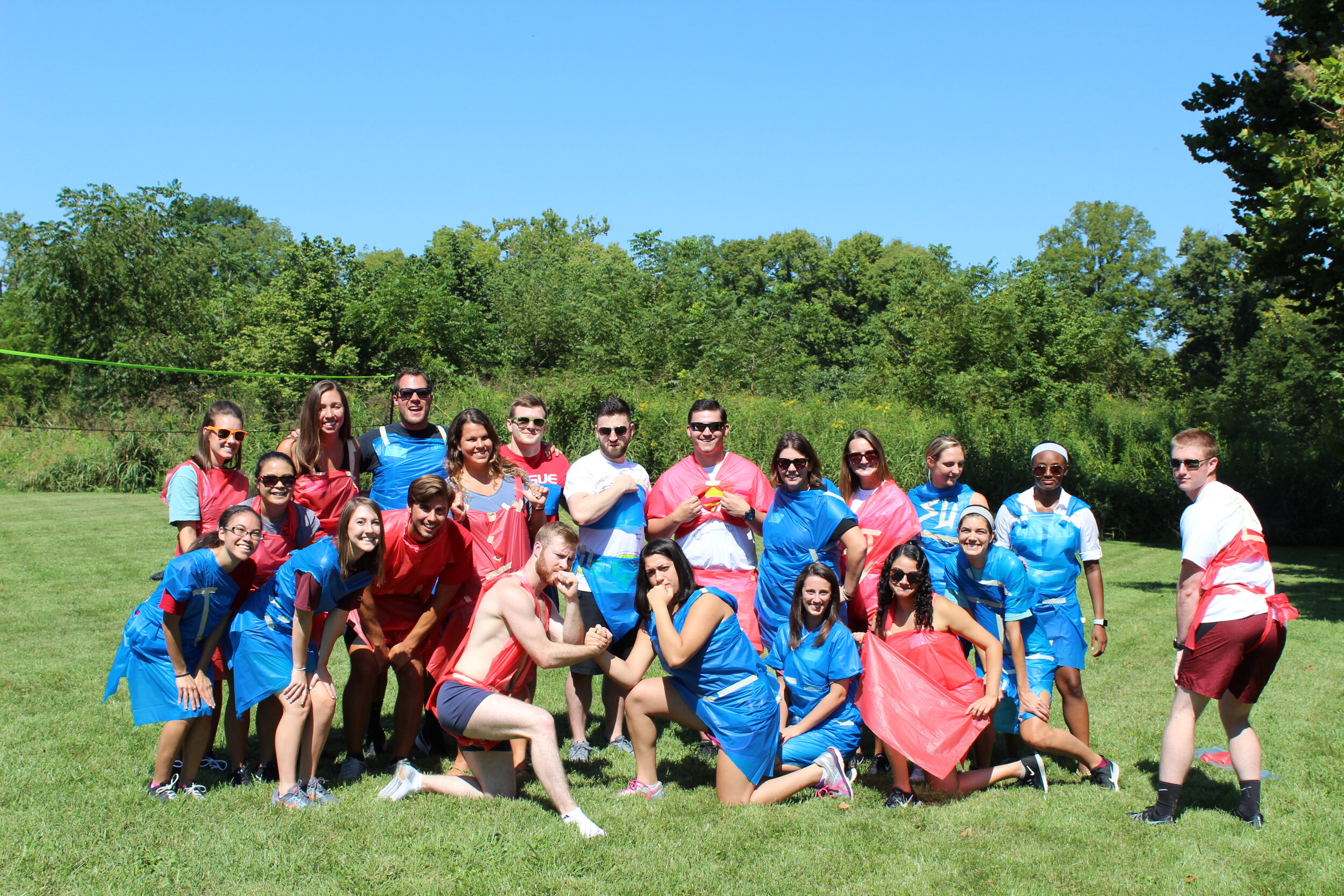

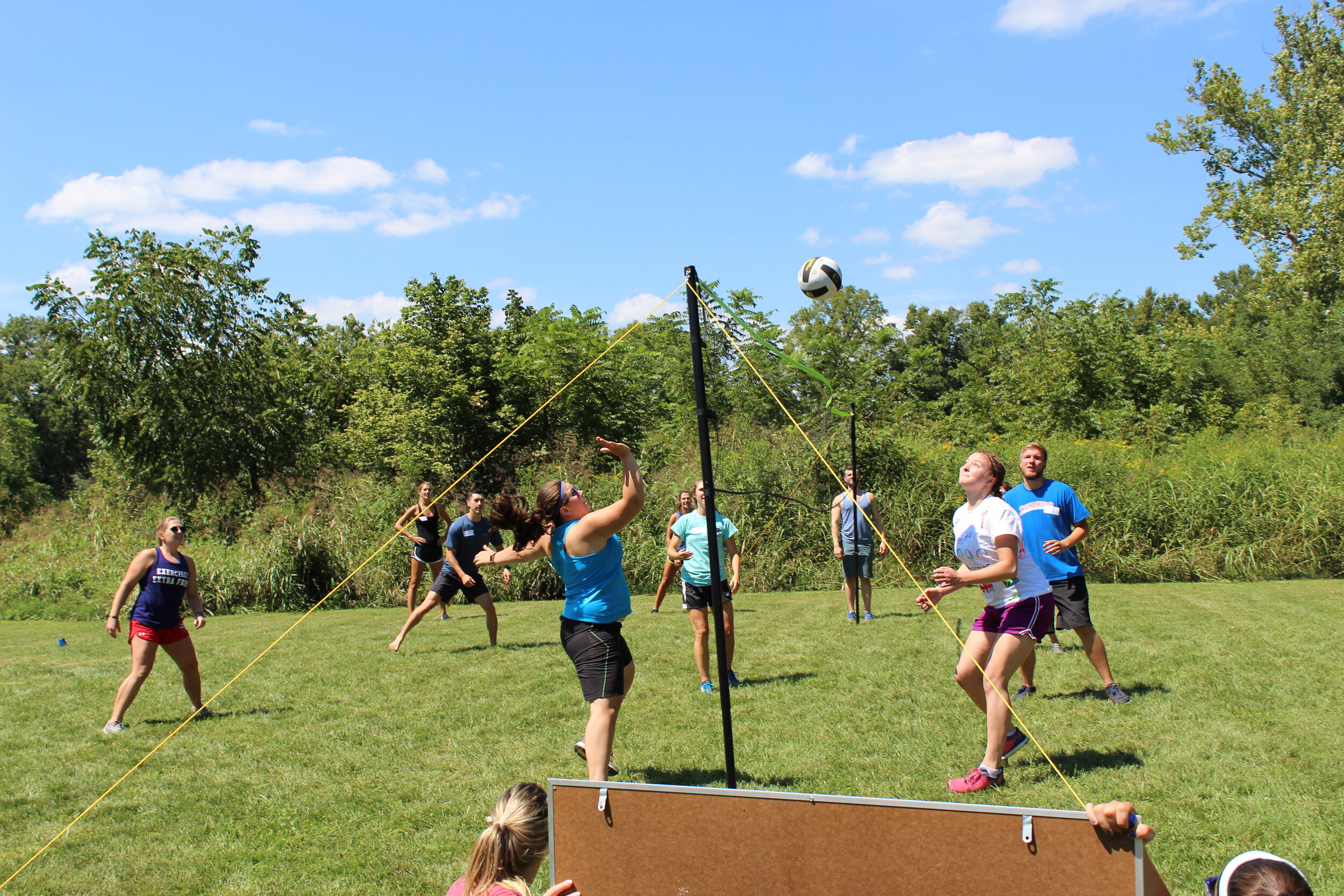
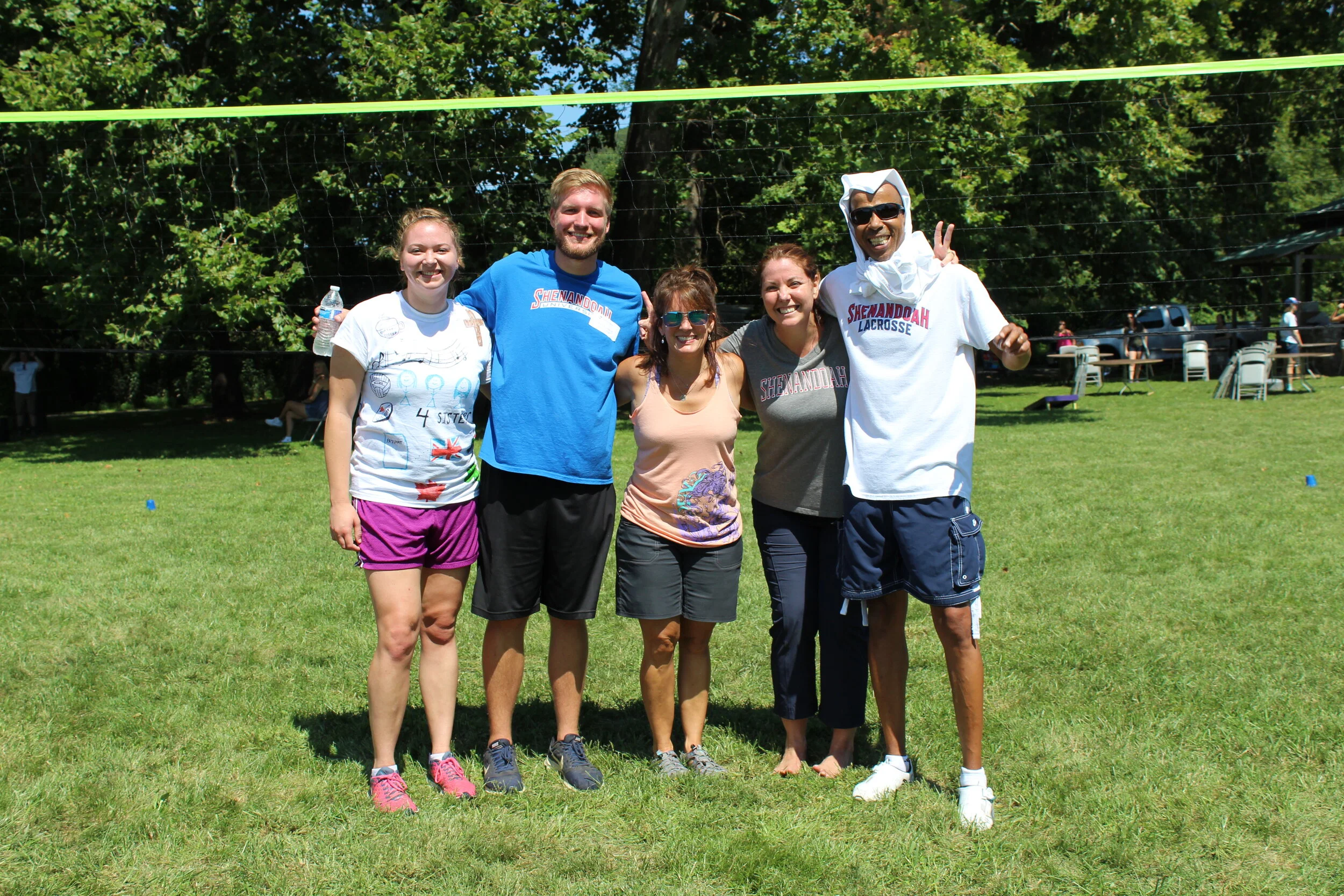
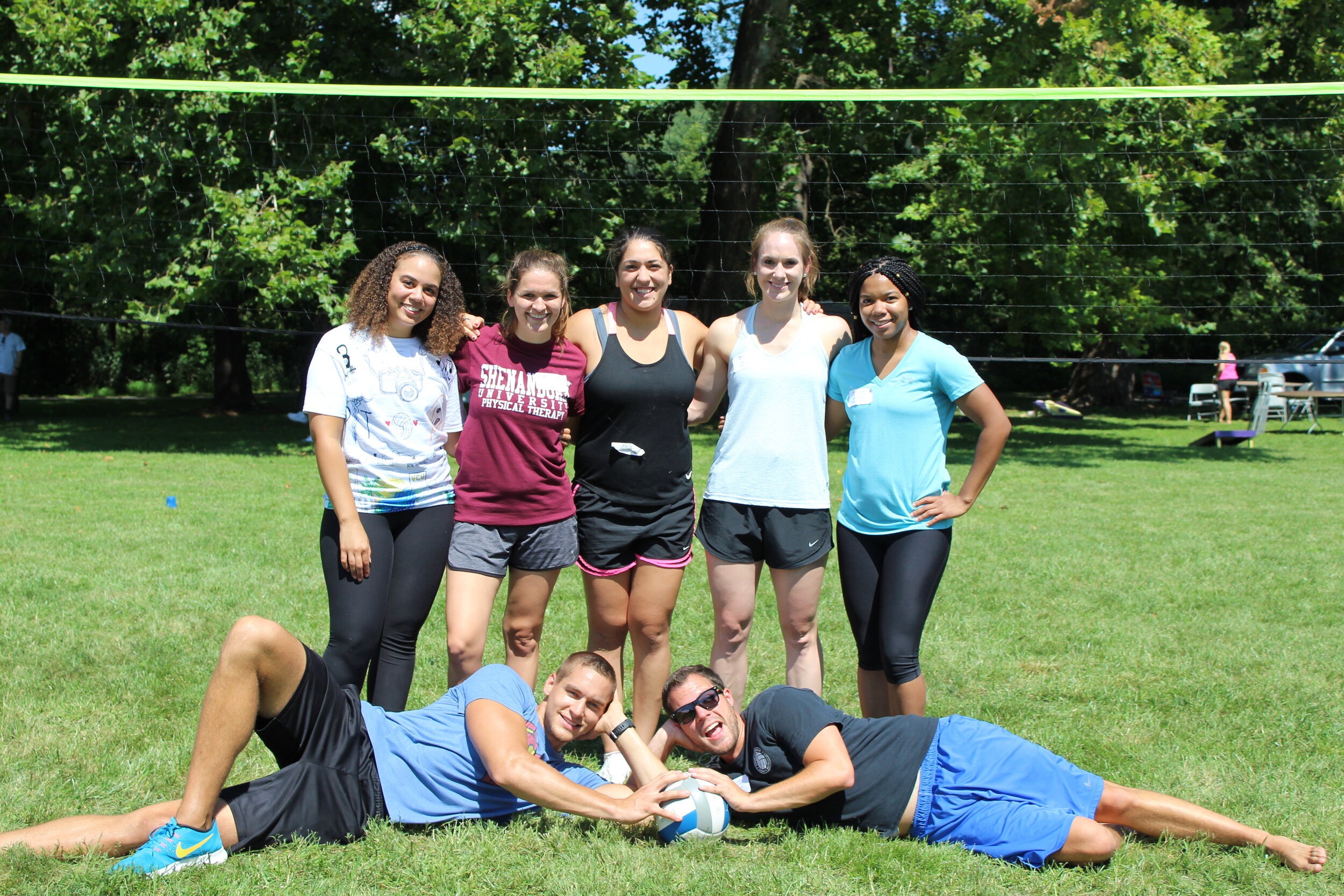
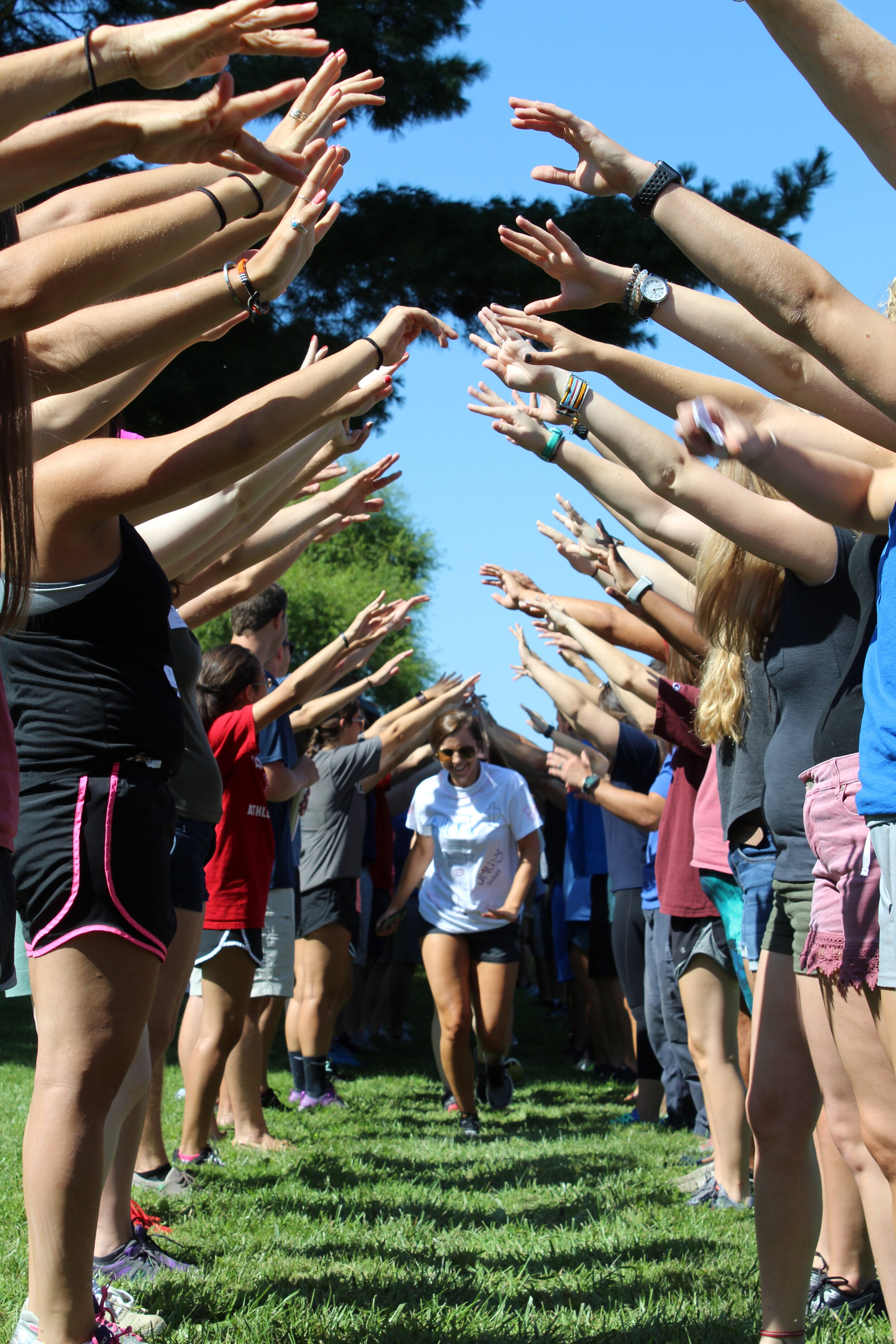
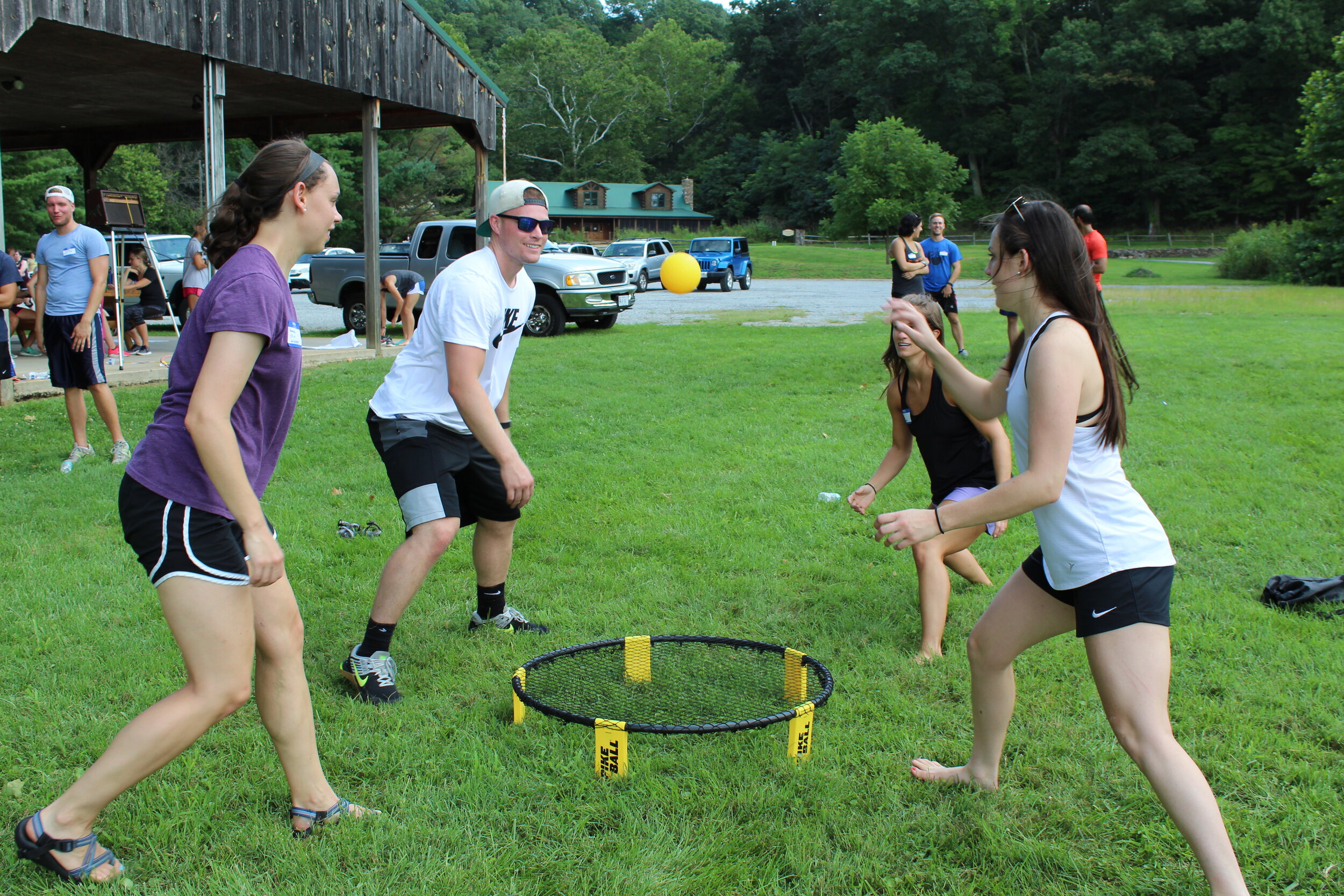
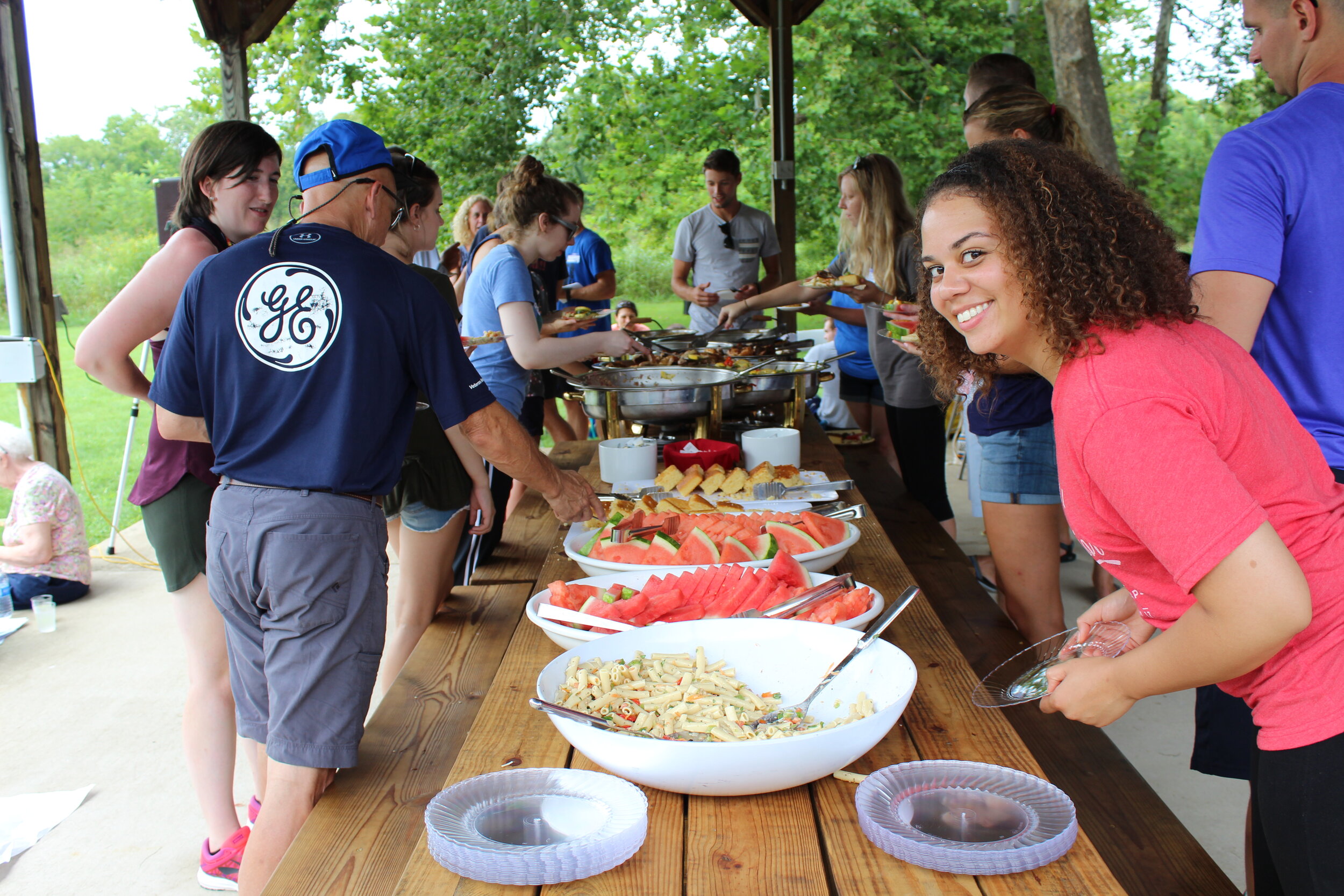




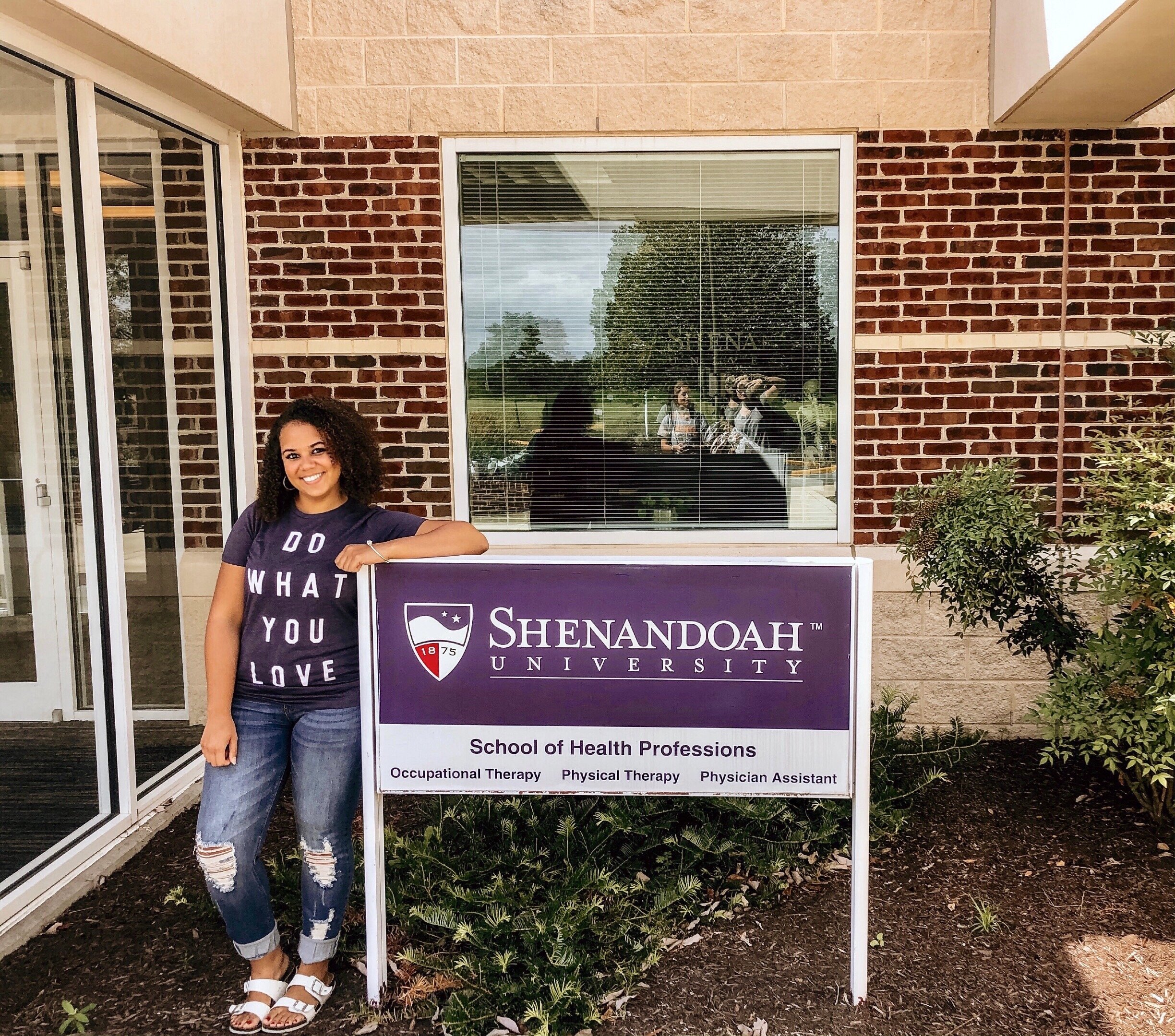
We have the best faculty, staff, and overall family atmosphere!
Our faculty and staff are incredible and truly create such a family atmosphere at Shenandoah - from our professors, to our admissions committee, to our clinical education team, to our cafeteria workers, to our janitors that will never walk by you without saying good morning with a smile from ear to ear. All of our professors maintain active clinical practice, many of which are board certified specialists and have unique skills or certifications that contribute to awesome learning experiences for students and further expand our own skills and knowledge. They go above and beyond to help us become the best clinicians possible, and their passion for our learning, growth, and overall well-being shines through each and every day. I can always count on them for a good laugh, a shoulder to cry on, or a listening ear to vent to. The relationships we’ve built are so special and I will hold on to our memories and corny jokes forever.

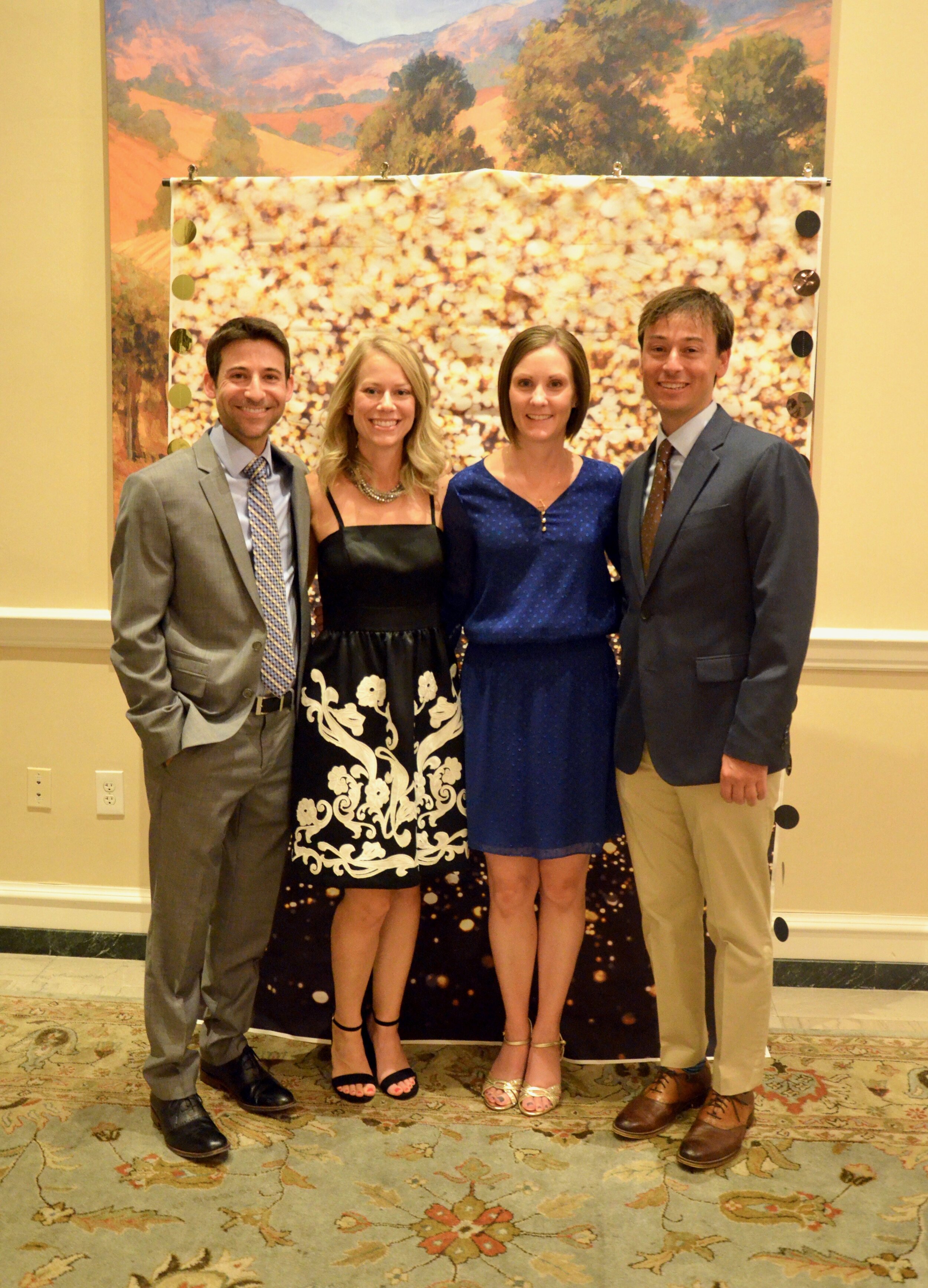
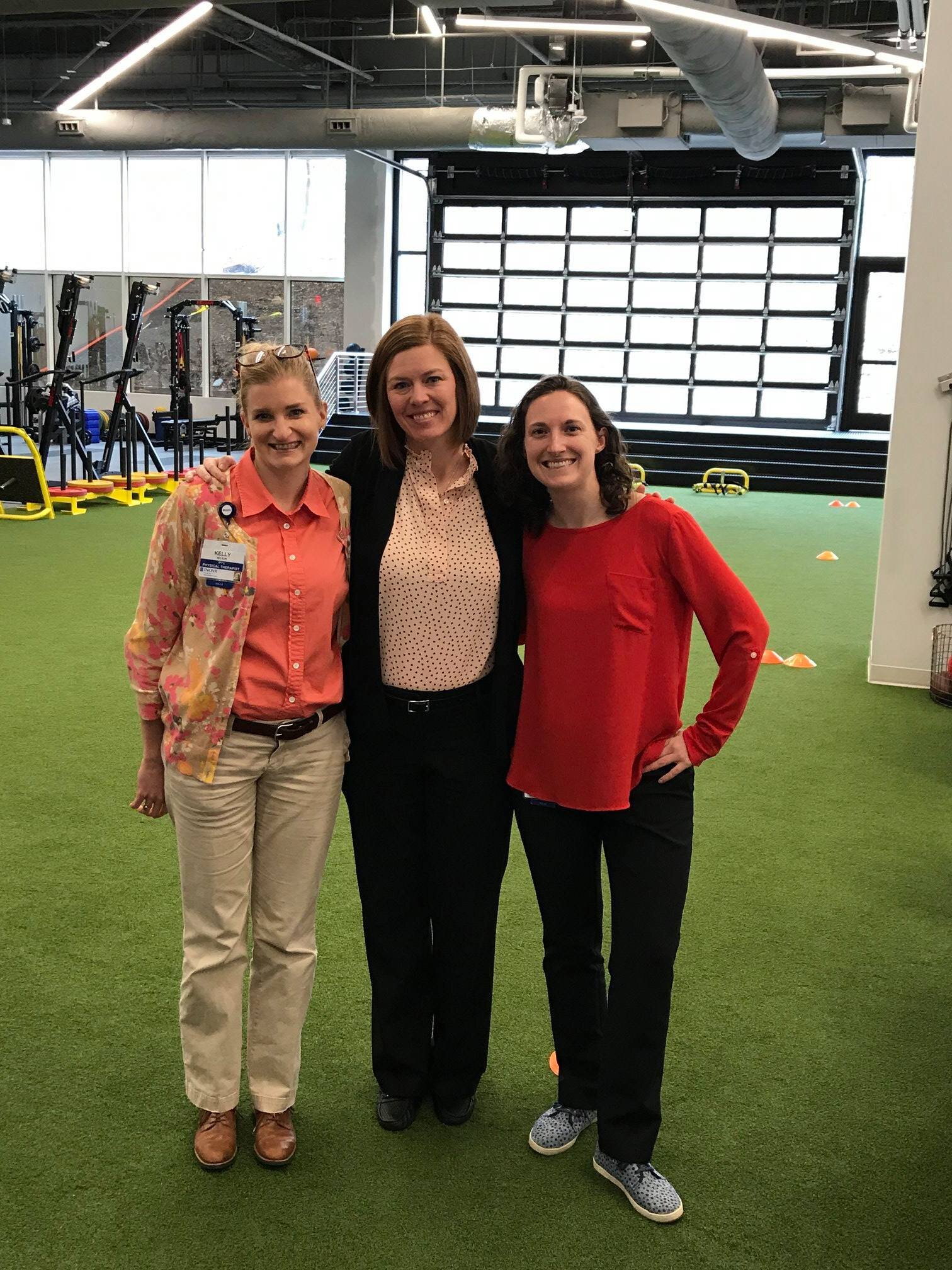
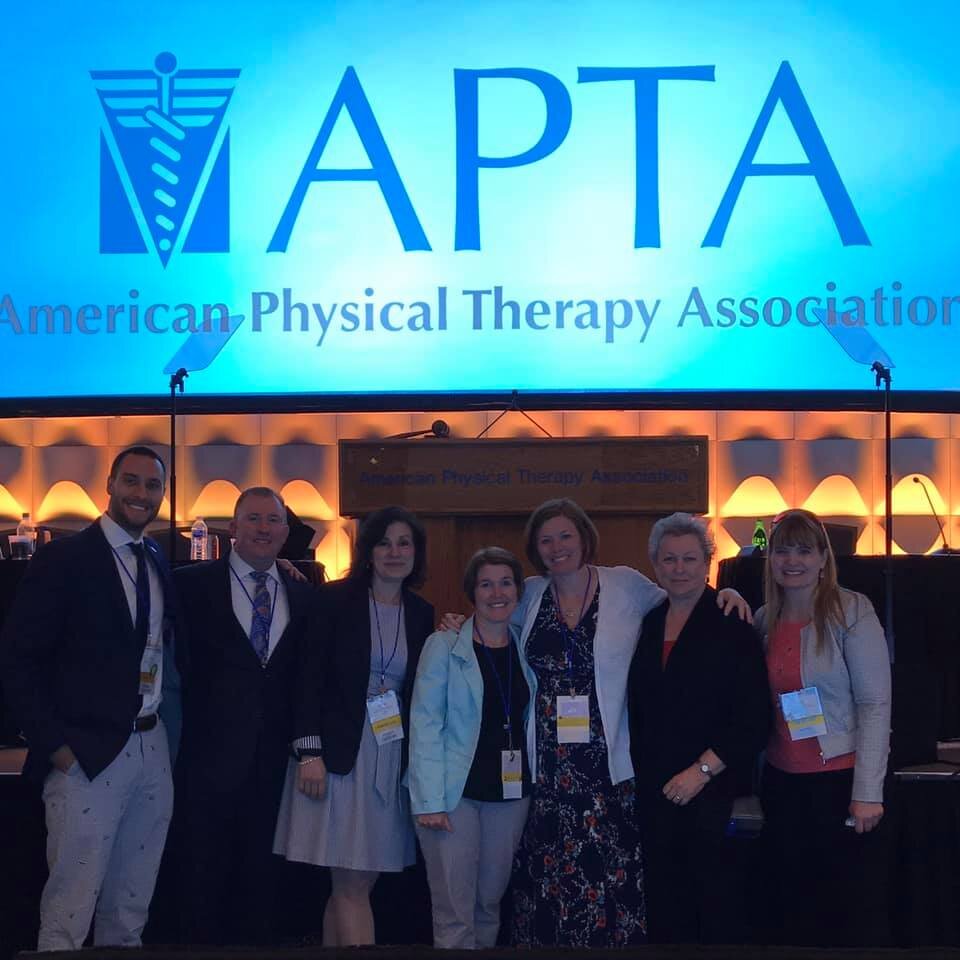
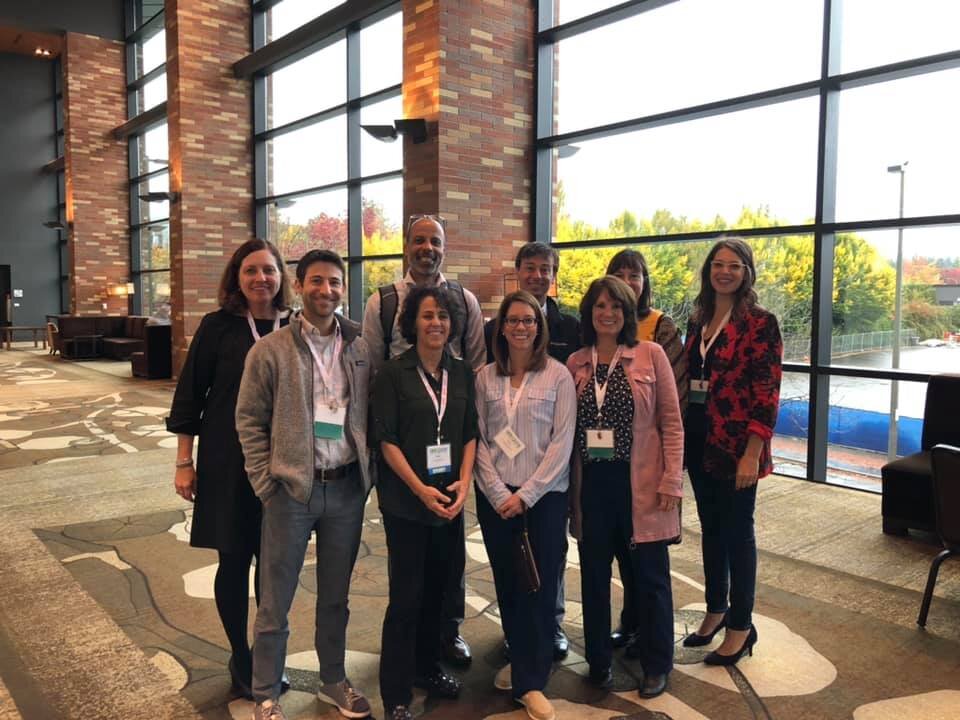

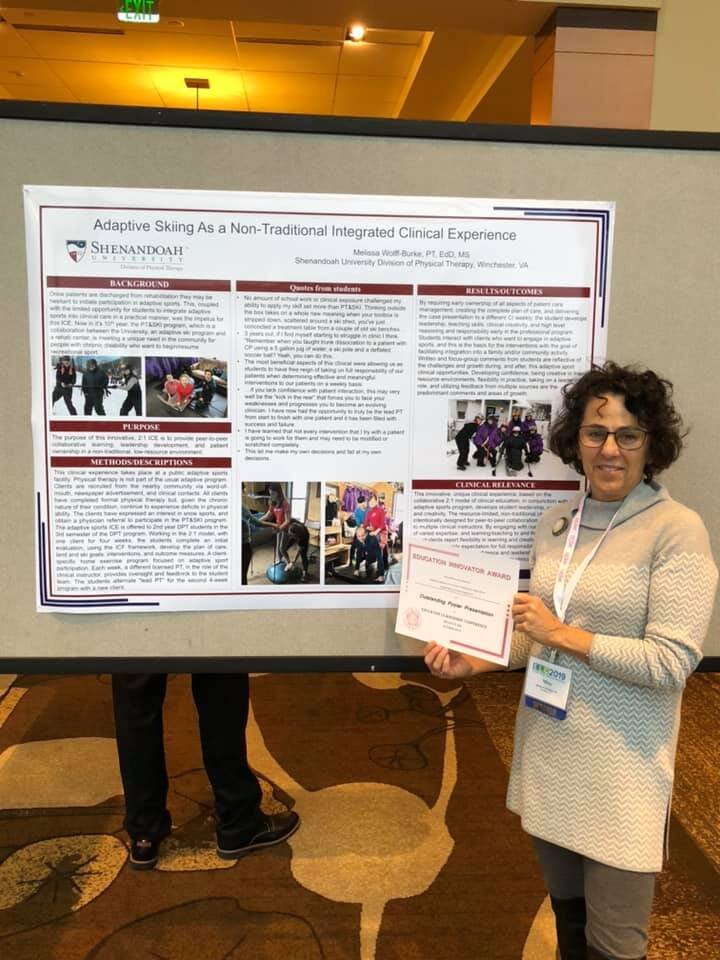
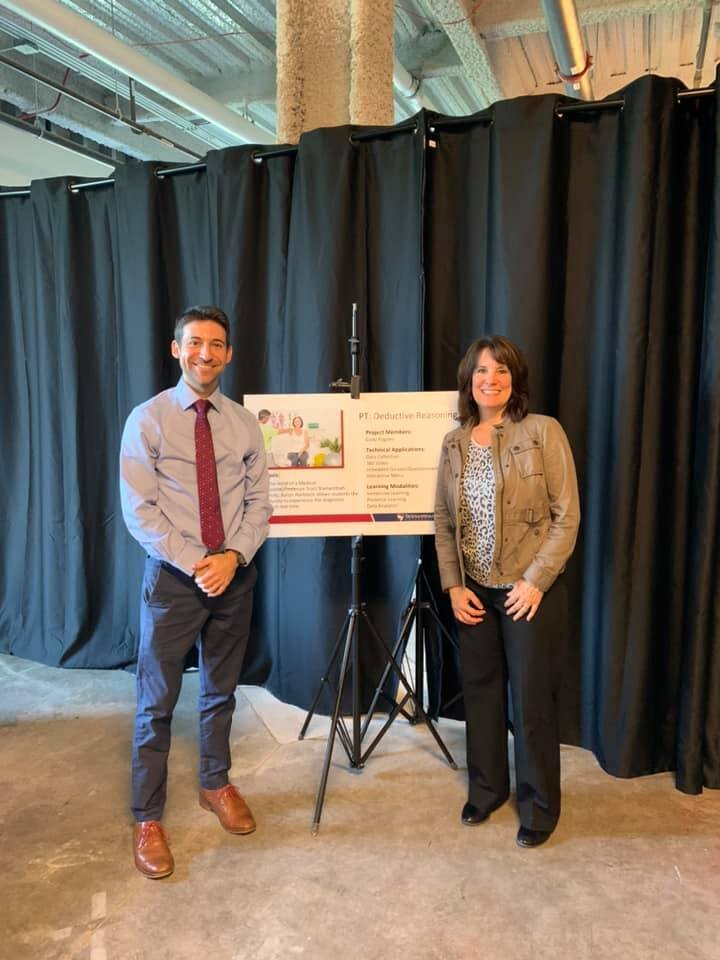

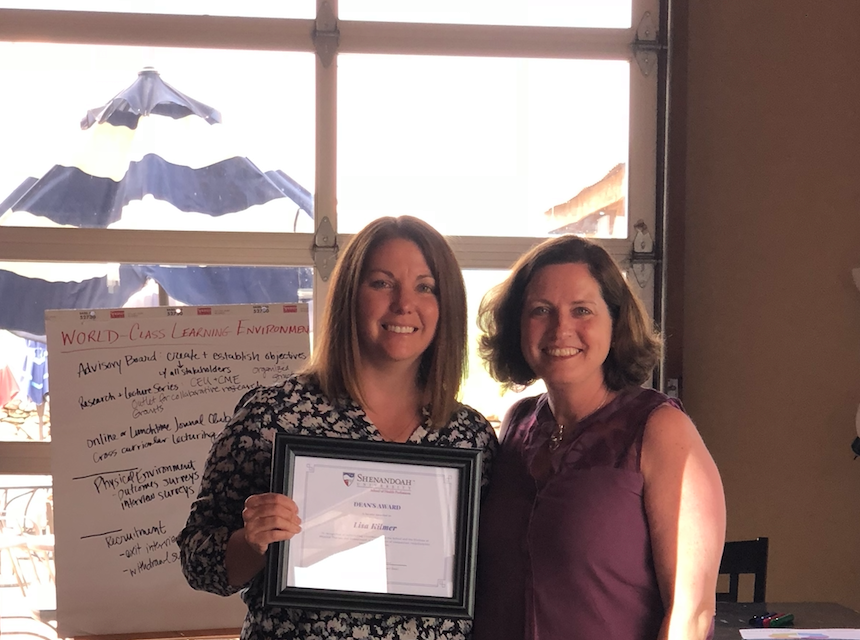

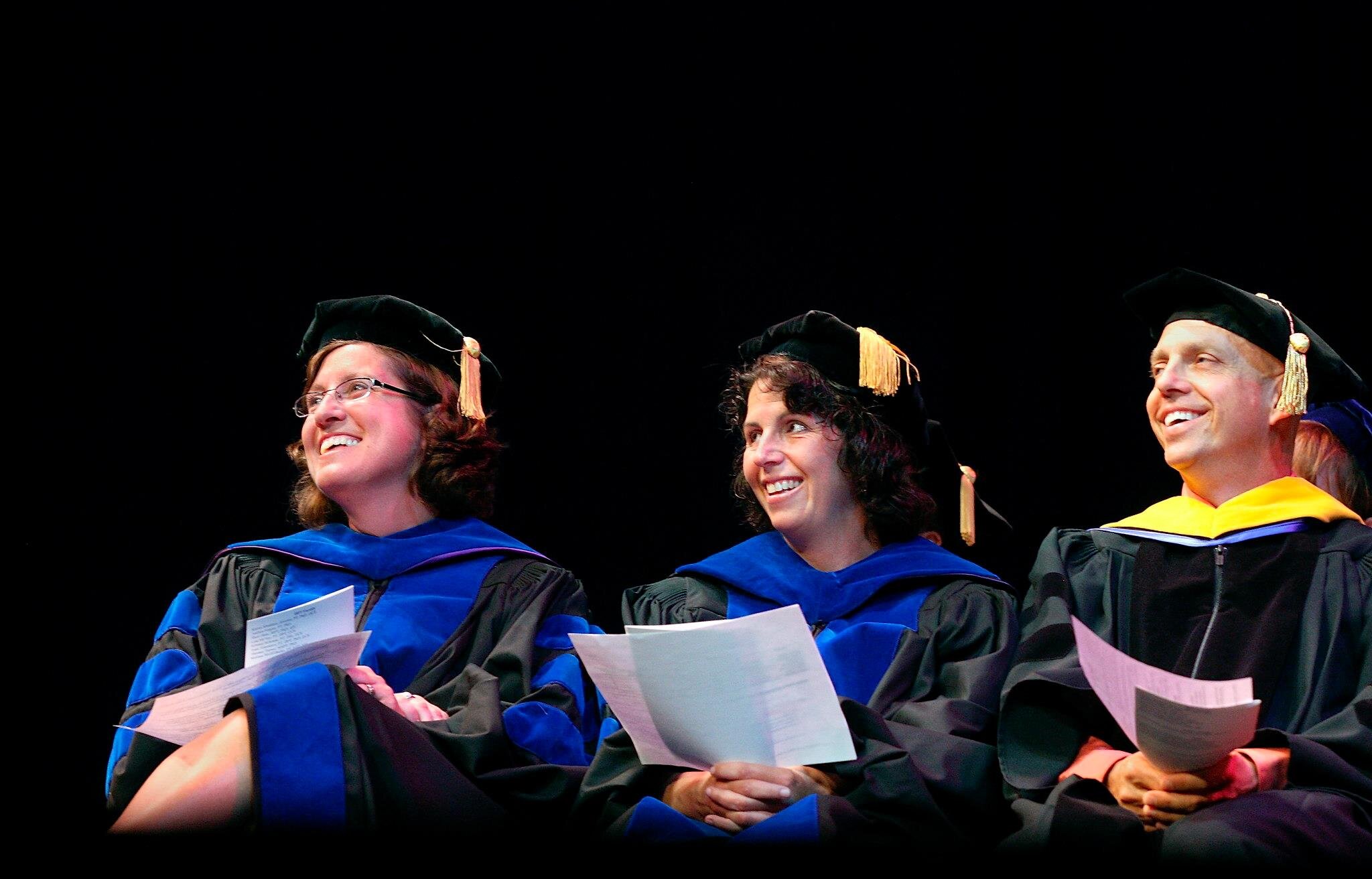
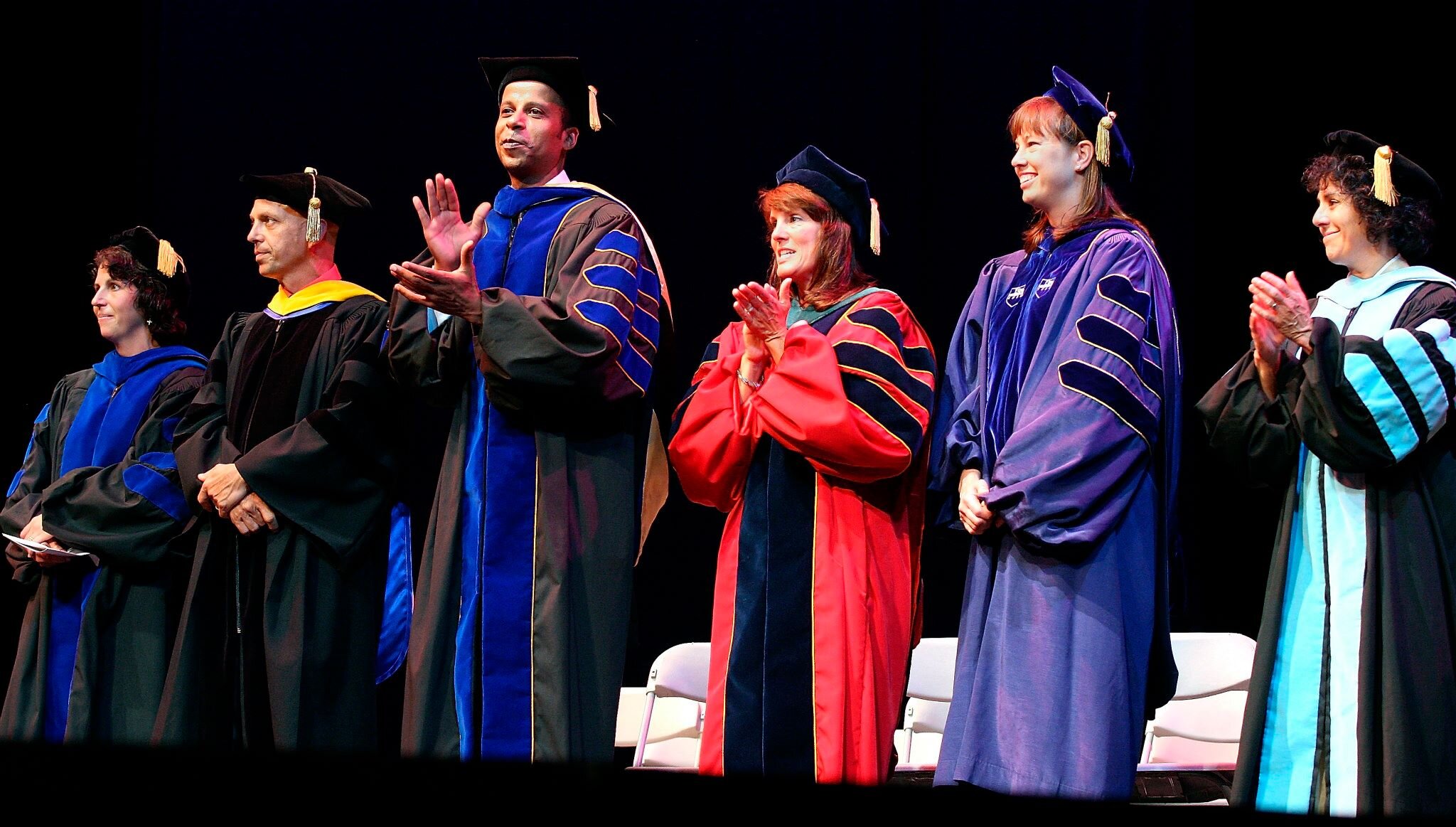
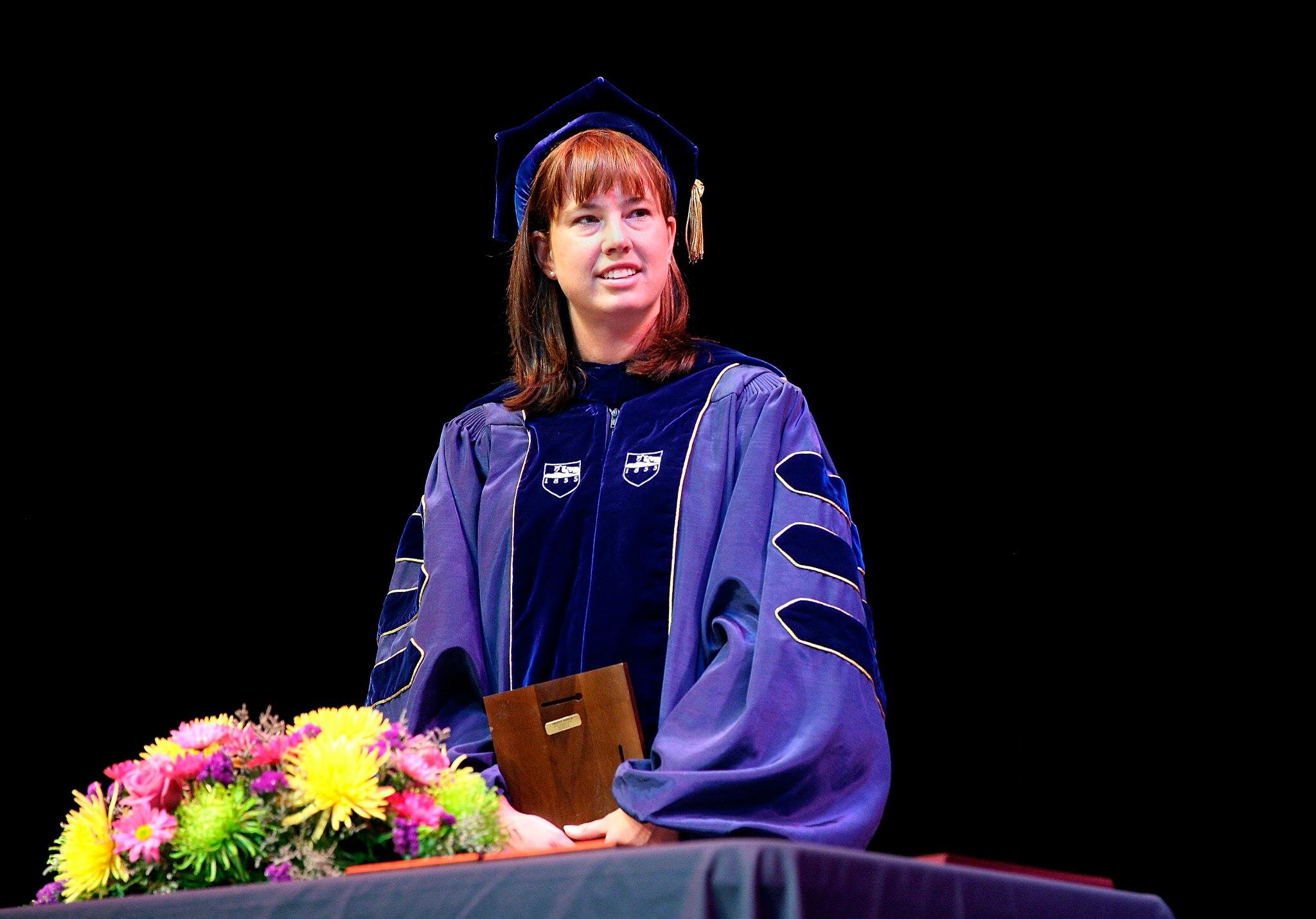

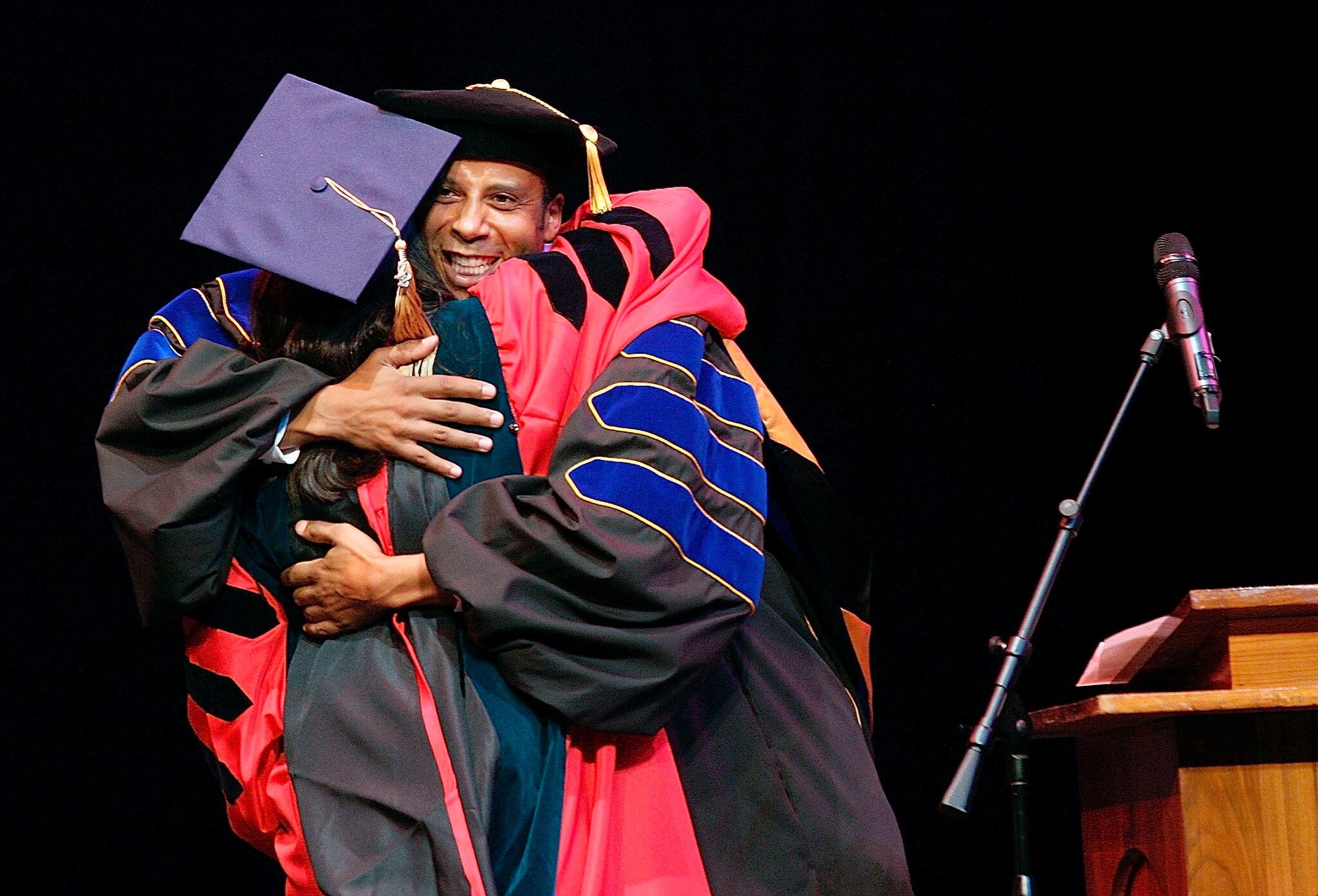
We got lots and lots of clinical experience!
Clinical Education is an integral part in the curriculum of the DPT program at Shenandoah! We begin clinical practice in our first year (second semester!!), and clinical practice opportunities continue to graduation. We are mentored by some of the most accomplished clinicians in all practice areas of ambulatory and non-ambulatory care. With over 250 affiliates, SUPT is able to place students in local, regional, national, and even international settings. The really great thing is that we have the option to choose where we want to complete our clinical rotations and do not utilize any automatic placement type of system. The program uses an online system called Exxat to organize all of our clinical experience information. For our part-time clinical experiences, we are required to make a “wishlist” of potential clinics we would like to go to. This wishlist consists of 10 slots and the slots are ranked from 1-10; 1 being our top pick and 10 being our last pick. My program has affiliations with tons of great different clinics. So as far as I know, all students in my class have been placed at clinics that were included on their wishlist. All part-time clinicals are once a week, so most students choose to complete these rotations at relatively local clinics with a short commute. For our full-time clinicals, we can basically choose to go anywhere we want - yes, ANYWHERE we want! Instead of having a wishlist, we can pick to go to pretty much any clinic across the country that has an affiliation with our program. If the clinic we want to go to does not have a current contract with our program, then there is a process you can go through to get them contracted. We have unique clinical experiences available, such as PT and Ski where students utilize adaptive skiing and snowboarding to treat individuals with spinal cord injuries, amputations, or degenerative diseases of the nervous system and week-long service trips to international locations. The opportunities really are endless!



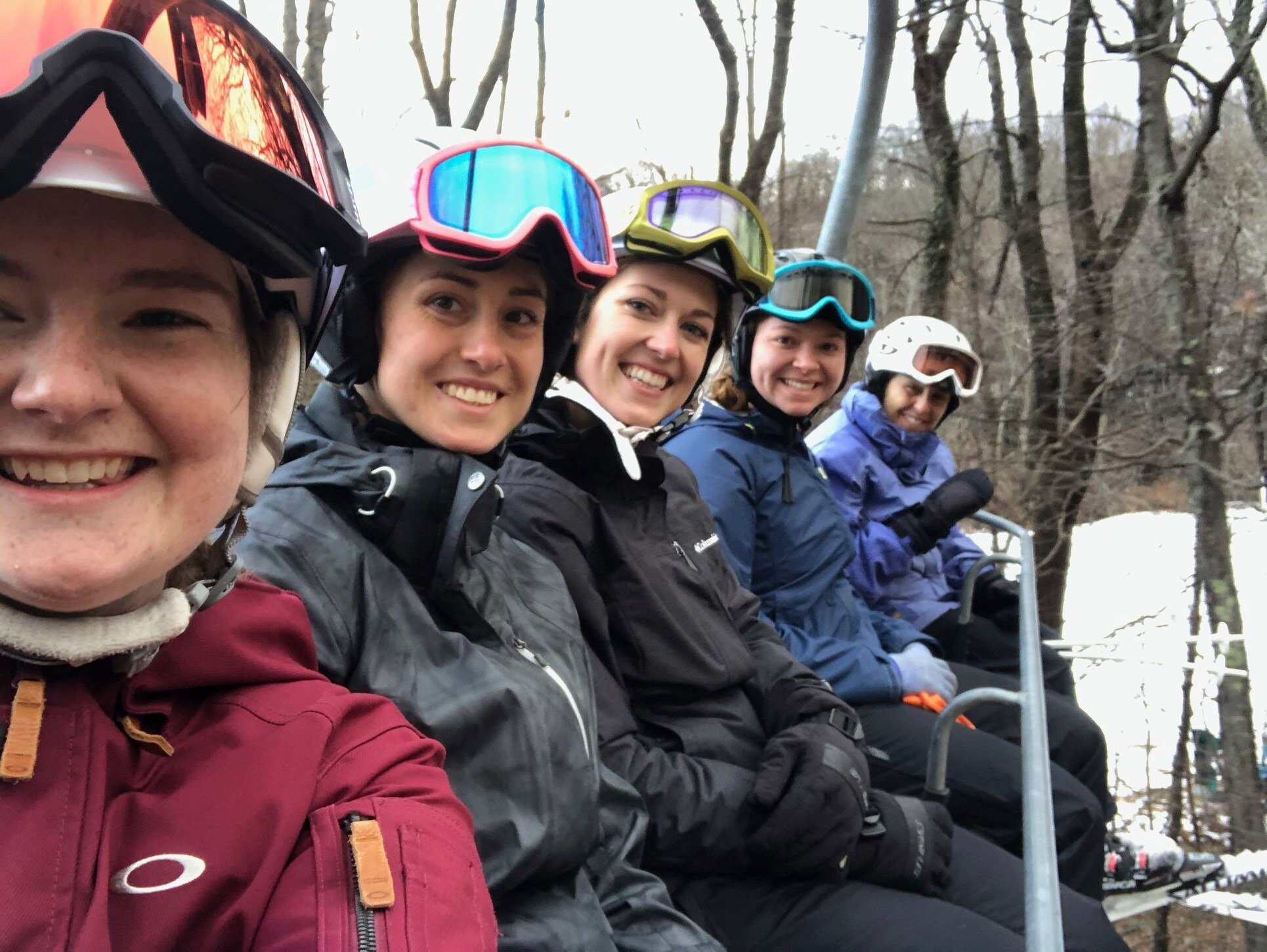
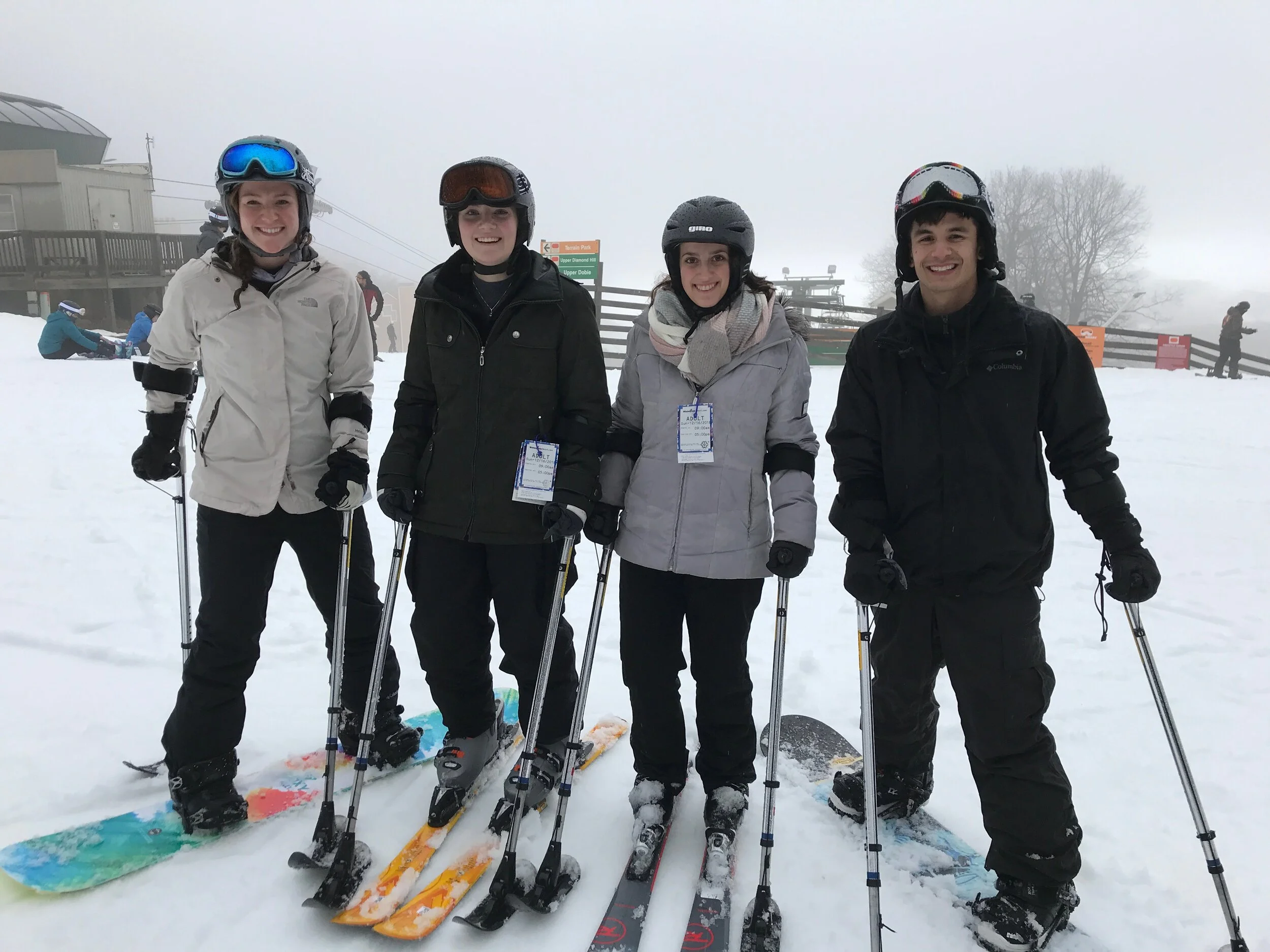
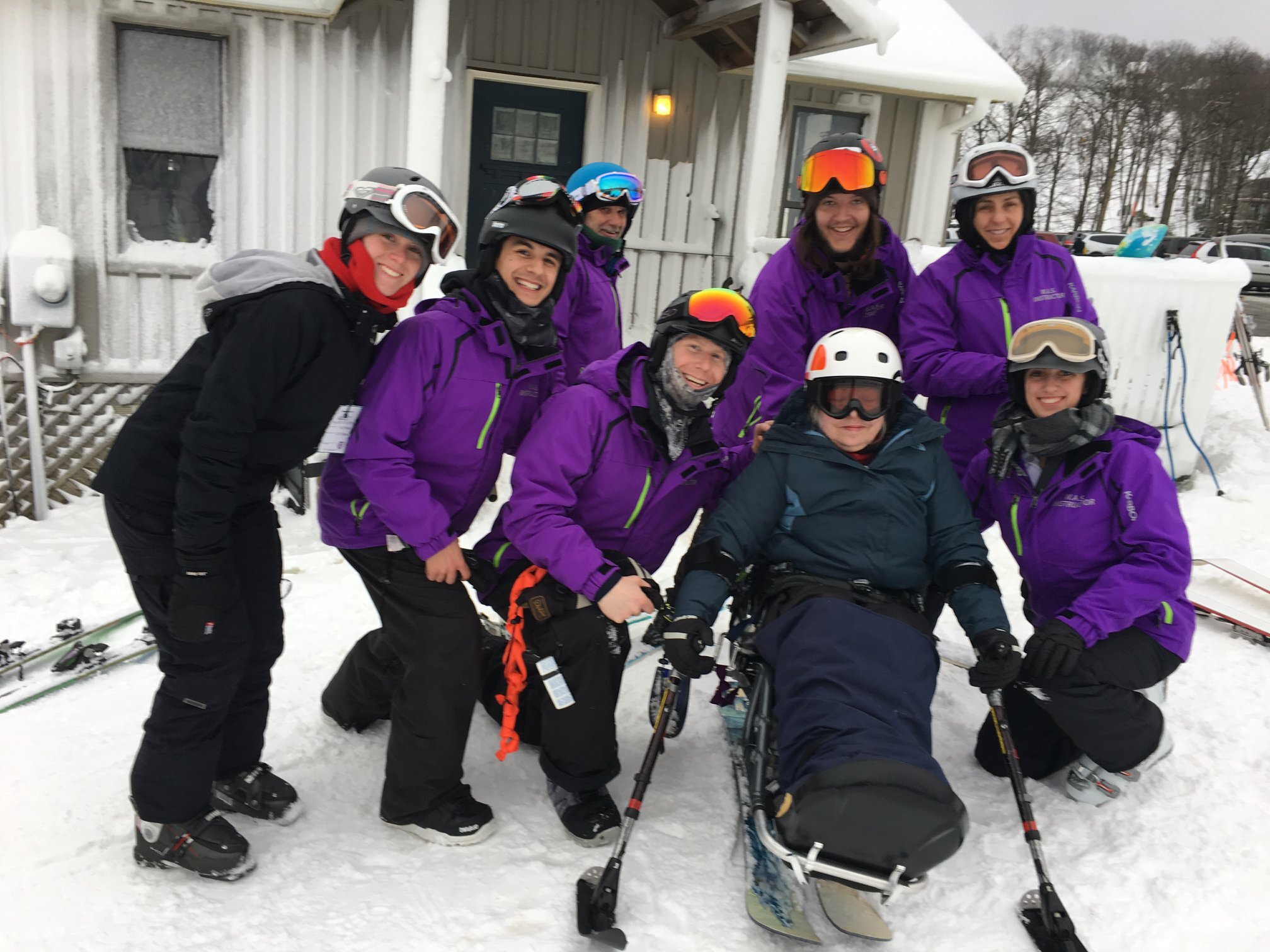
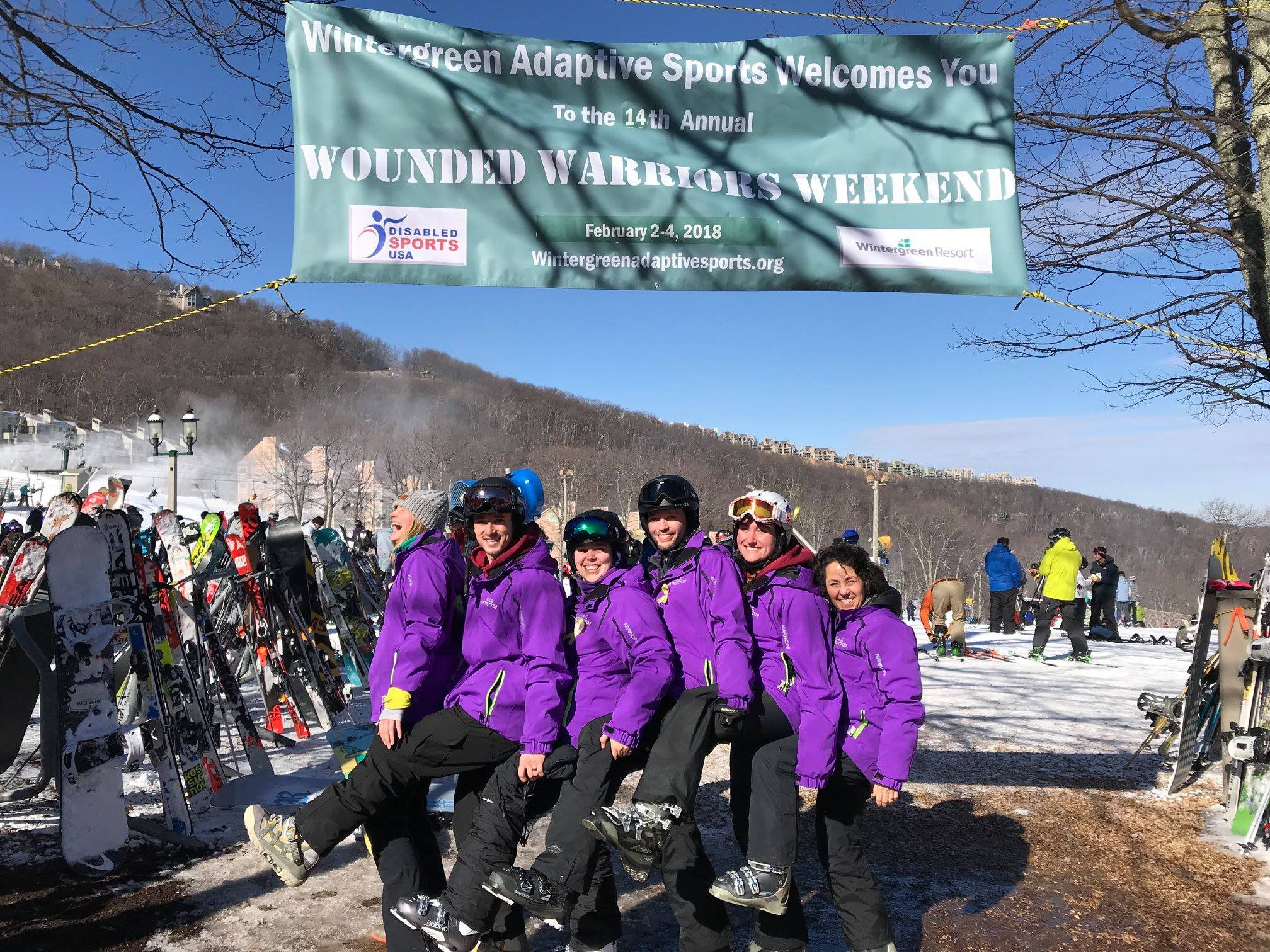
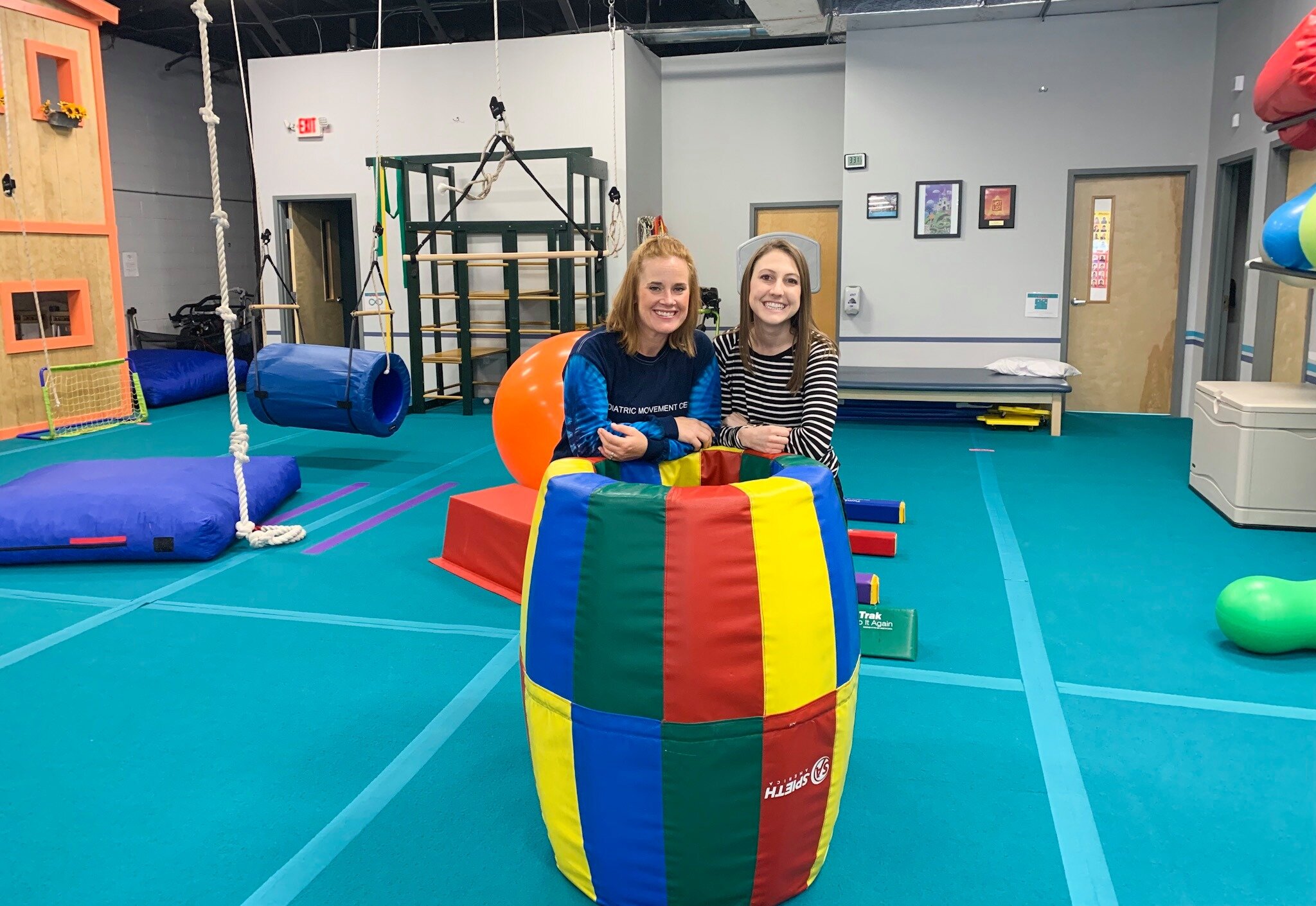
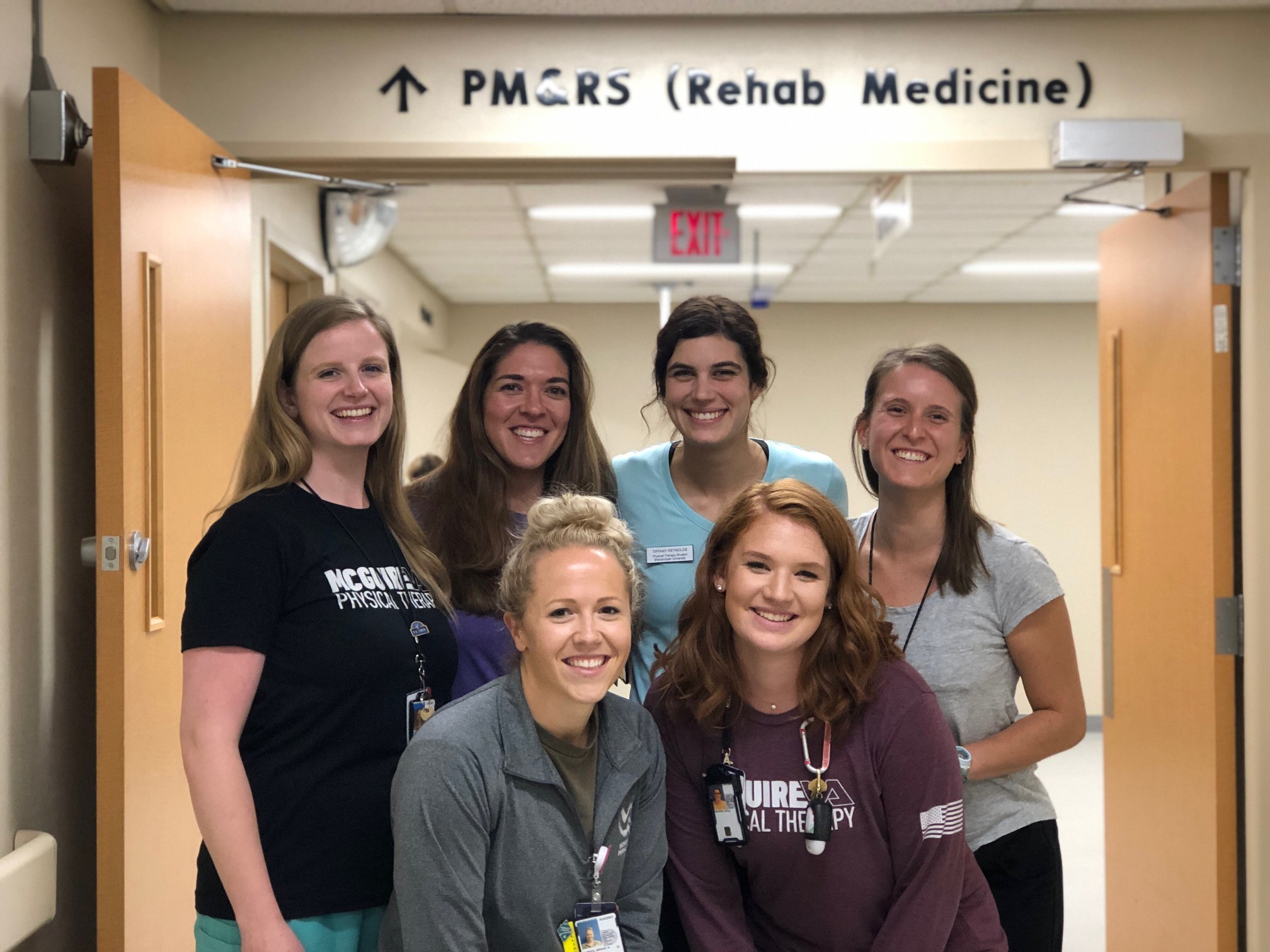
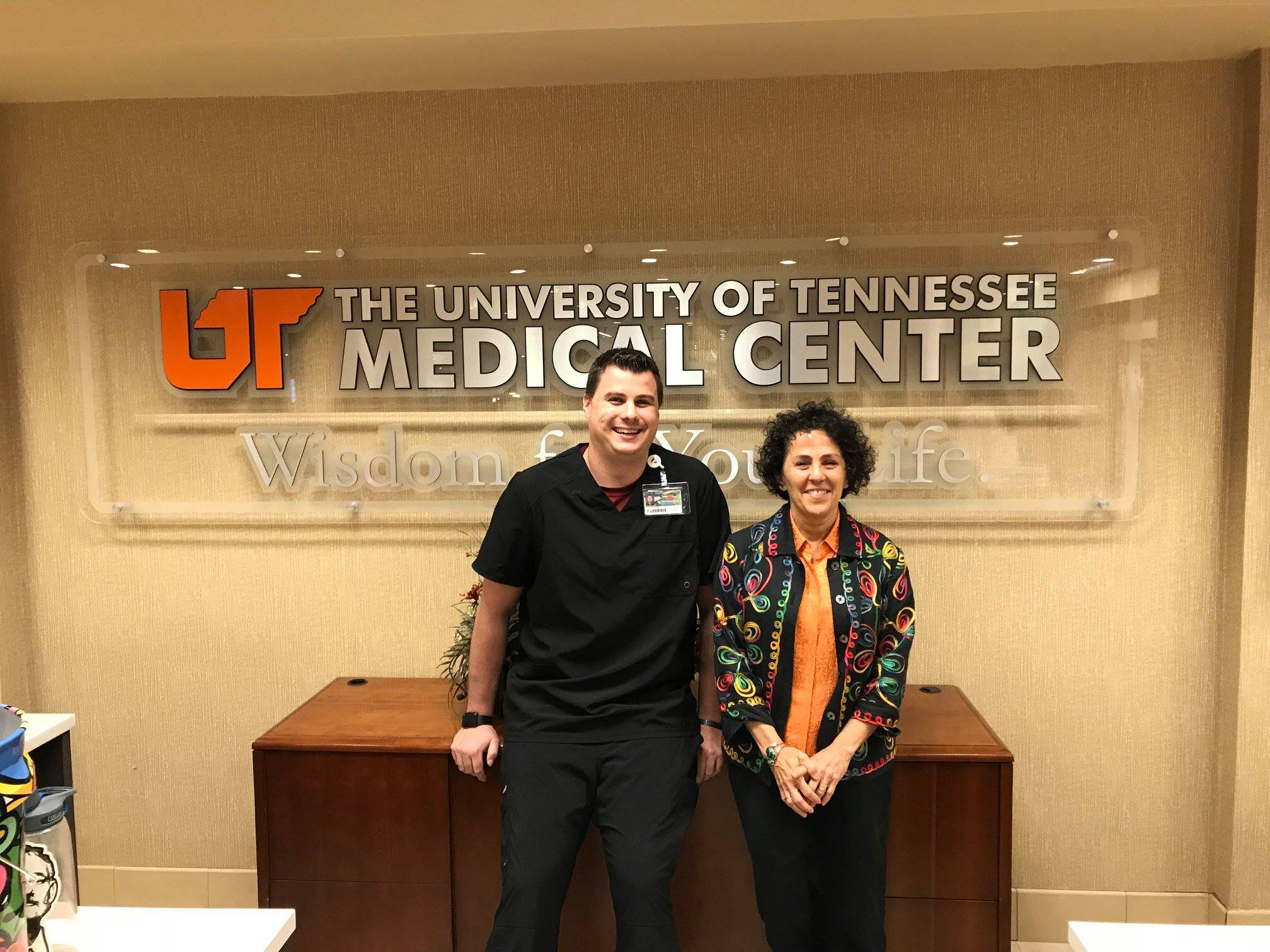
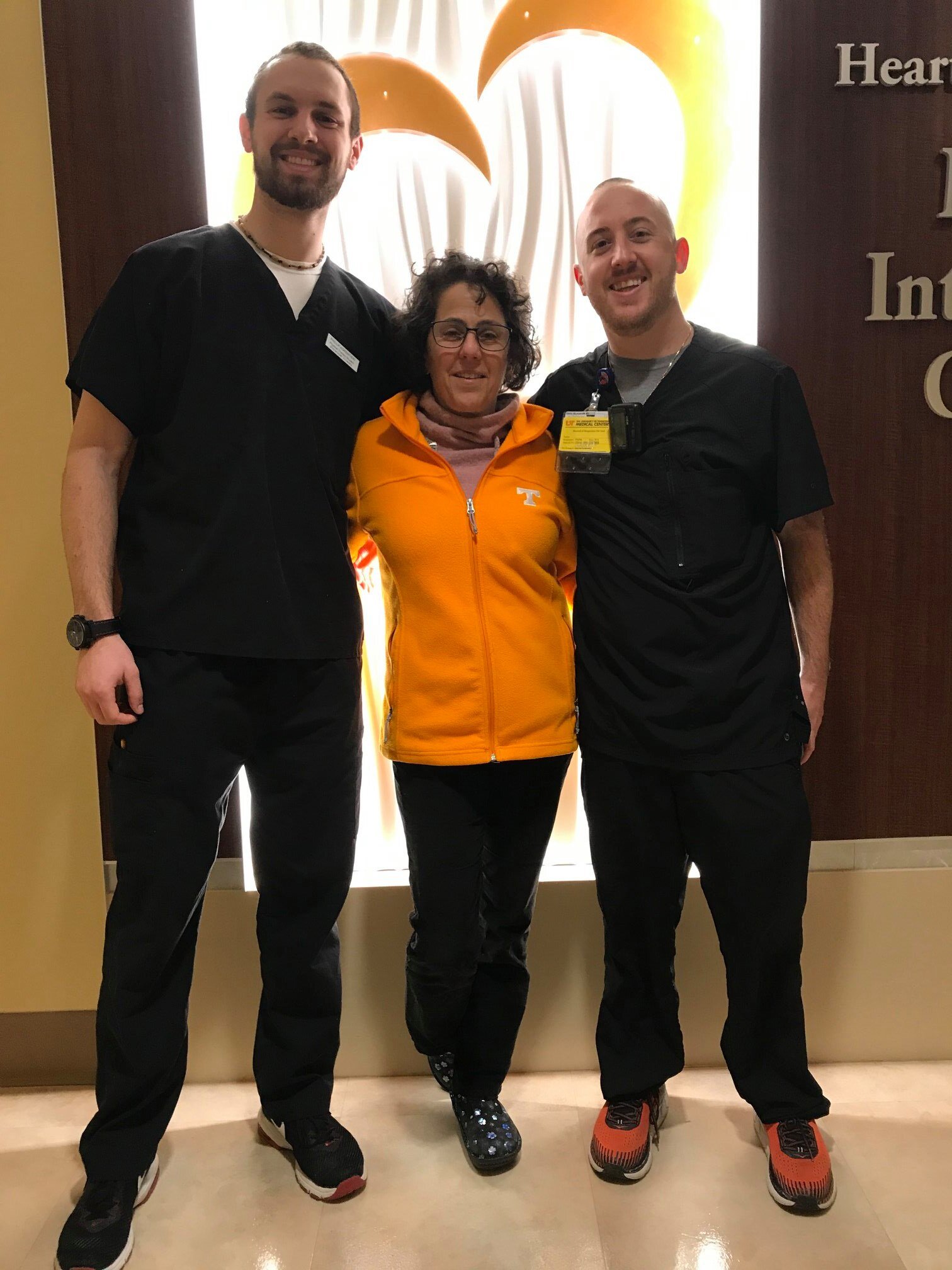

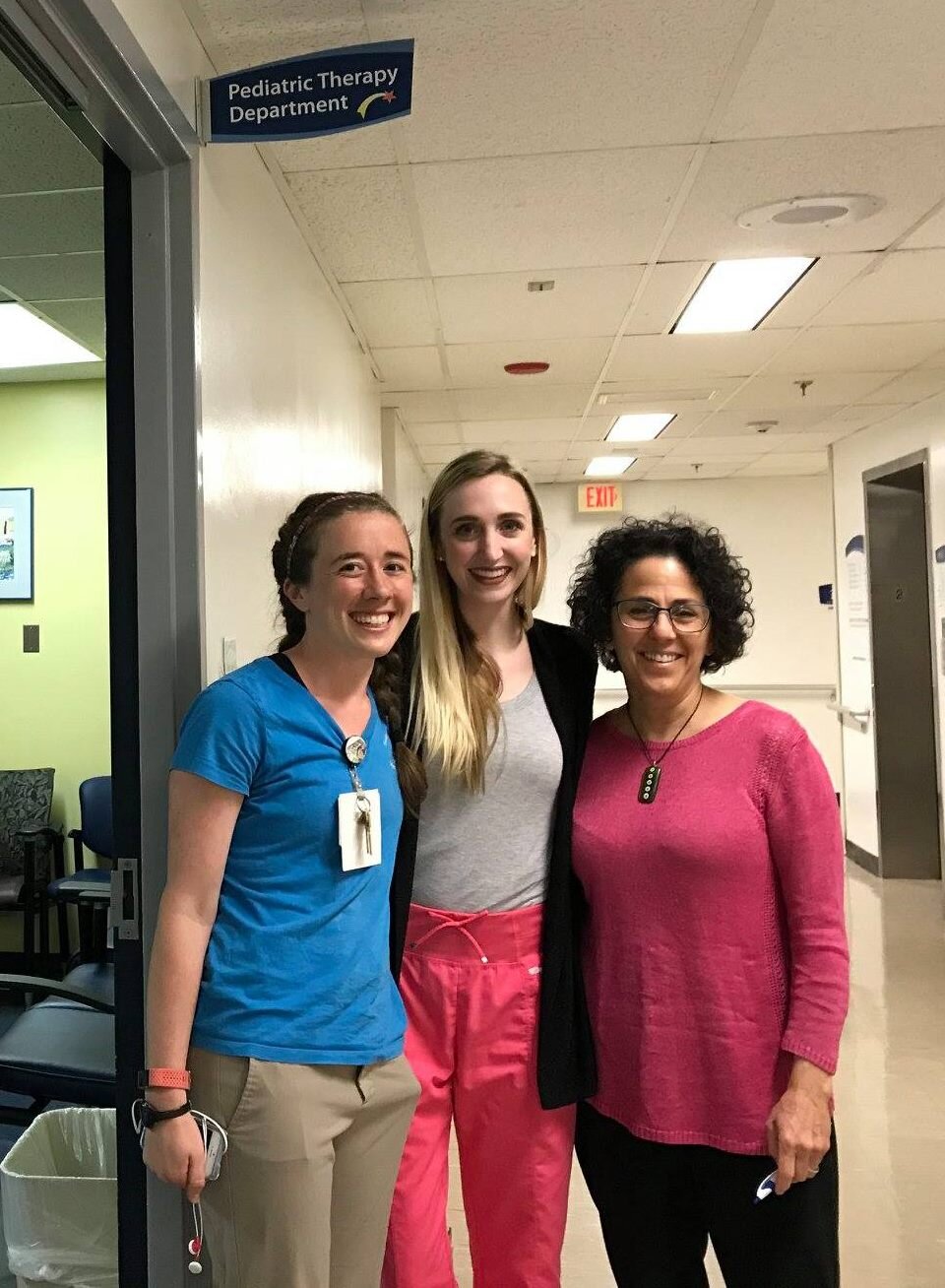
We offer many unique ways to volunteer and provide community service!
SUPT has a commitment to community and global service and many opportunities for international travel, growth, and practice. Annually, we have many students complete experiences in other countries through university organizations such as SUPT Thrive and Global Citizenship Project (GCP). SUPT Thrive is a student-led service organization that seeks to provide rehabilitation services and education to medically underserved international communities in hopes to improve quality of life. Thrive’s vision is to foster the development of global citizens within the SUPT program by providing service learning opportunities in international settings such as Guatemala, Haiti, Ecuador, Belize, and Kenya. The relationships with these communities provide opportunities for participating students and clinicians to expand their cultural awareness and medical competence. Future plans of growth include setting up outreach programs in the United States and further solidifying our clinics abroad. Other unique opportunities available to students include participation in international hunger relief, adaptive aquatics in which students have the opportunity to swim with children with special needs, Adventure Amputee Camp (stated by one of our faculty members), equine therapy, providing pro bone services at our local Sinclair Free Medical Clinic, and so much more!
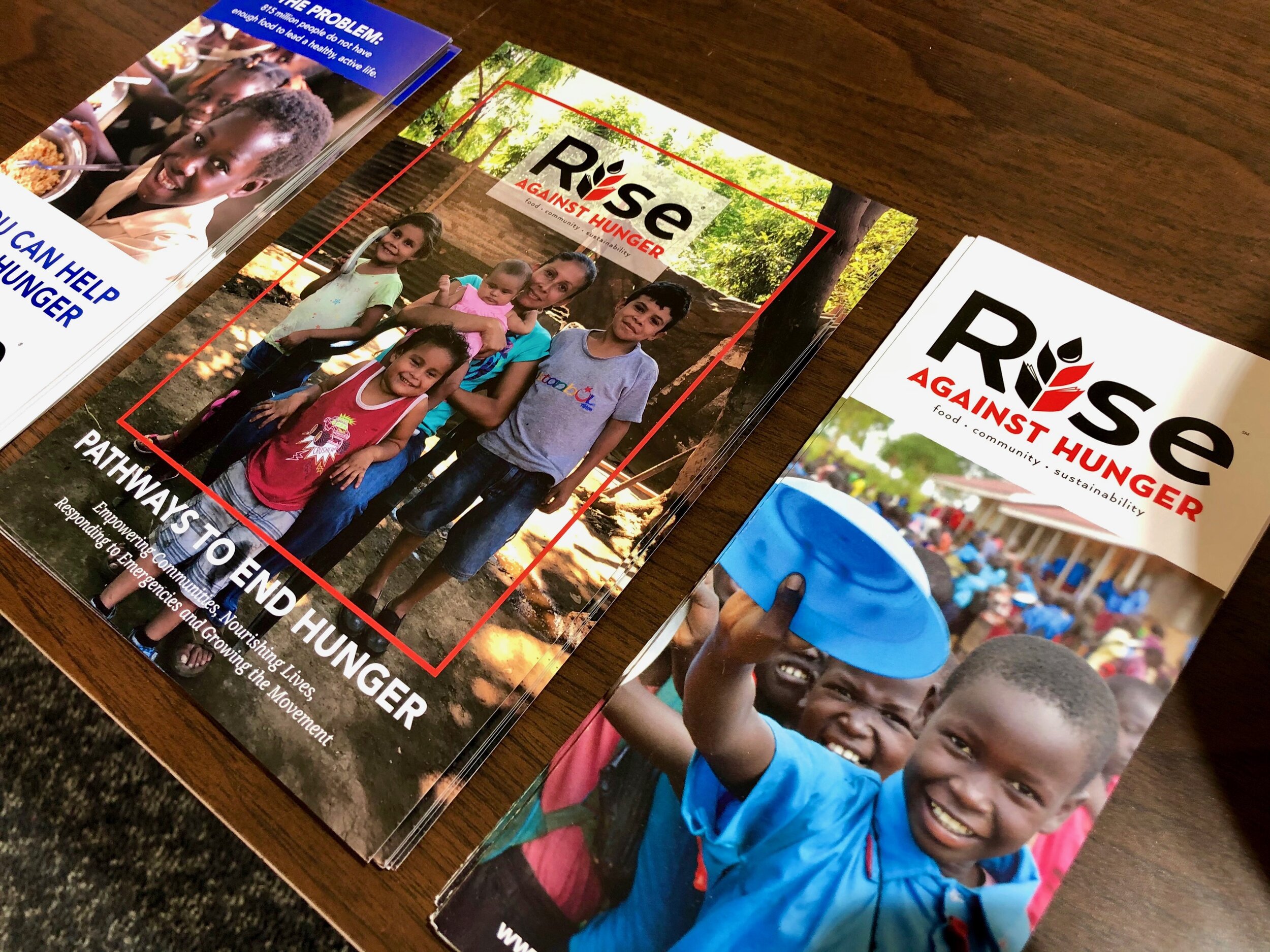
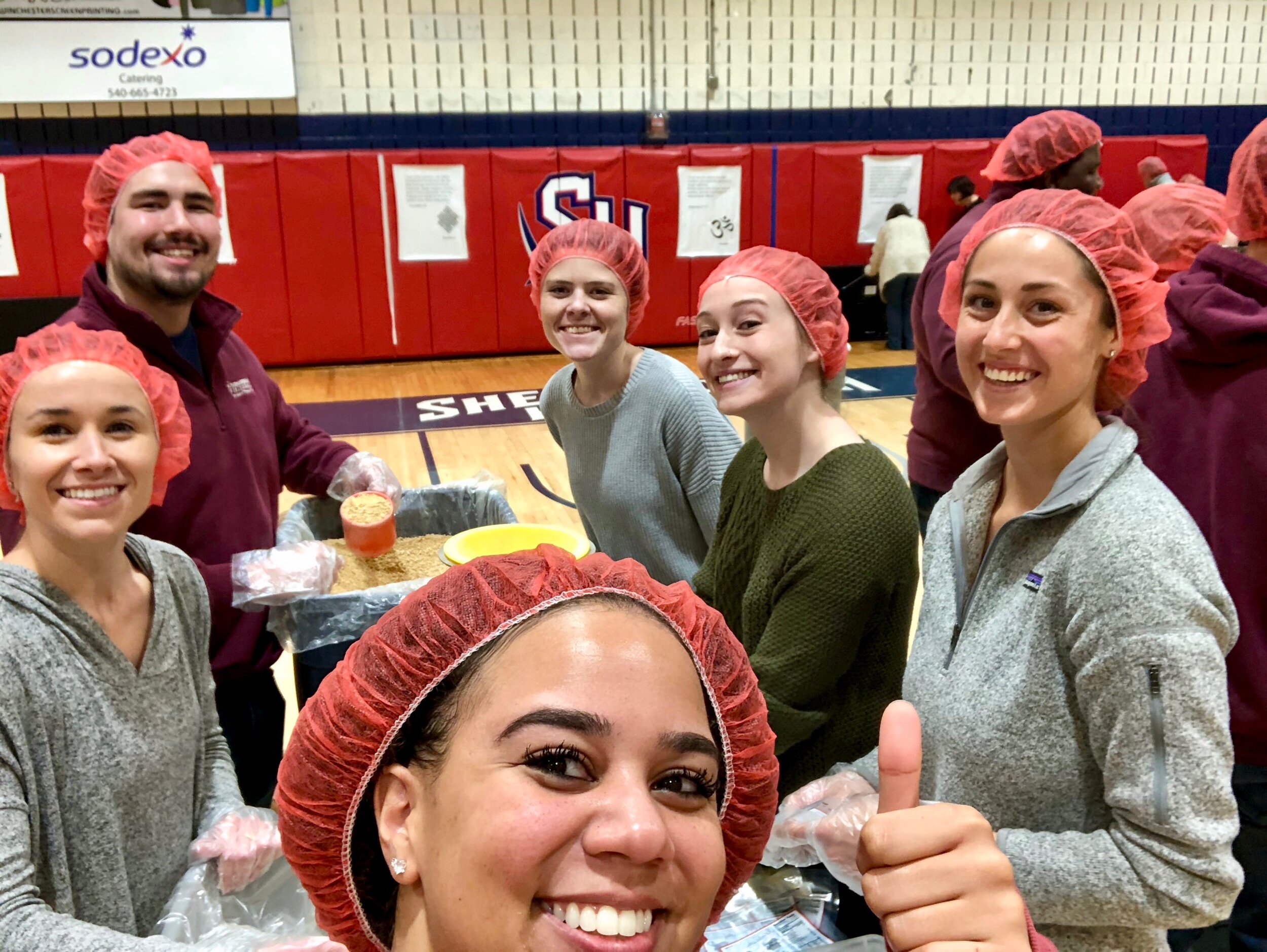
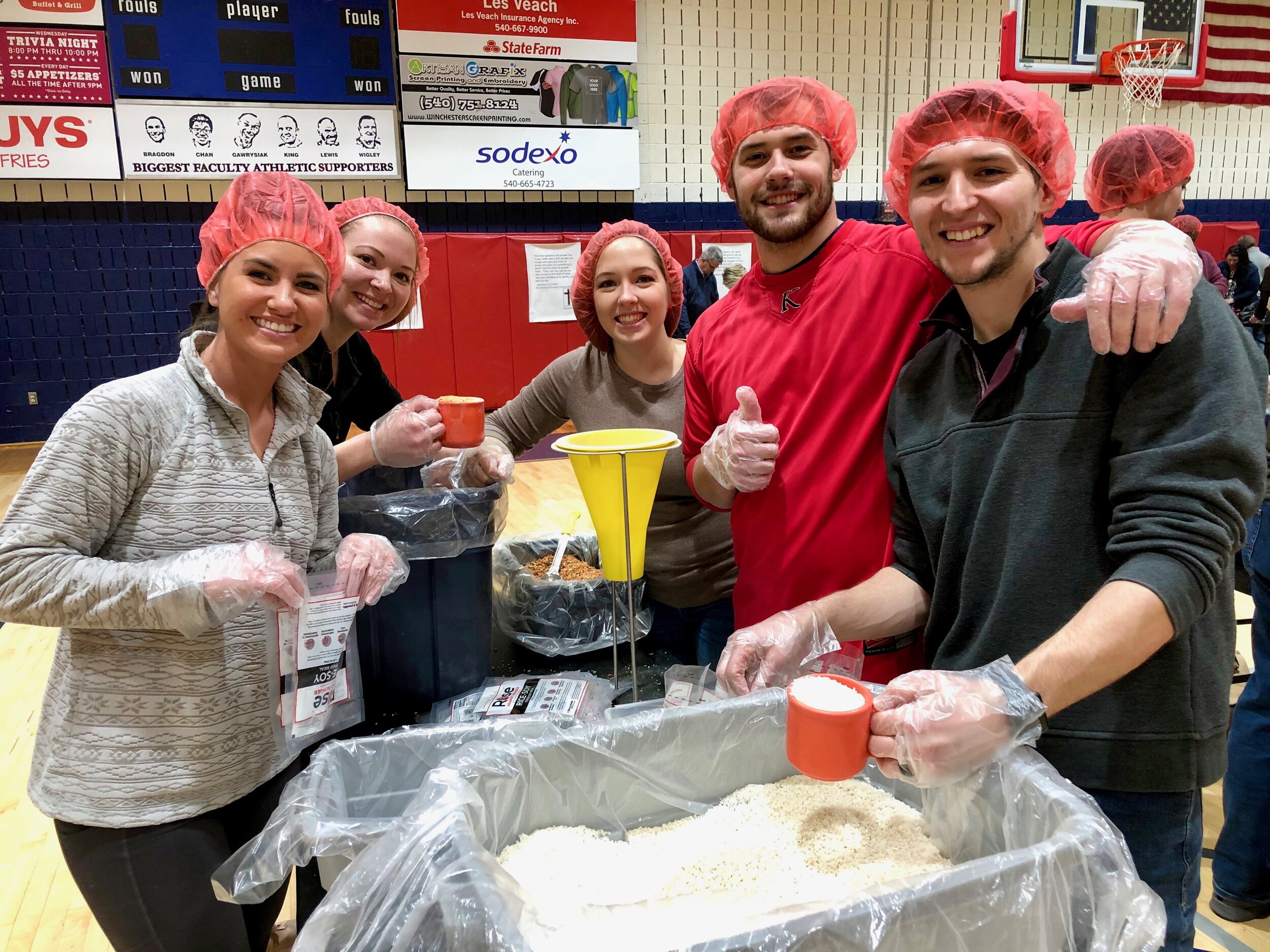
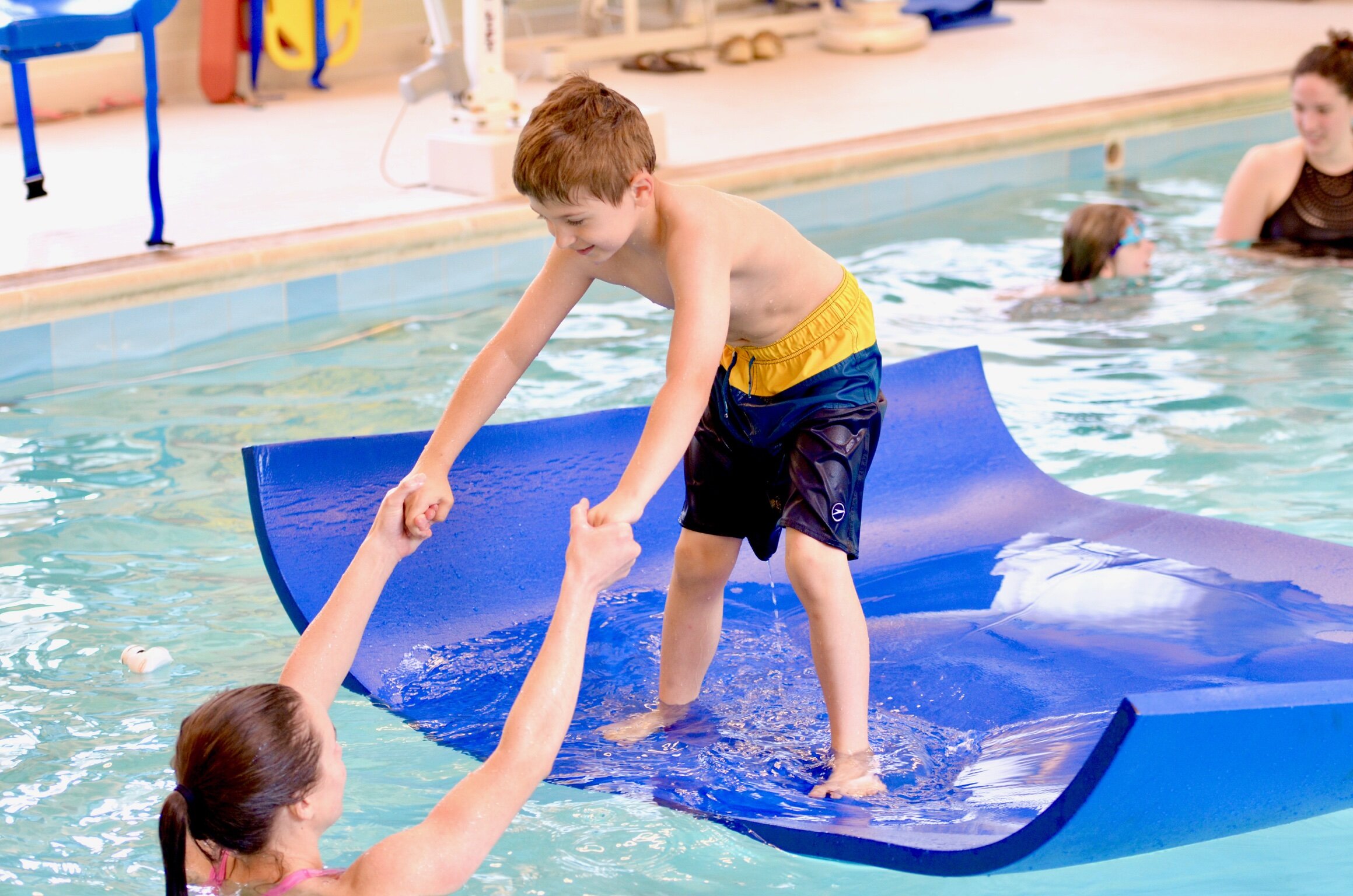
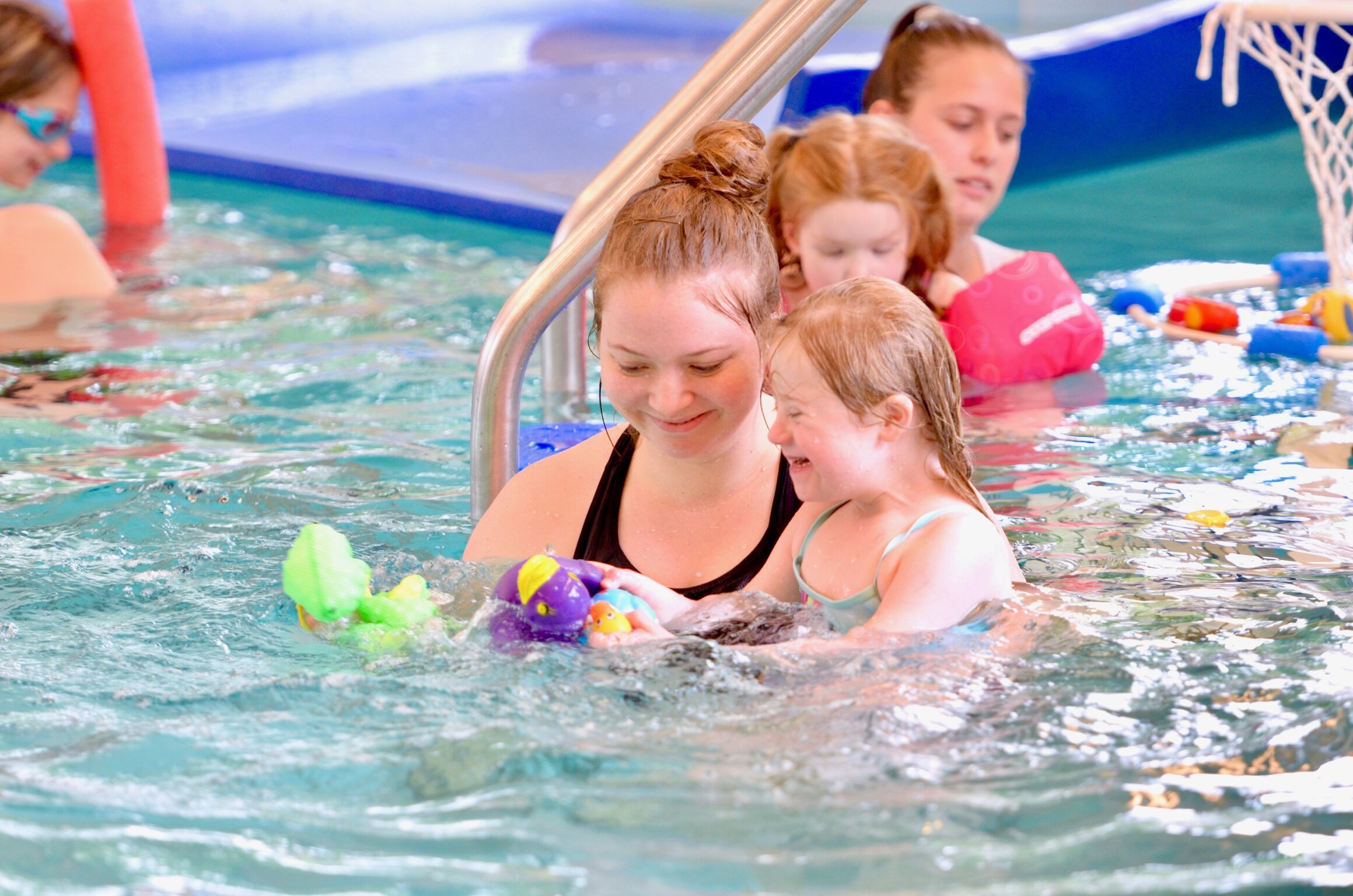
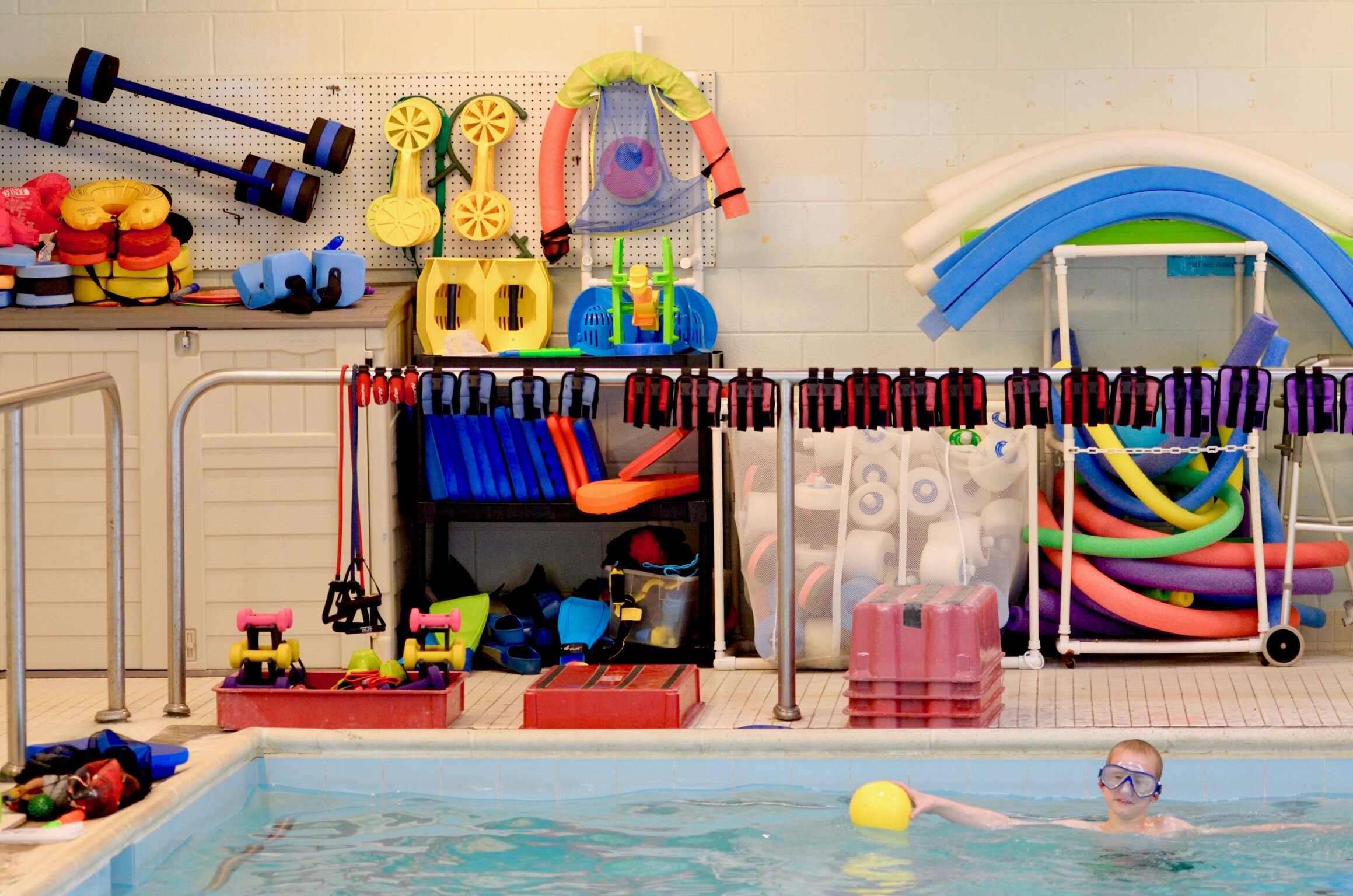
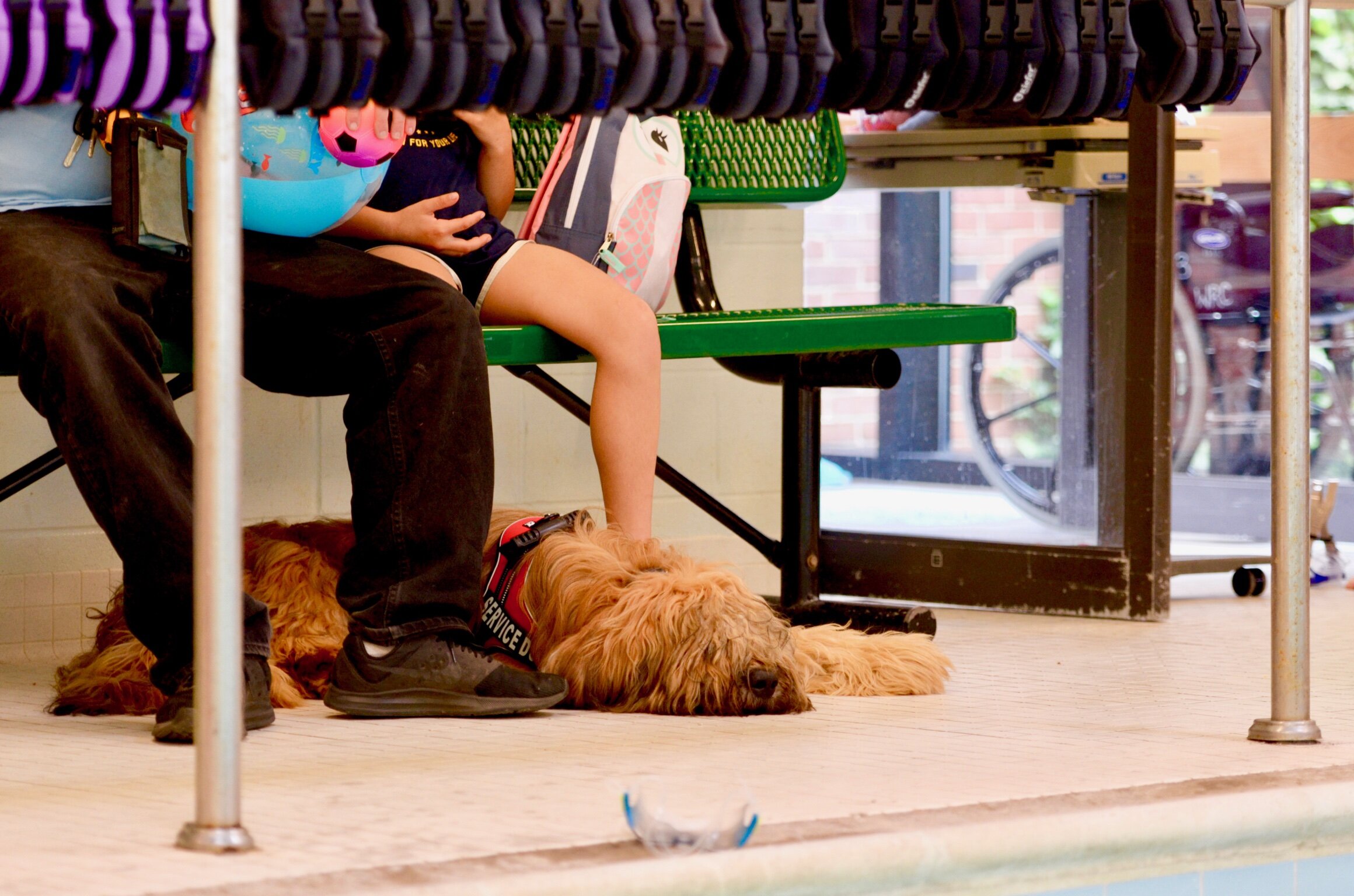
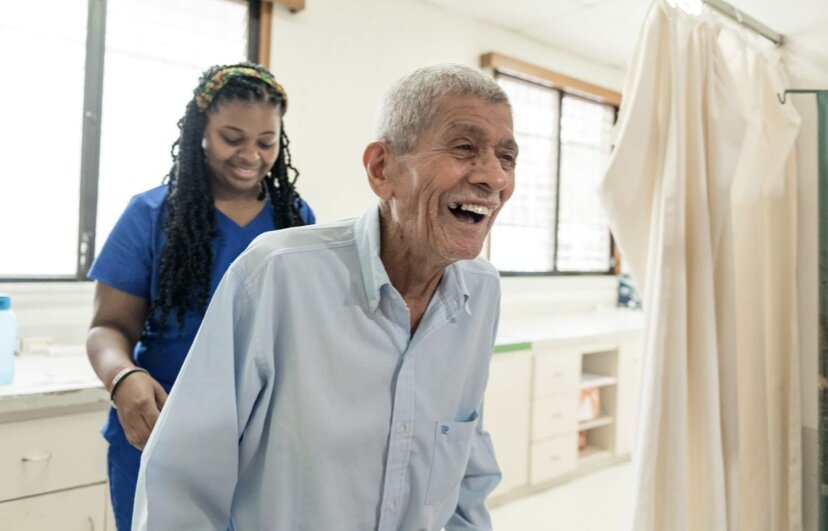
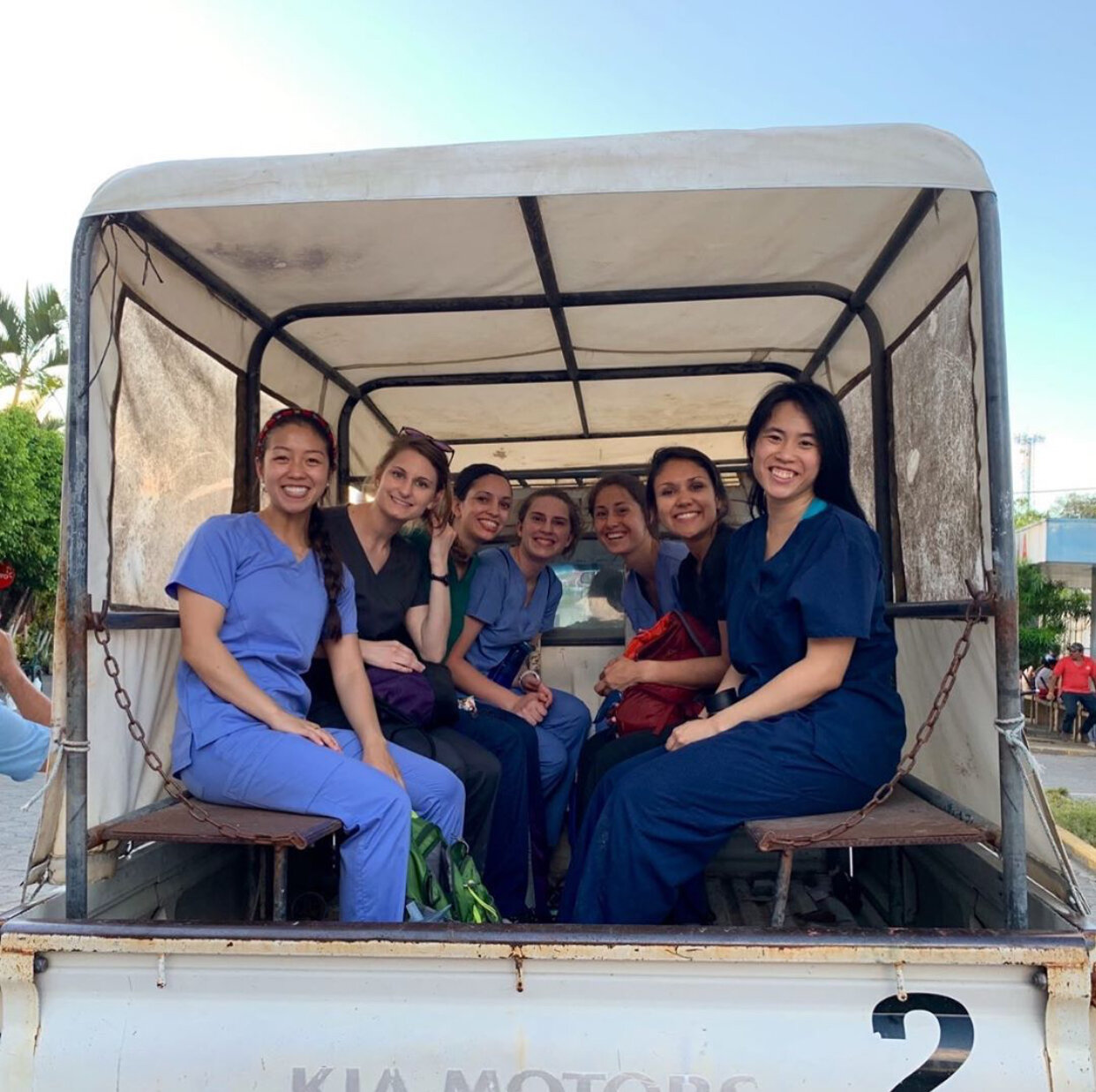
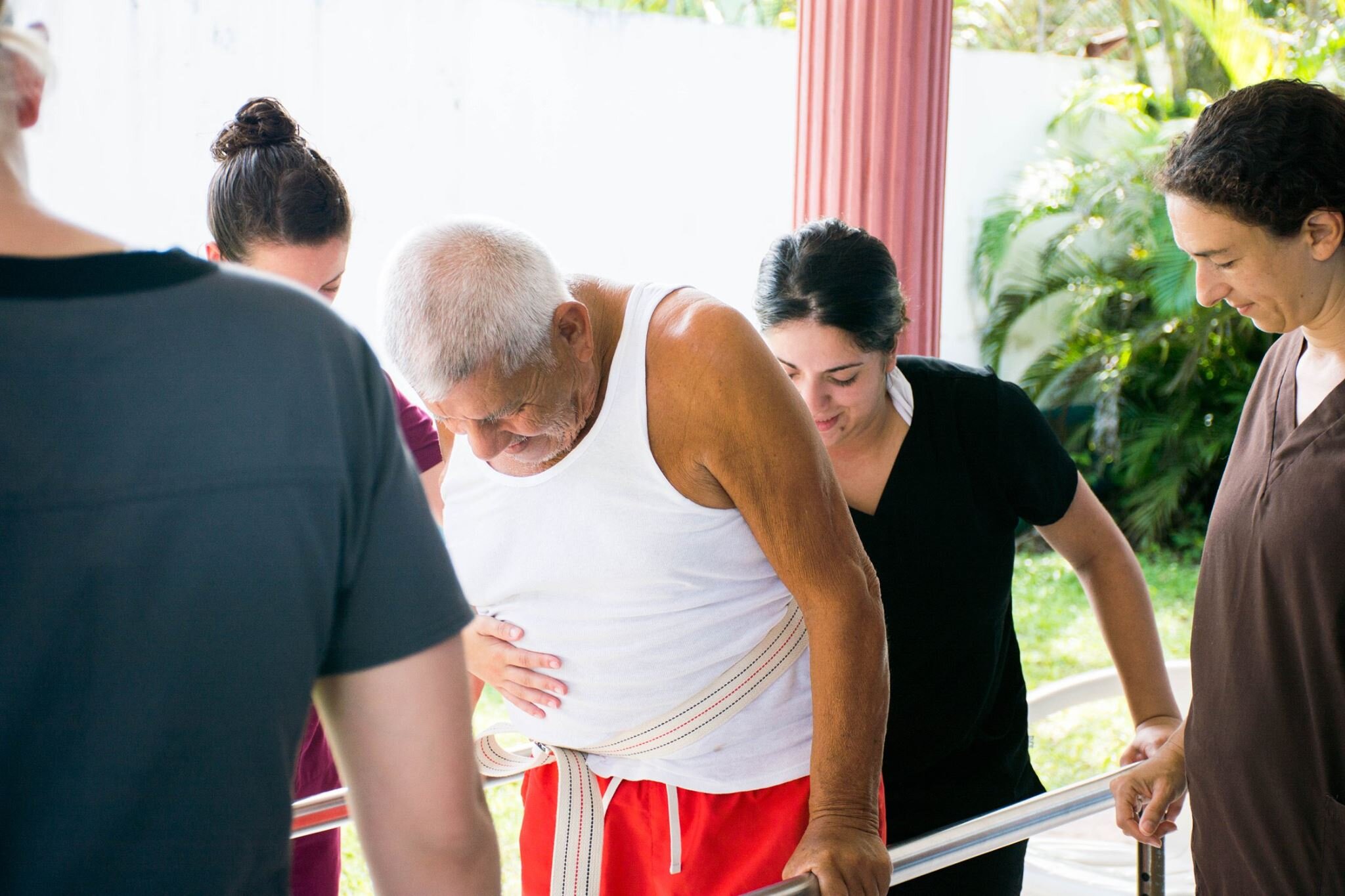
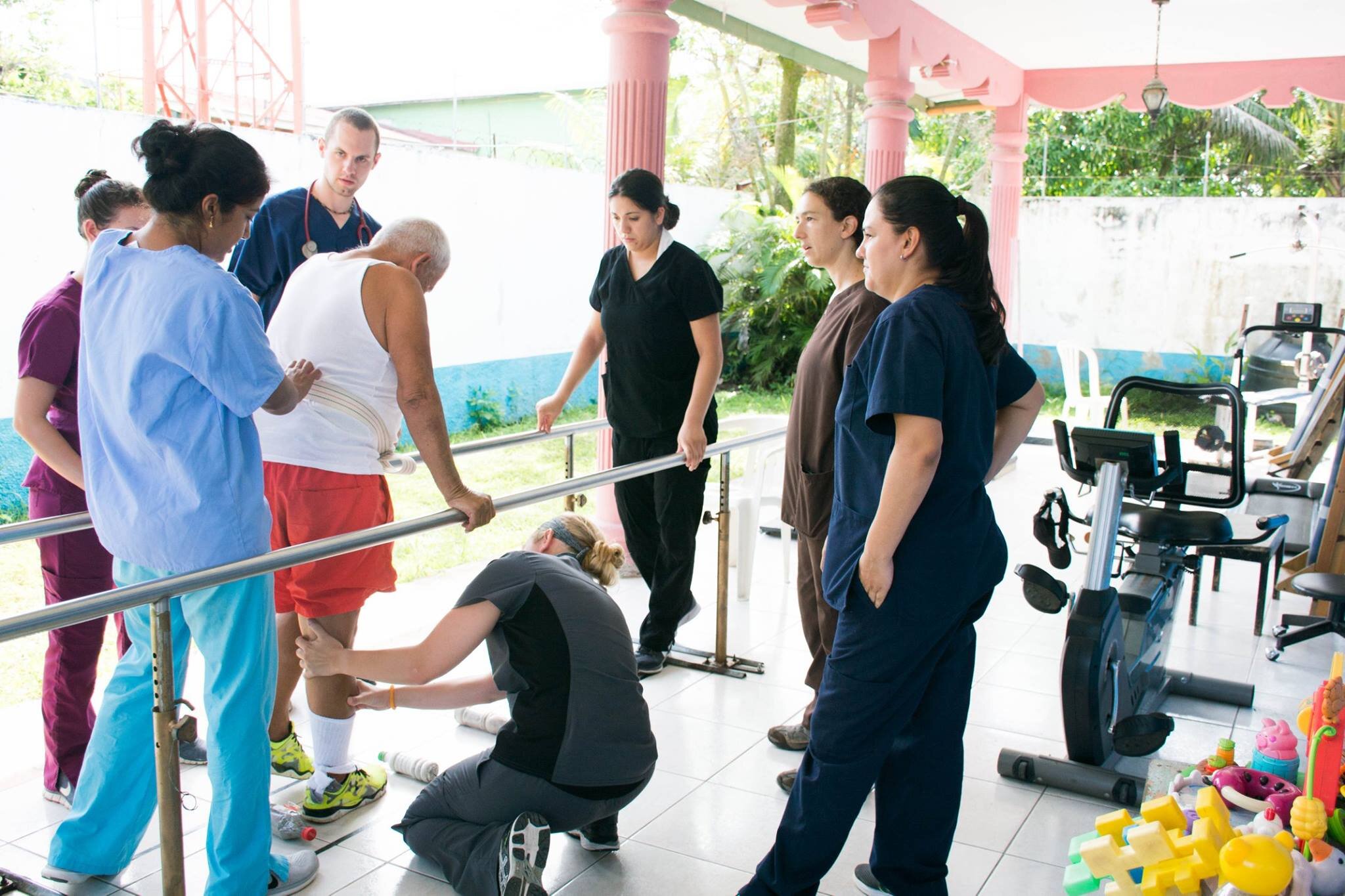
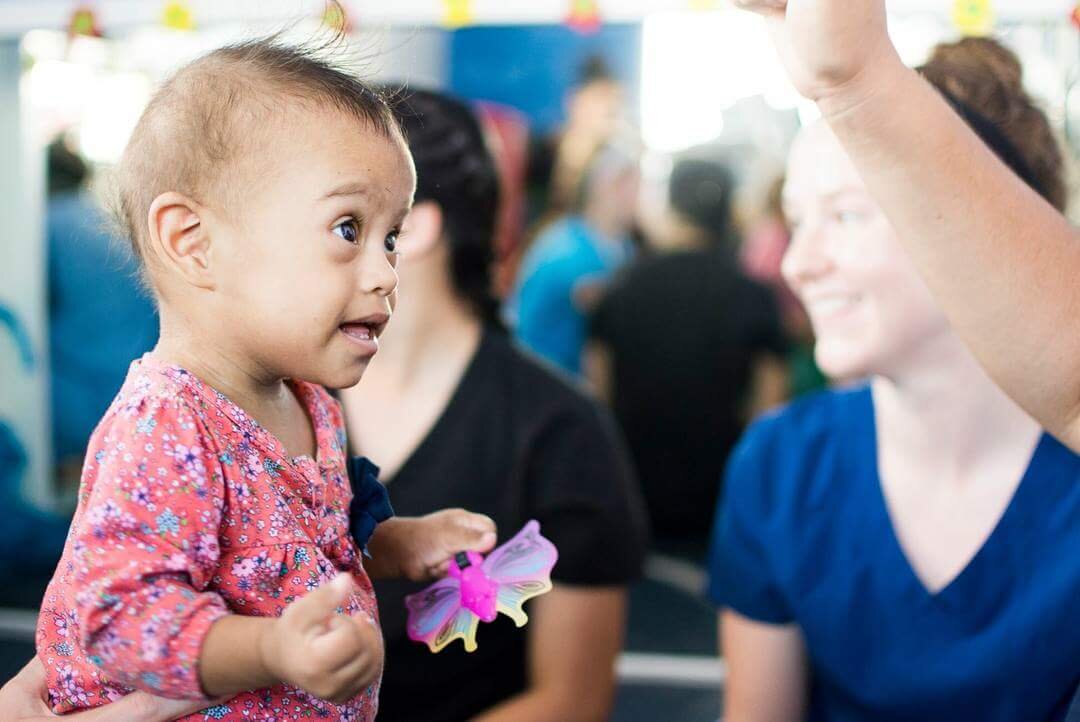

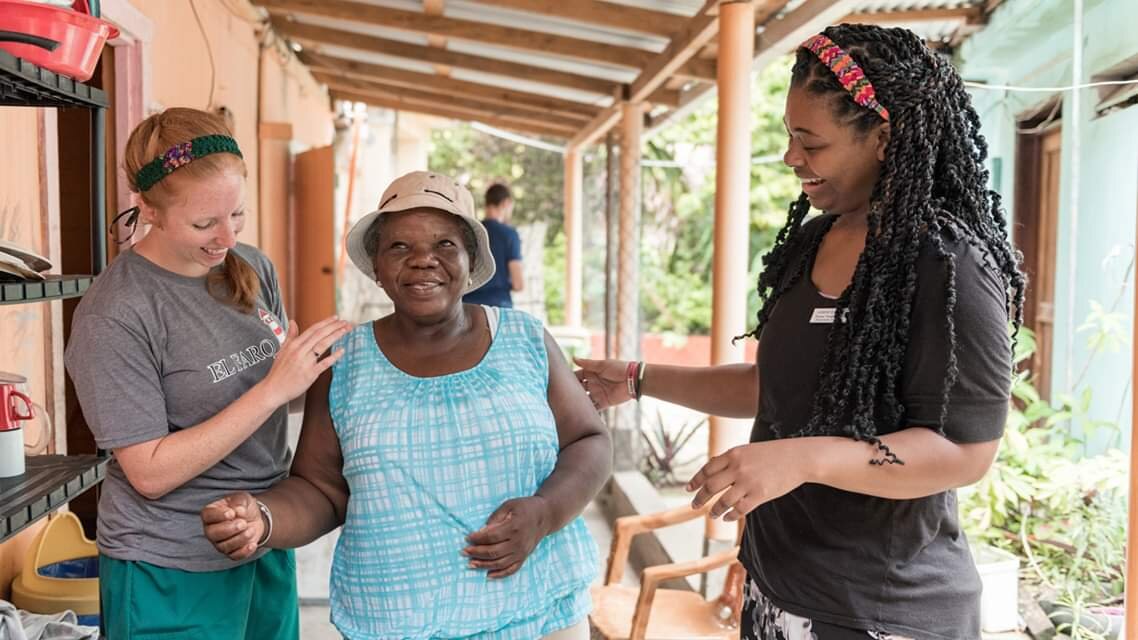

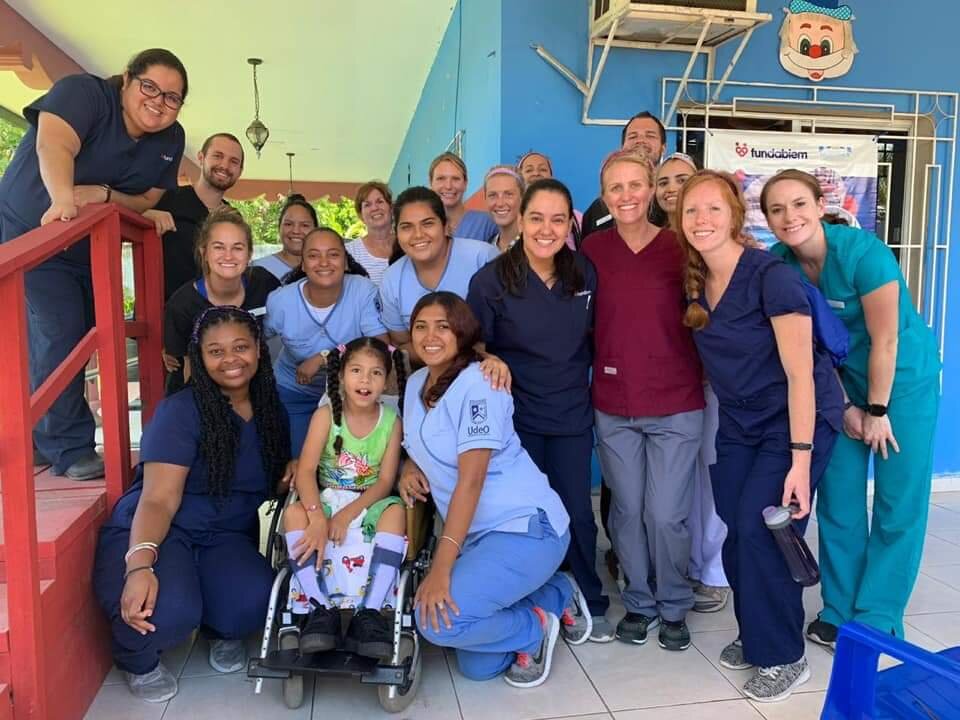
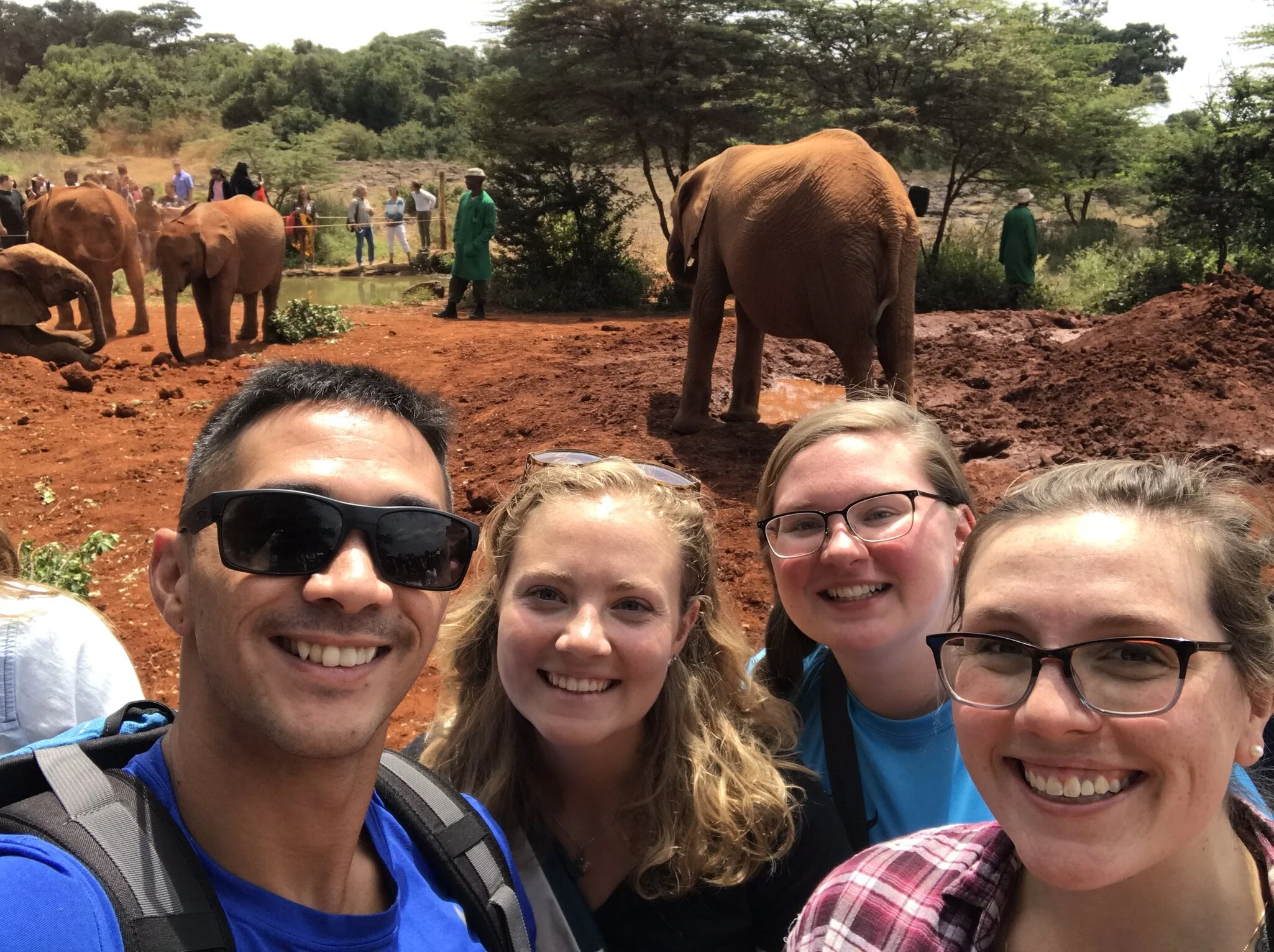
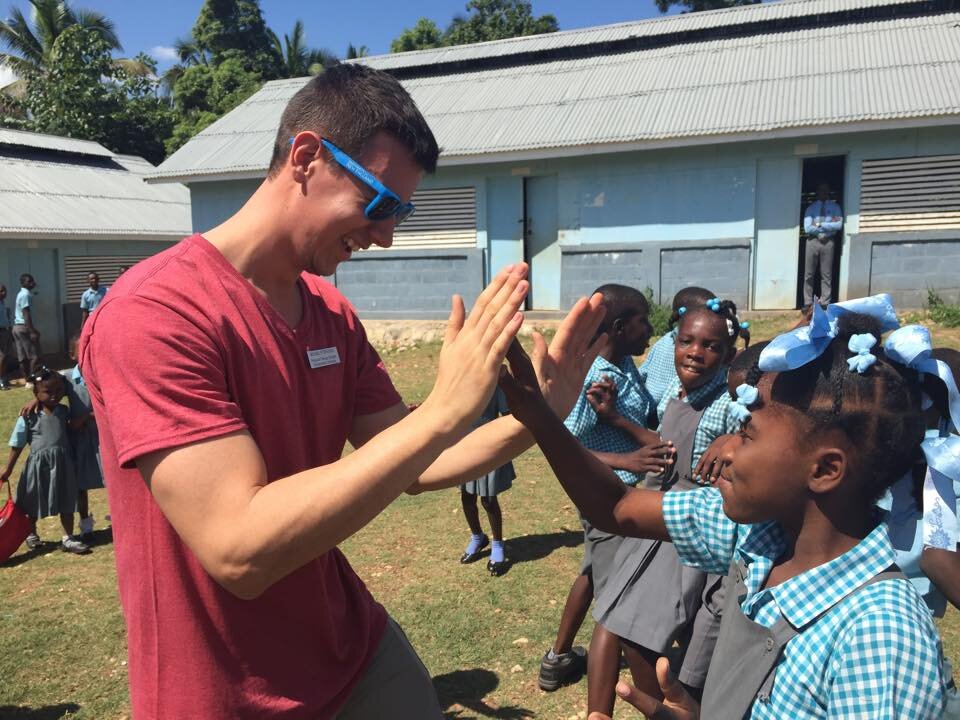



We have our white ceremony during our third cumulative semester!
This ceremony is such a significant day for a DPT student because it signifies the welcoming of your class into the doctoring profession of physical therapy and your transition from didactic coursework to clinical education. At Shenandoah, our white coat ceremony takes place at the beginning of our third cumulative semester of school (a few weeks into the fall semester of our second year). Personally, I think the fall semester of our second year is probably one of the toughest, busiest semesters overall in the program. So, I love that we have our ceremony at this time and think it is such a great way to start off the semester with a wonderful reminder as to what we are working towards and all of the amazing opportunities that are yet to come. For more details about our white coat ceremony, check out this blog post!
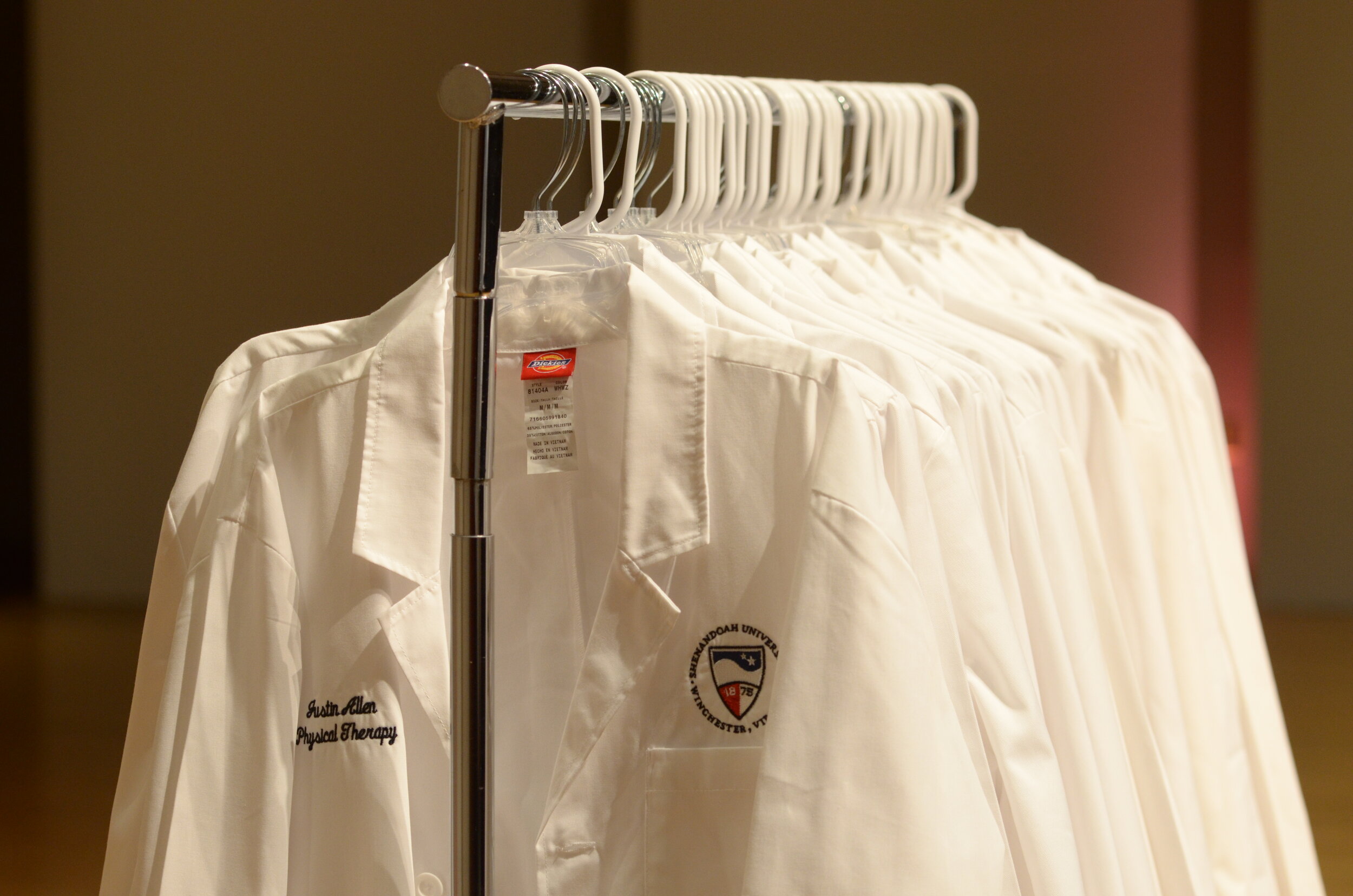
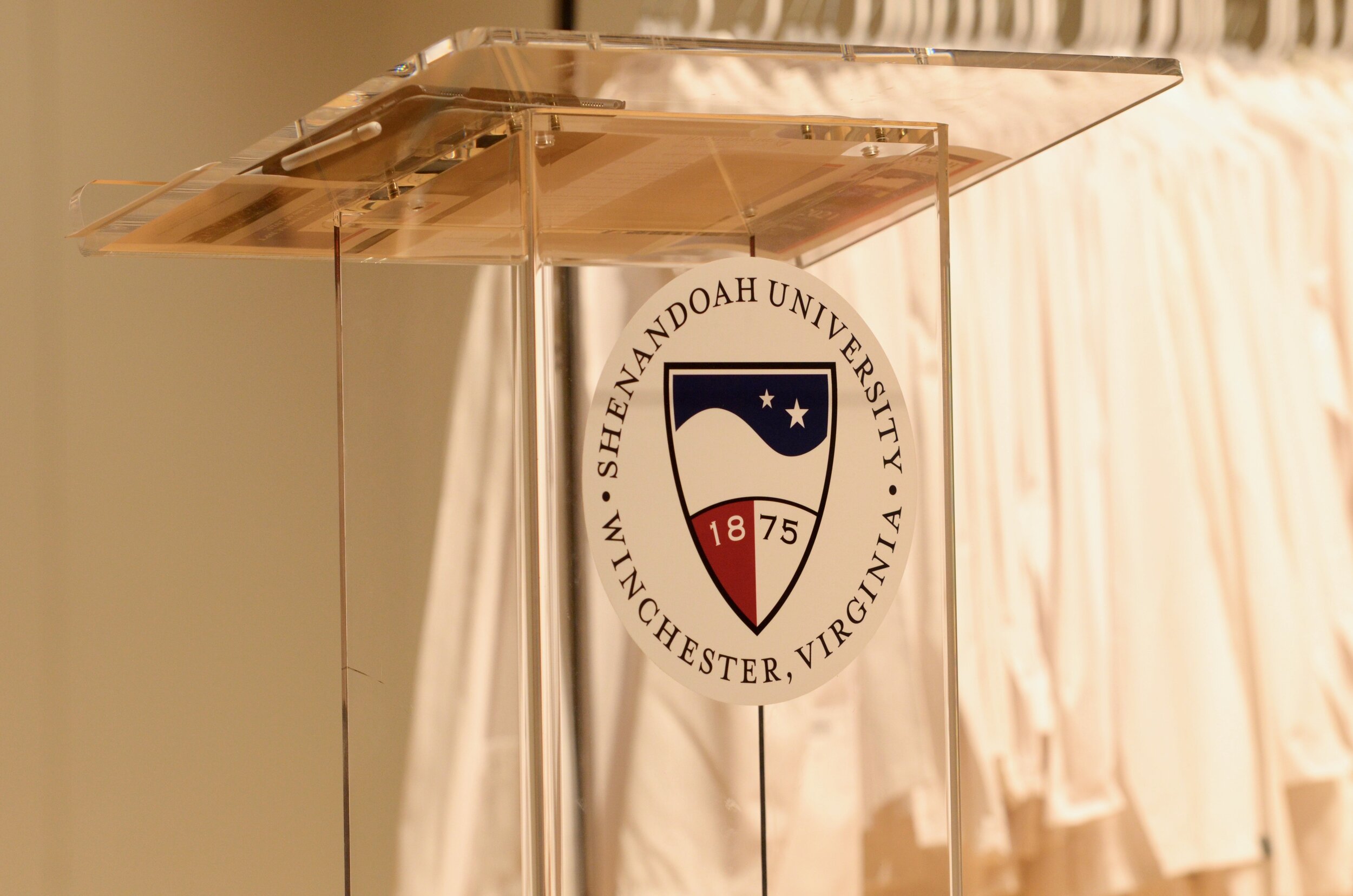
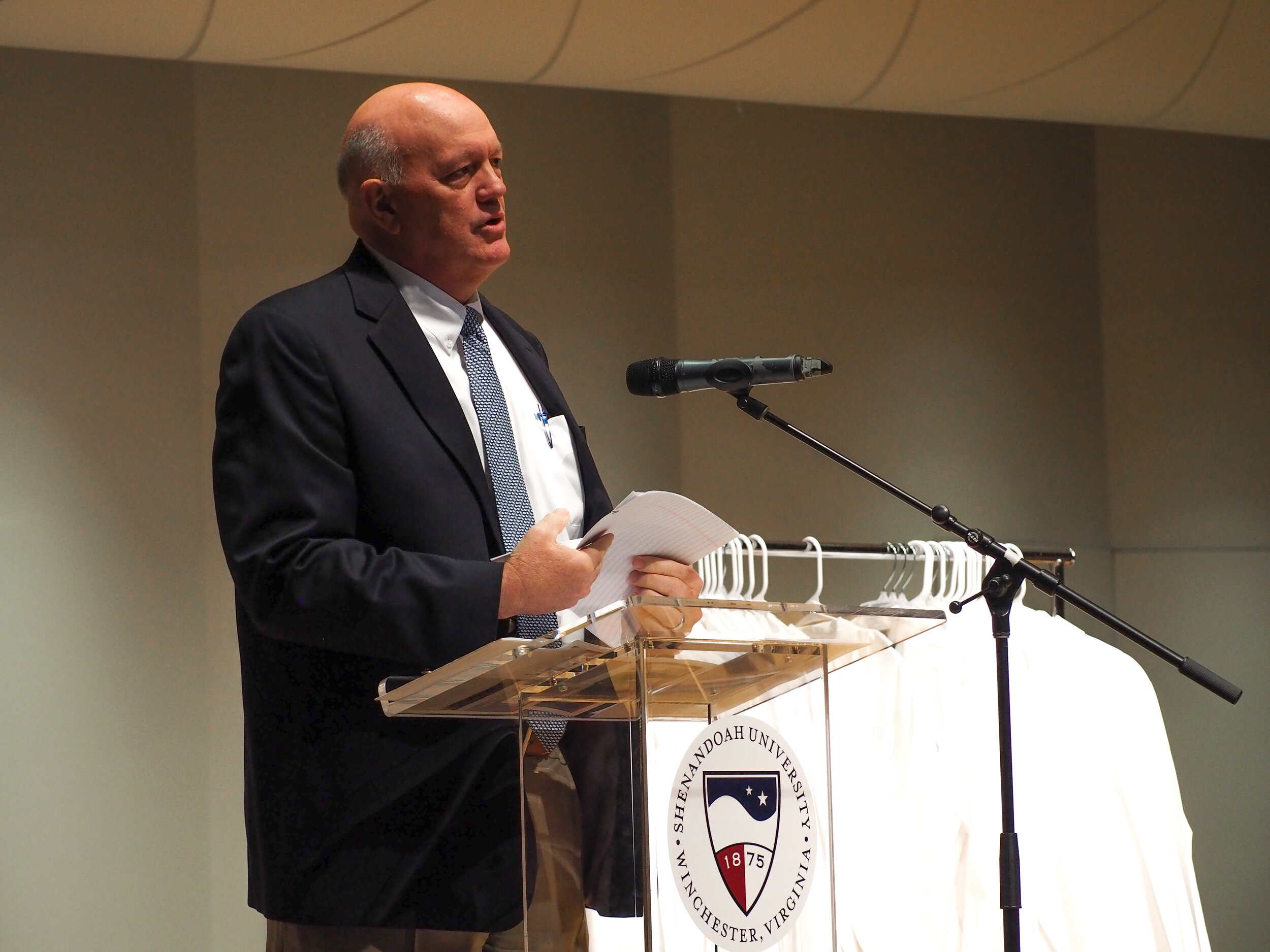
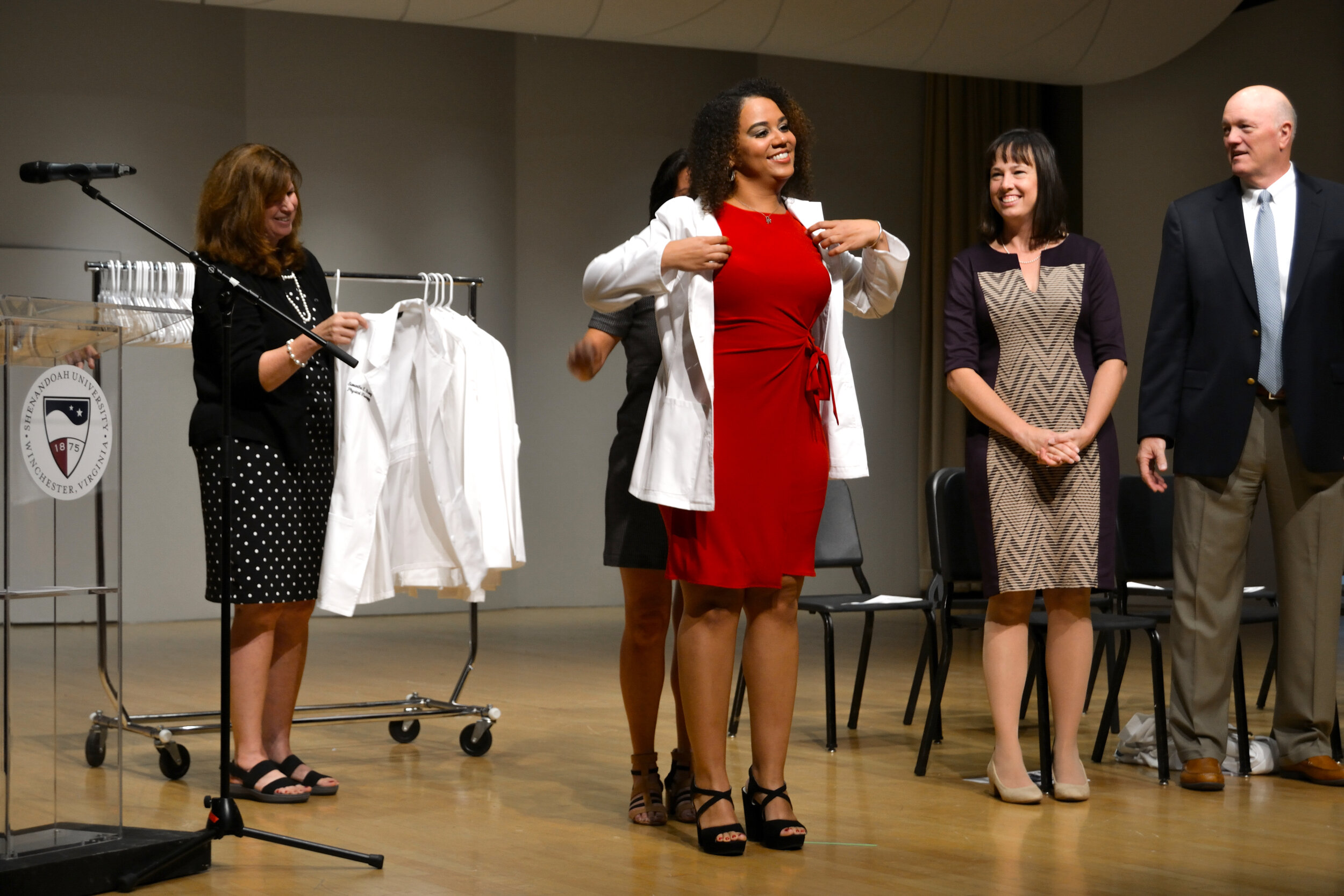


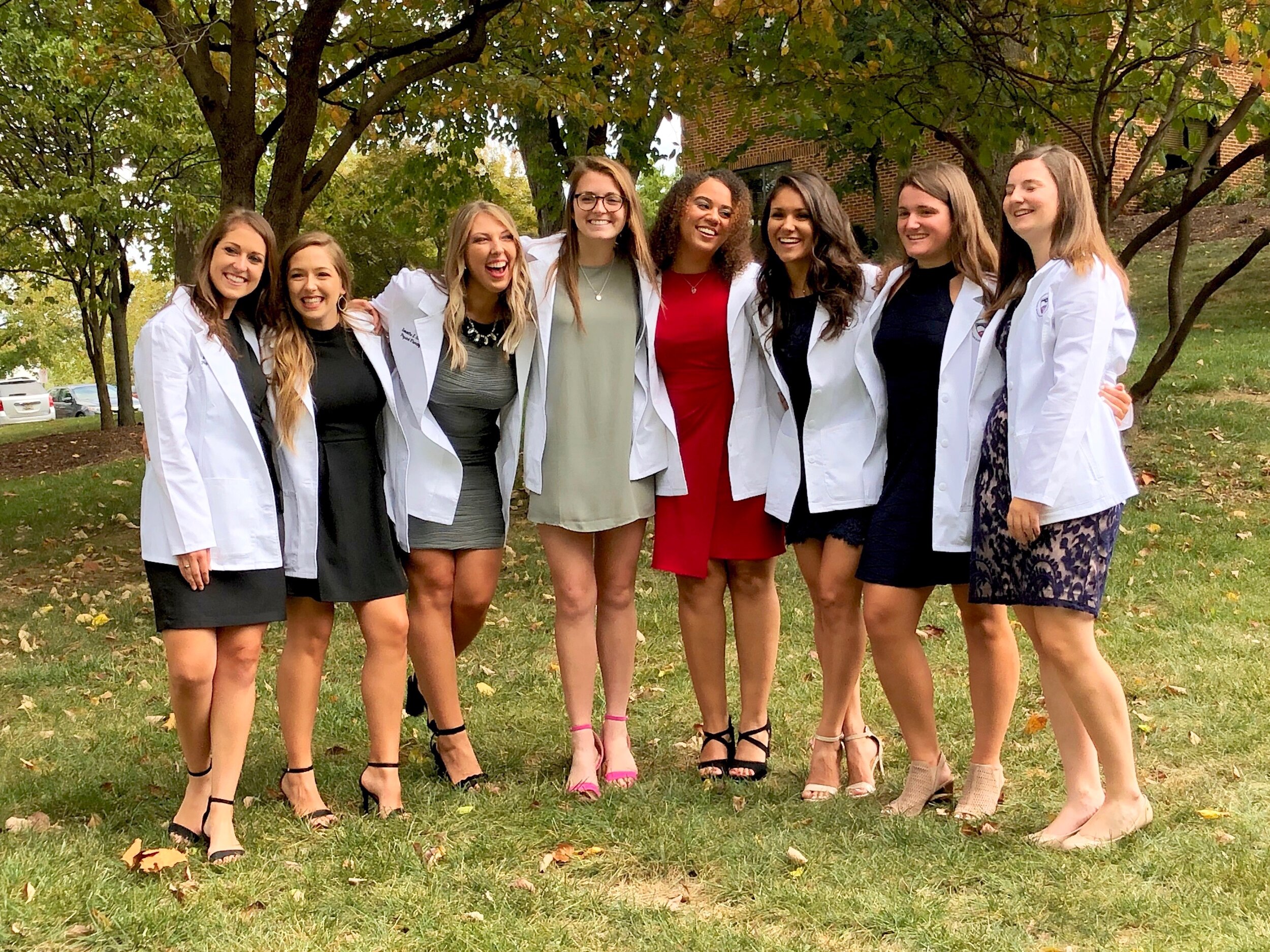
We have many professional opportunities available within the APTA and our state chapter!
Professional development and advocacy are two huge values in our program! All students are members of the APTA and have numerous opportunities to attend conferences and advocacy events both locally and nationally. Each year, a number of our third year students get the opportunity to present their research at CSM. Our state chapter always holds the annual student conclave in locations very close to our school, so students are able to attend in large groups! We are very passionate about providing pro bono services at our Sinclair Free Medical Clinic, and this year students that have volunteered at the clinic had the opportunity to attend the 2020 Eastern Pro Bono Network Conference.
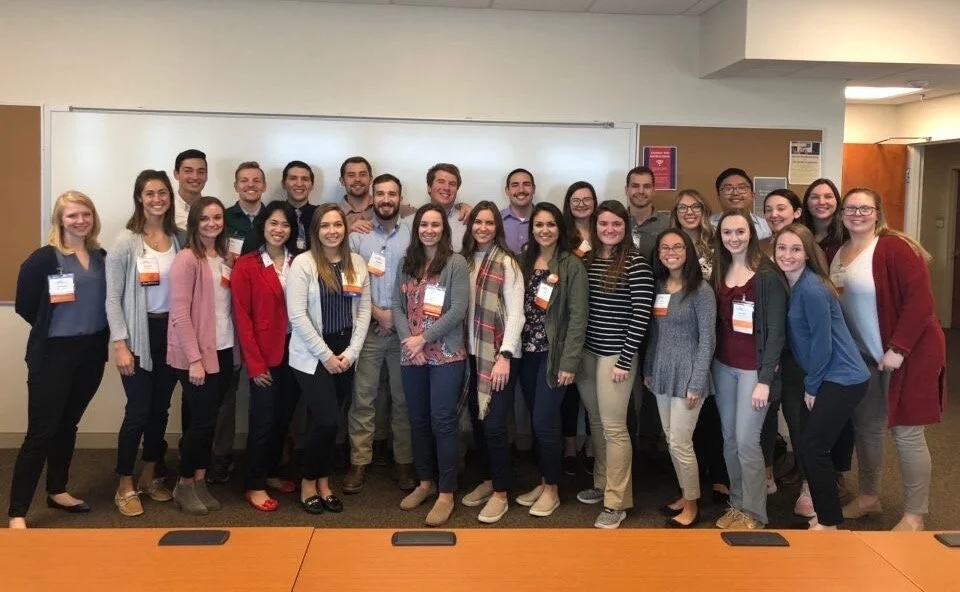
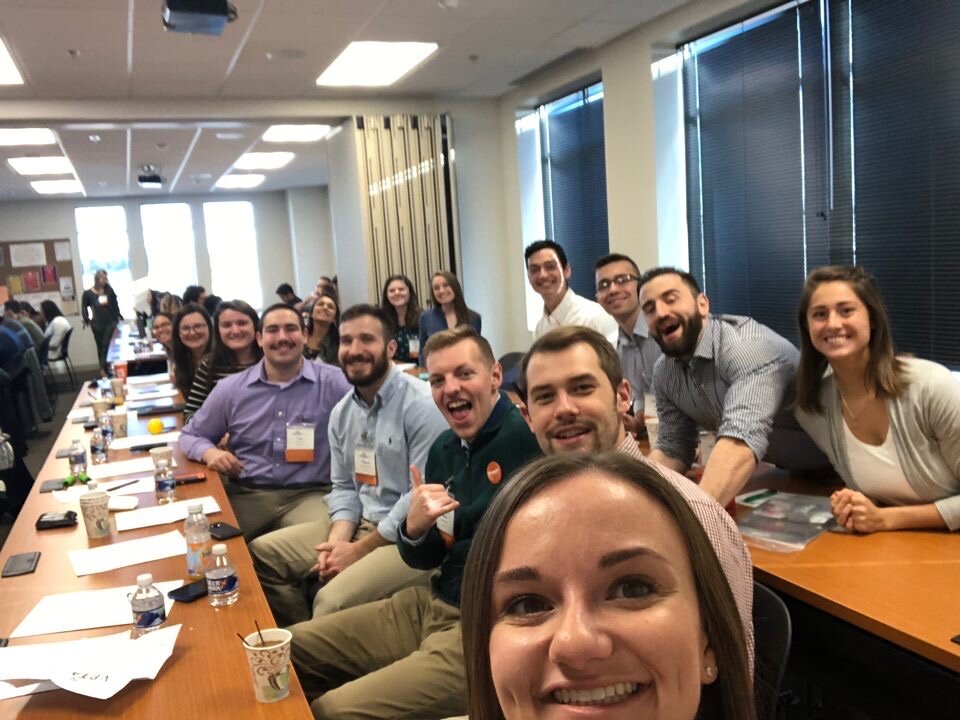
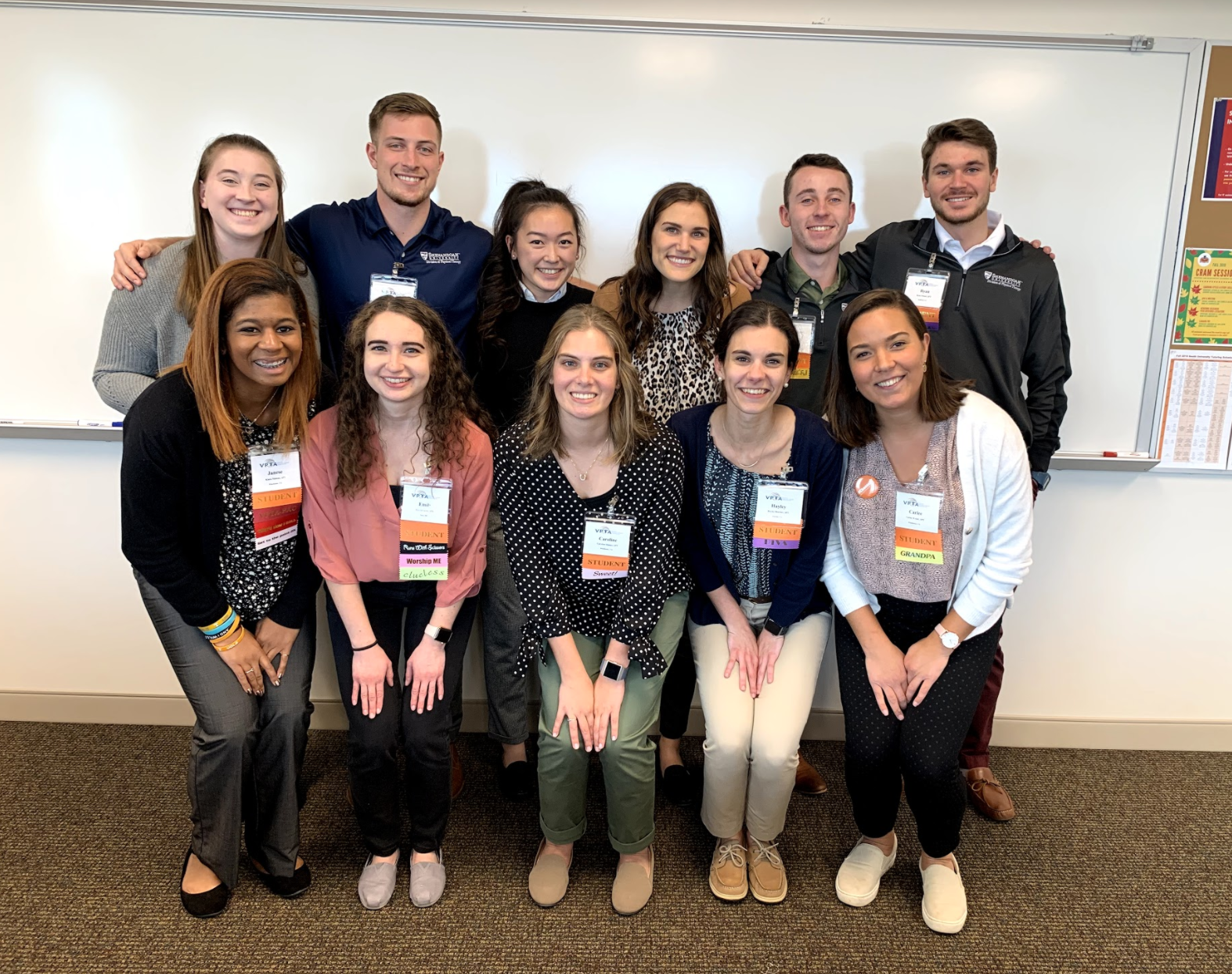


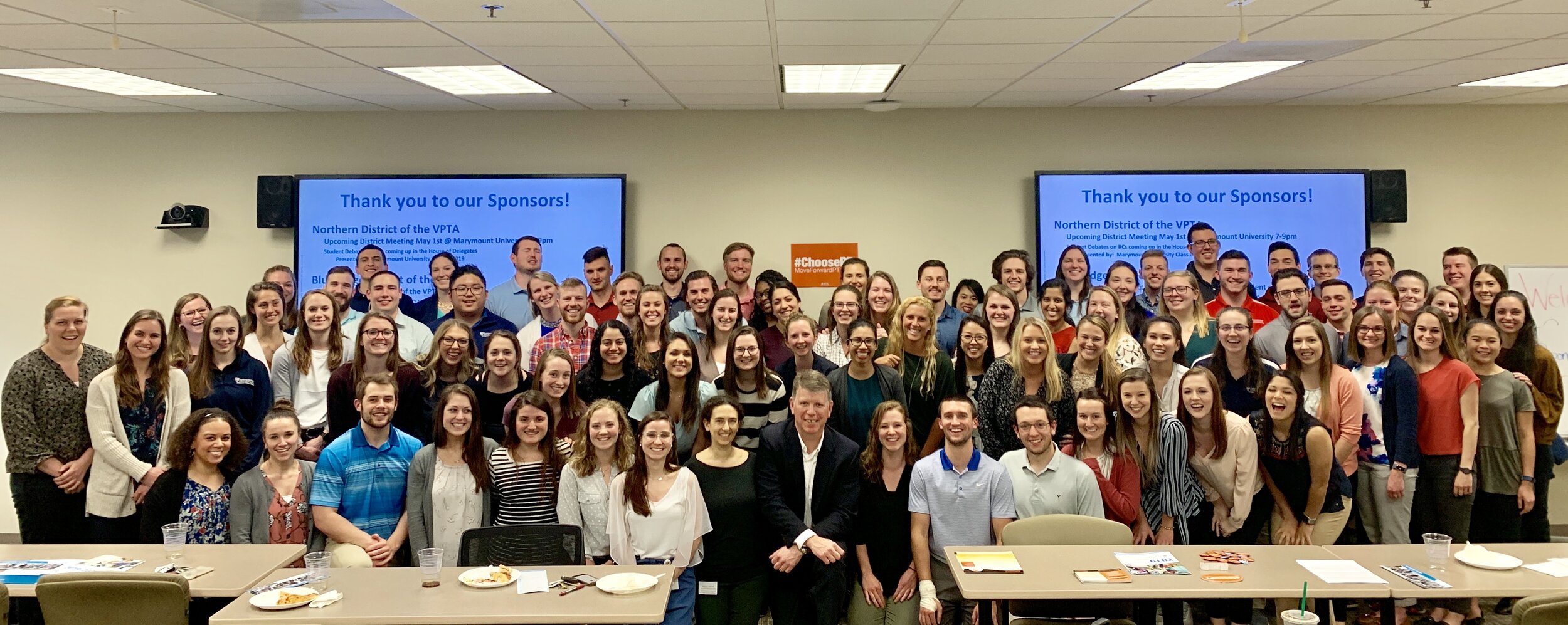
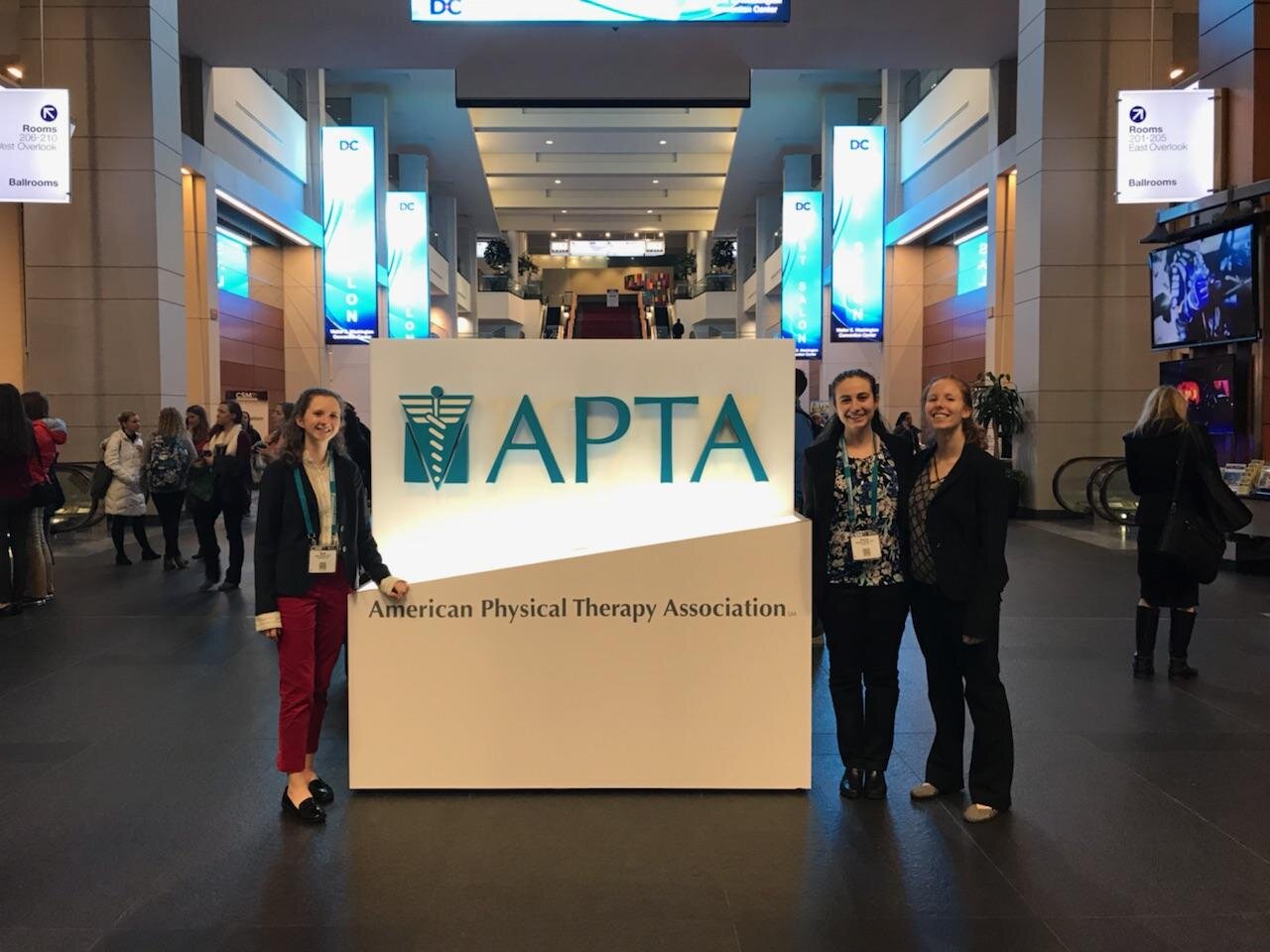
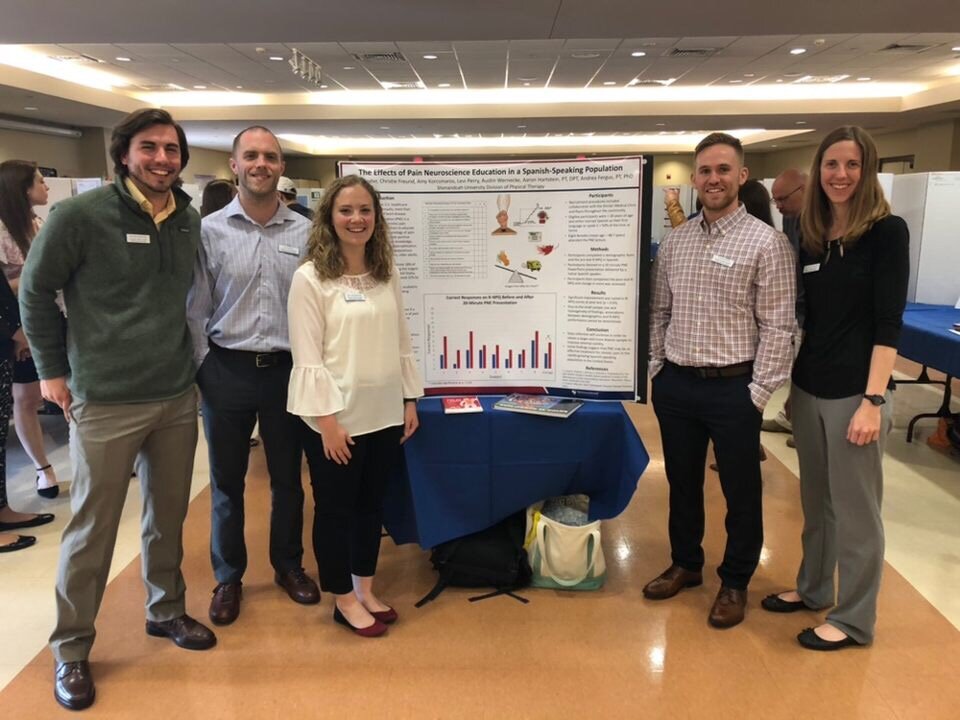
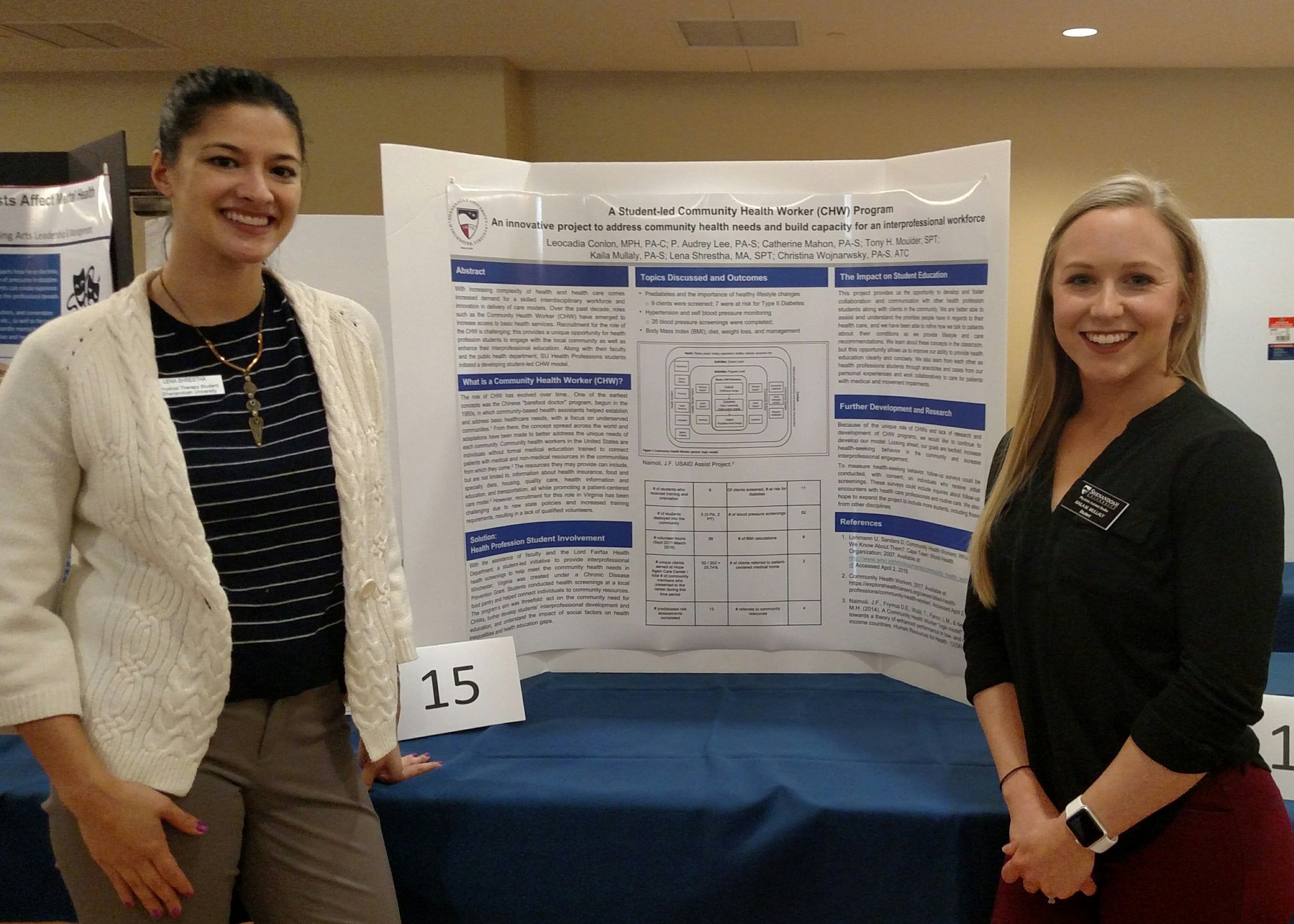

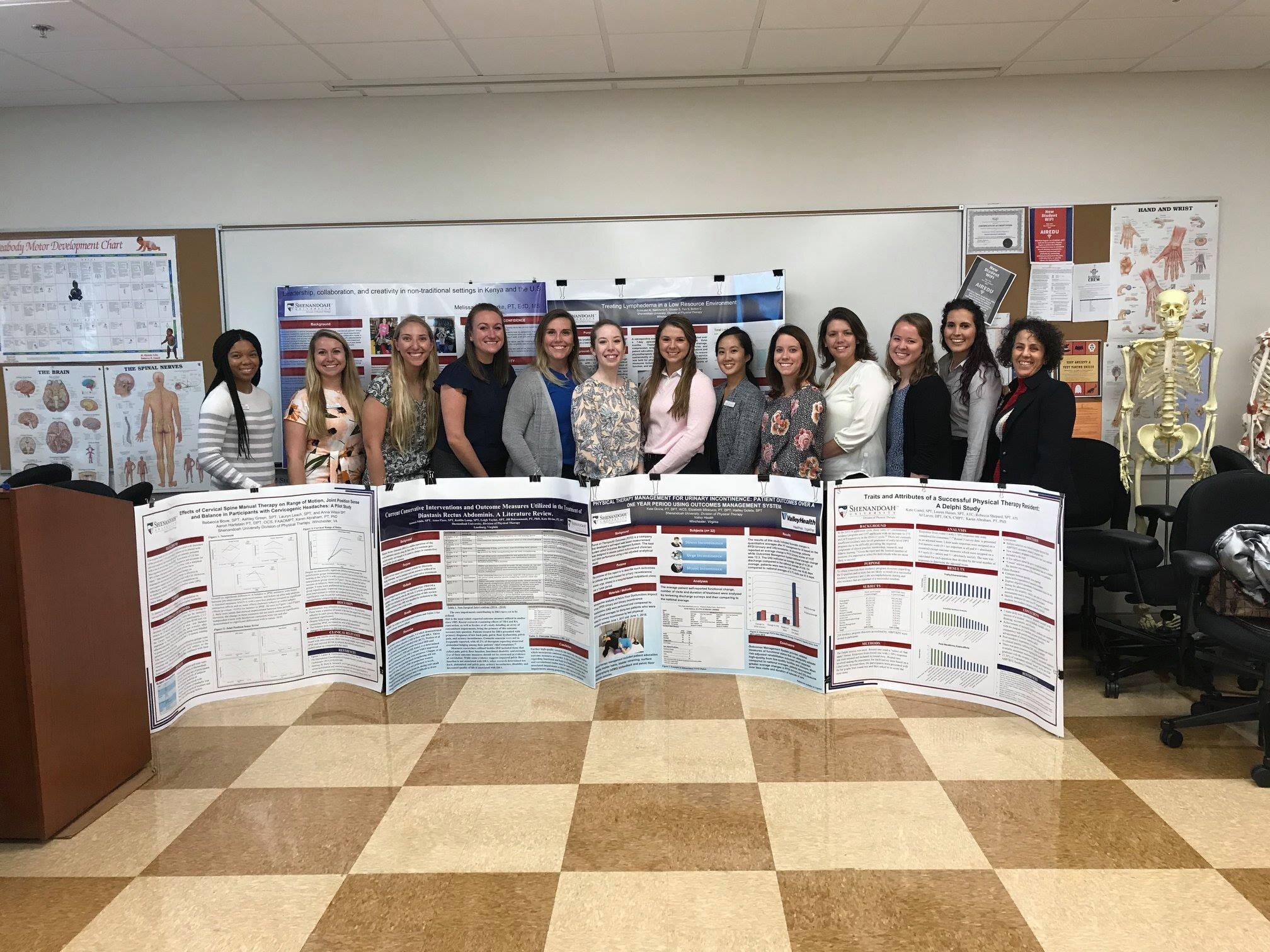
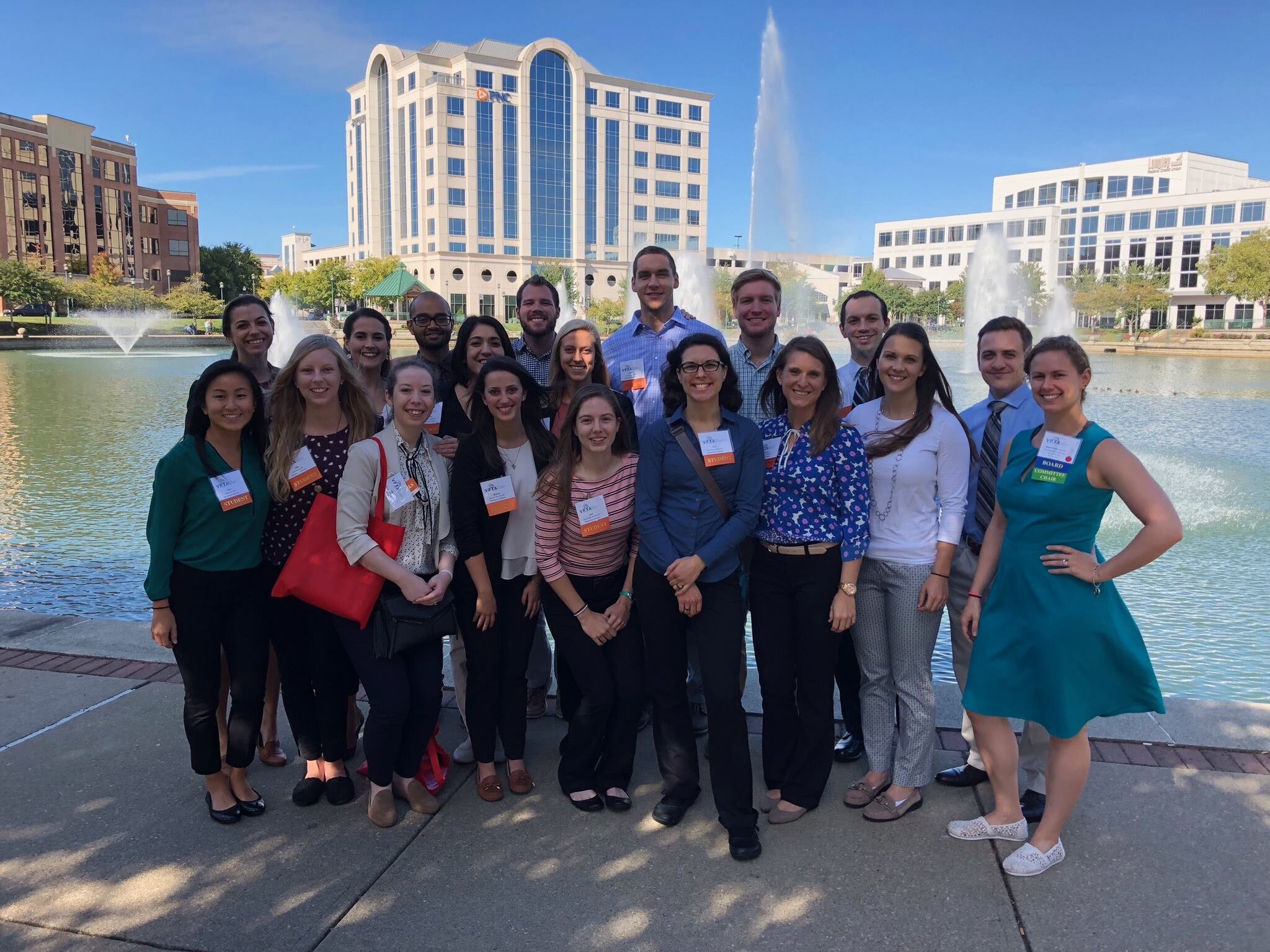
We host super fun events and there are tons of things to get involved in through Shenandoah and around town in Winchester or Leesburg!
Some of my favorite events we host each year are our Gala, holiday parties, and race fundraisers! Our Gala is basically like a “PT prom” where we get to get all fancy and participate in fun raffles, award ceremonies, and more. There are so many fun things to get involved in. We have fall and spring intramural sports that include sand volleyball, indoor volleyball, flag football, soccer, basketball, and dodgeball. At the Leesburg campus, many students are involved with helping out and supporting the local wheelchair rugby team. Outside of school, Winchester is a great little town with lots of perks. There are awesome restaurants, wineries, breweries, and hiking spots with some pretty amazing views!


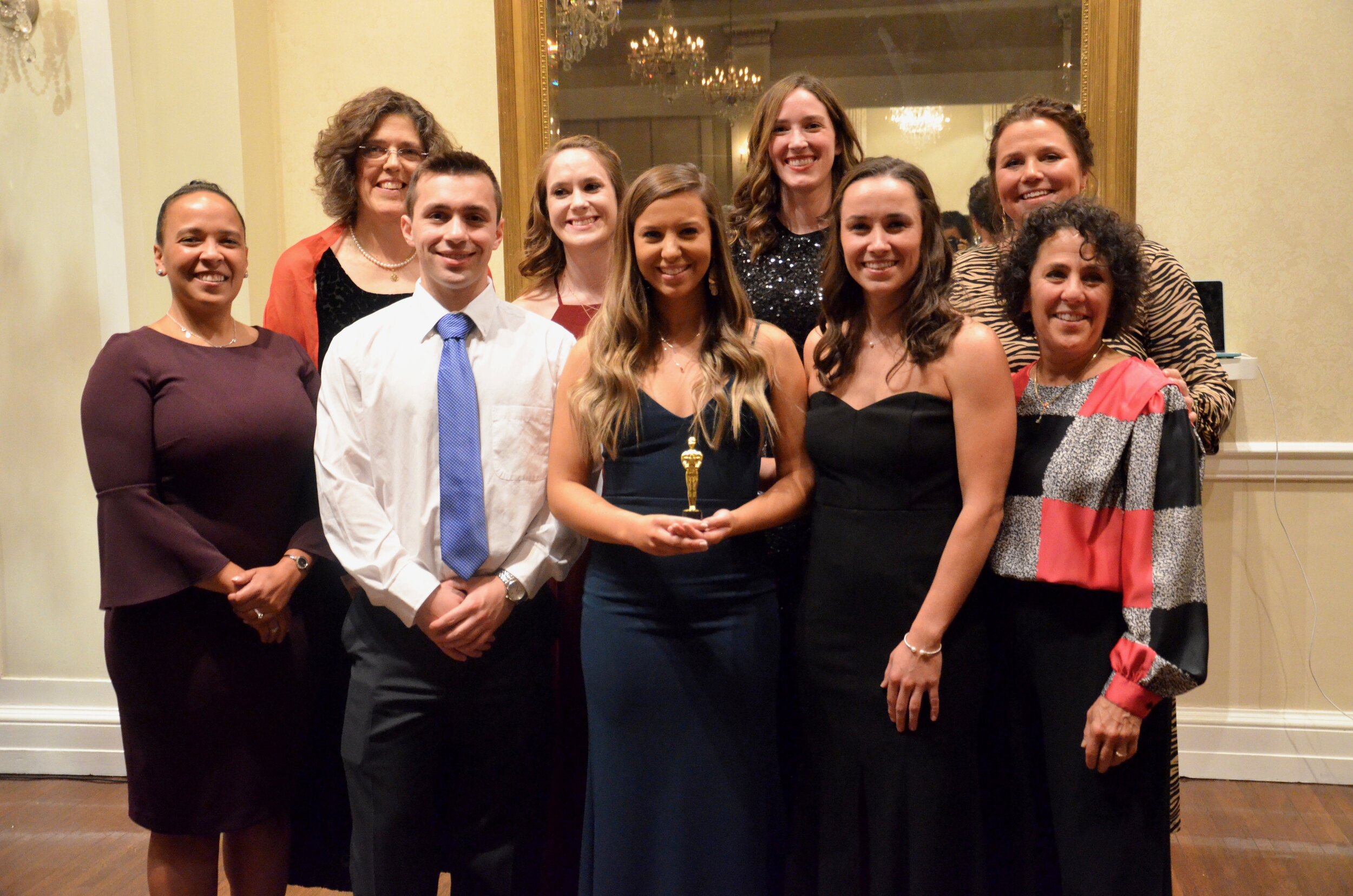


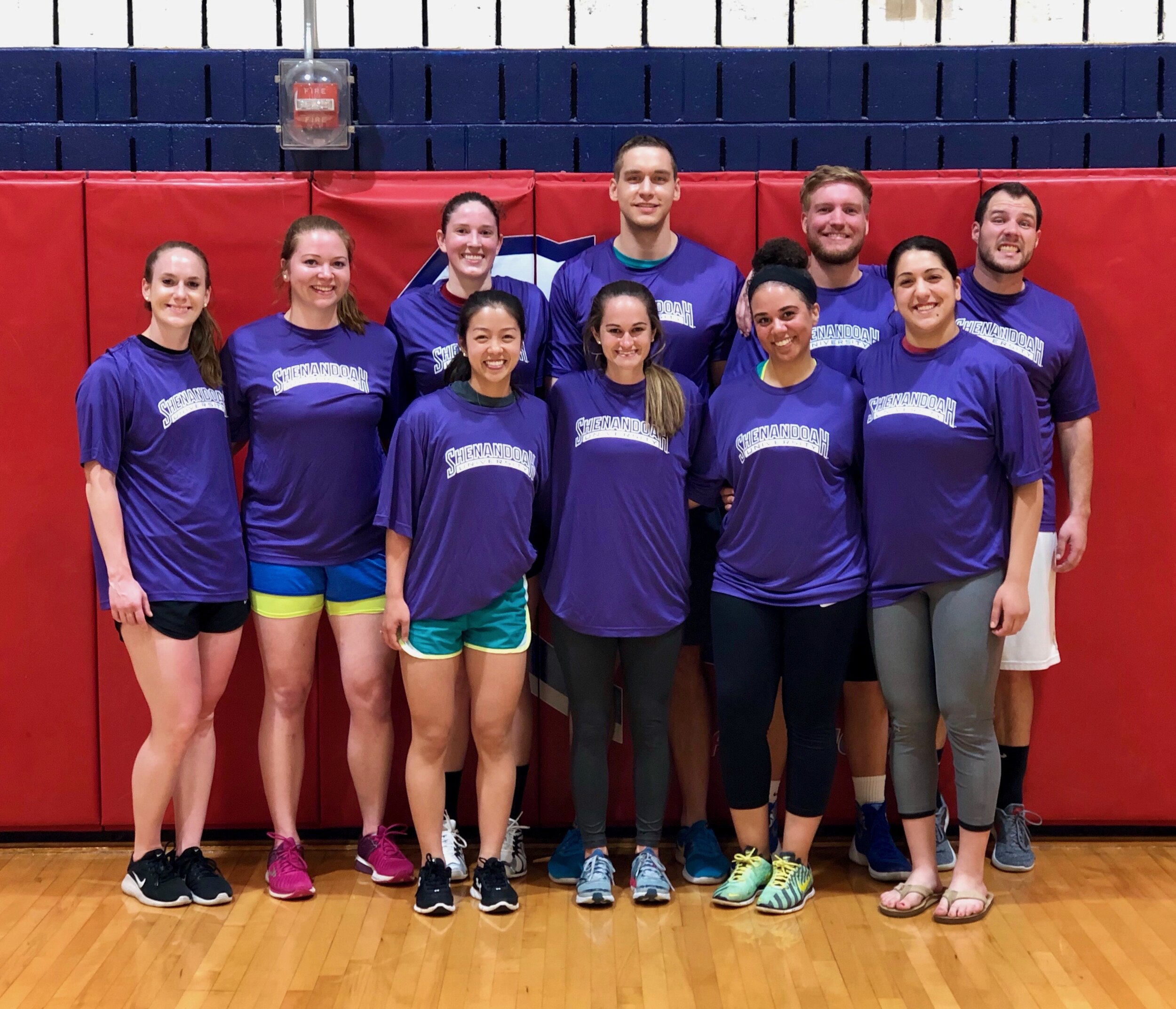
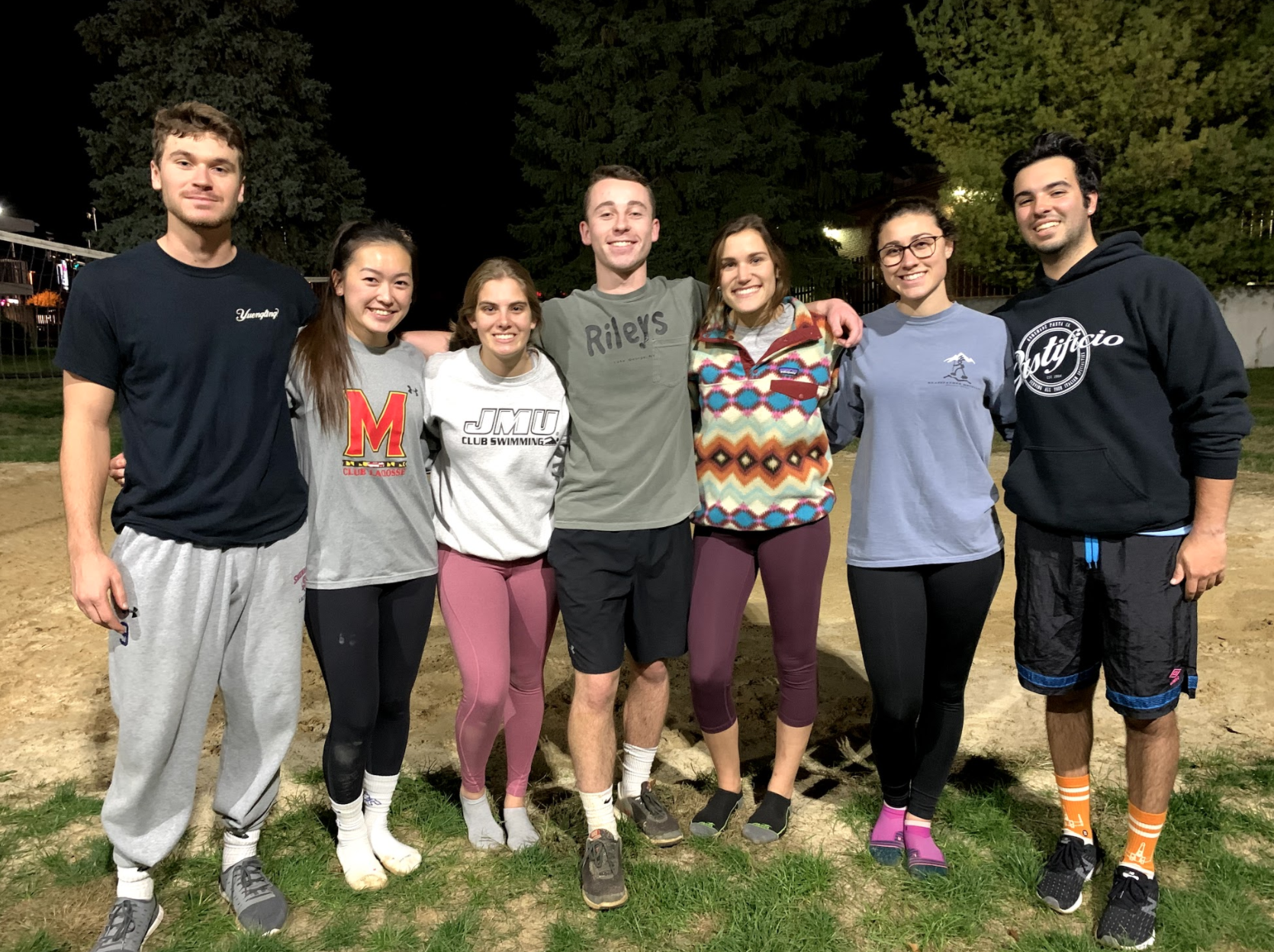
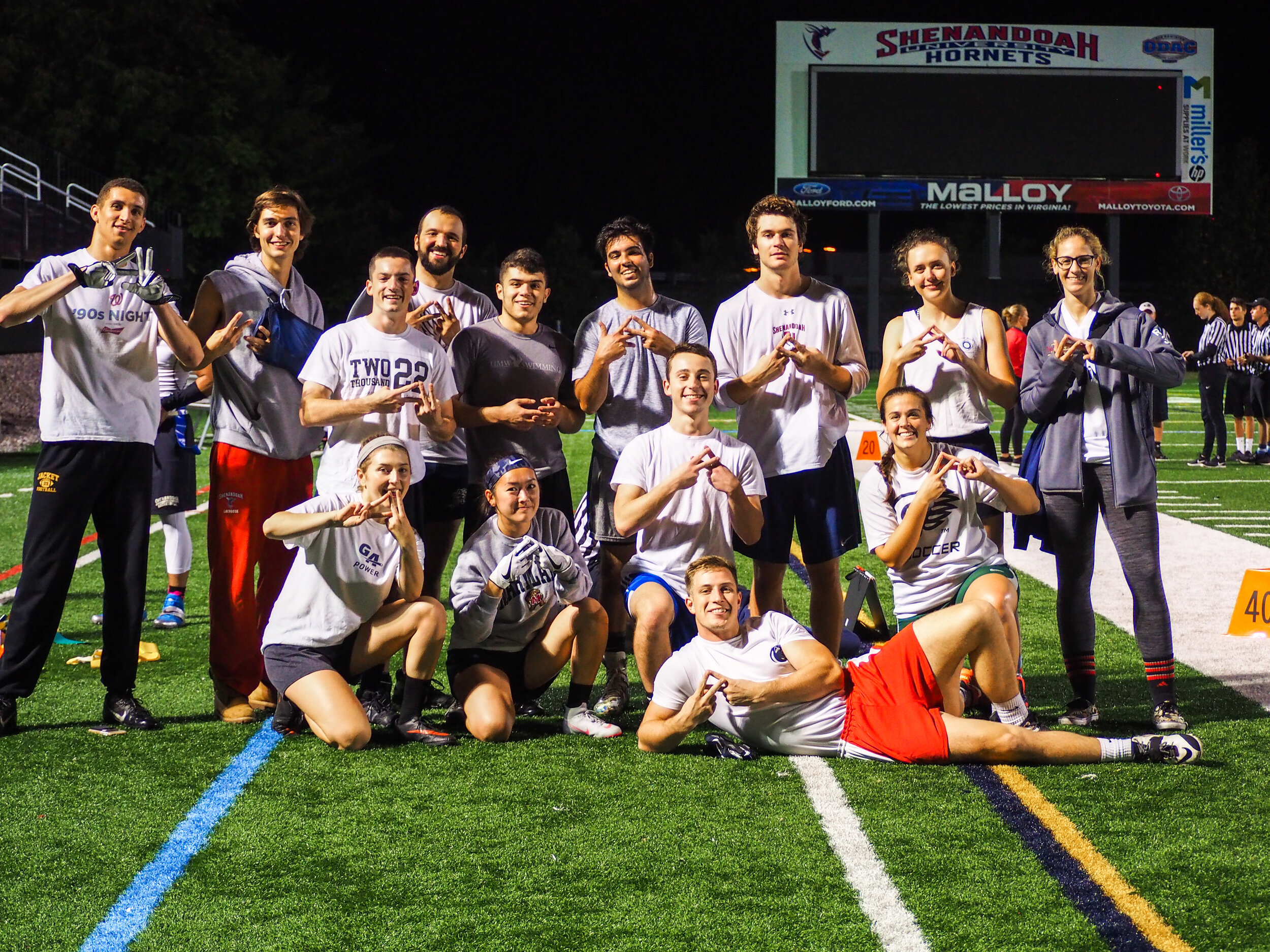

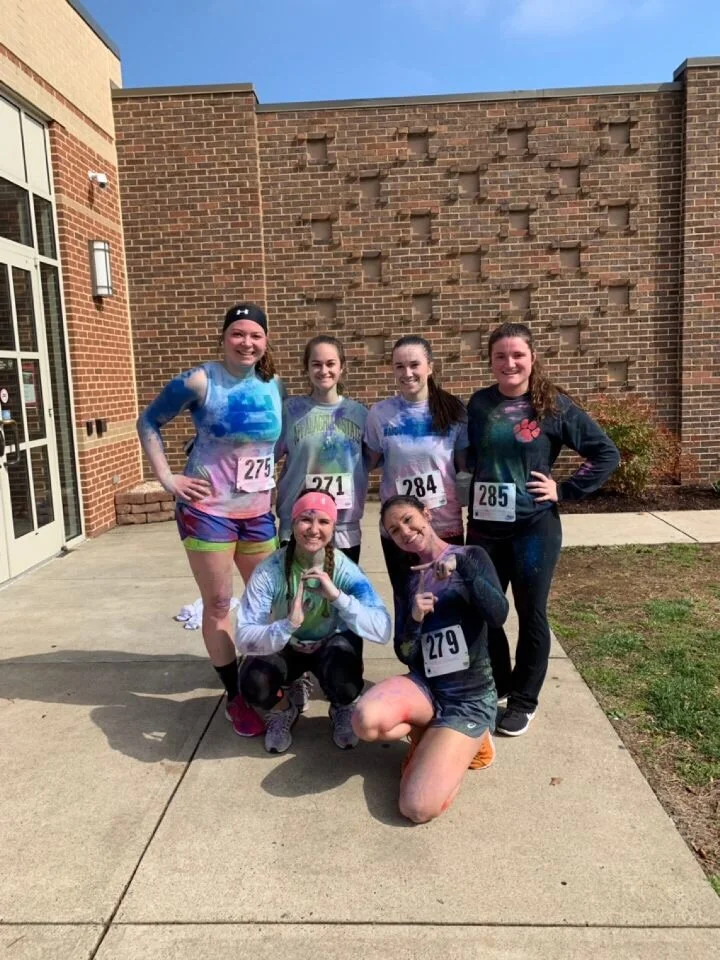
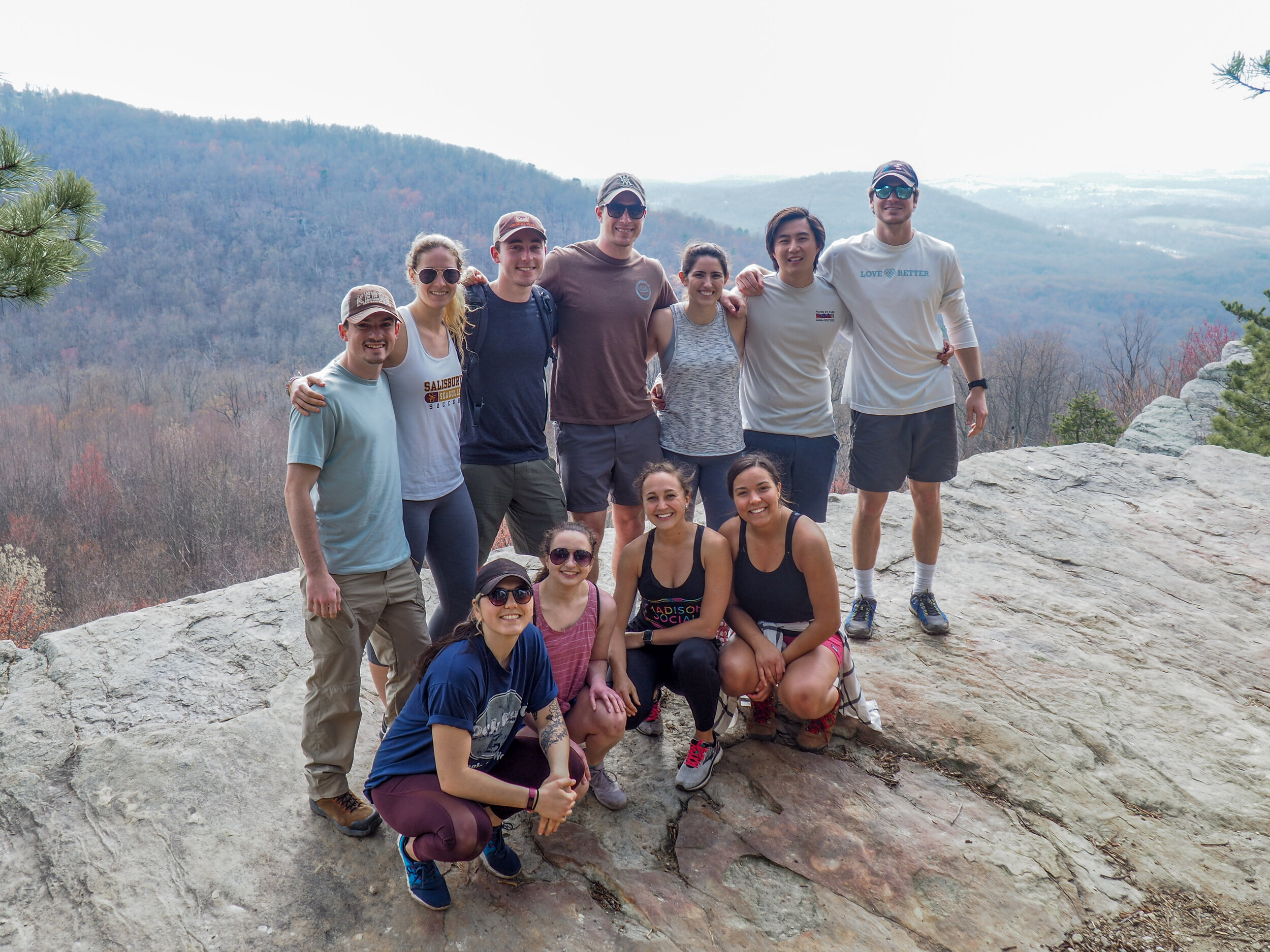
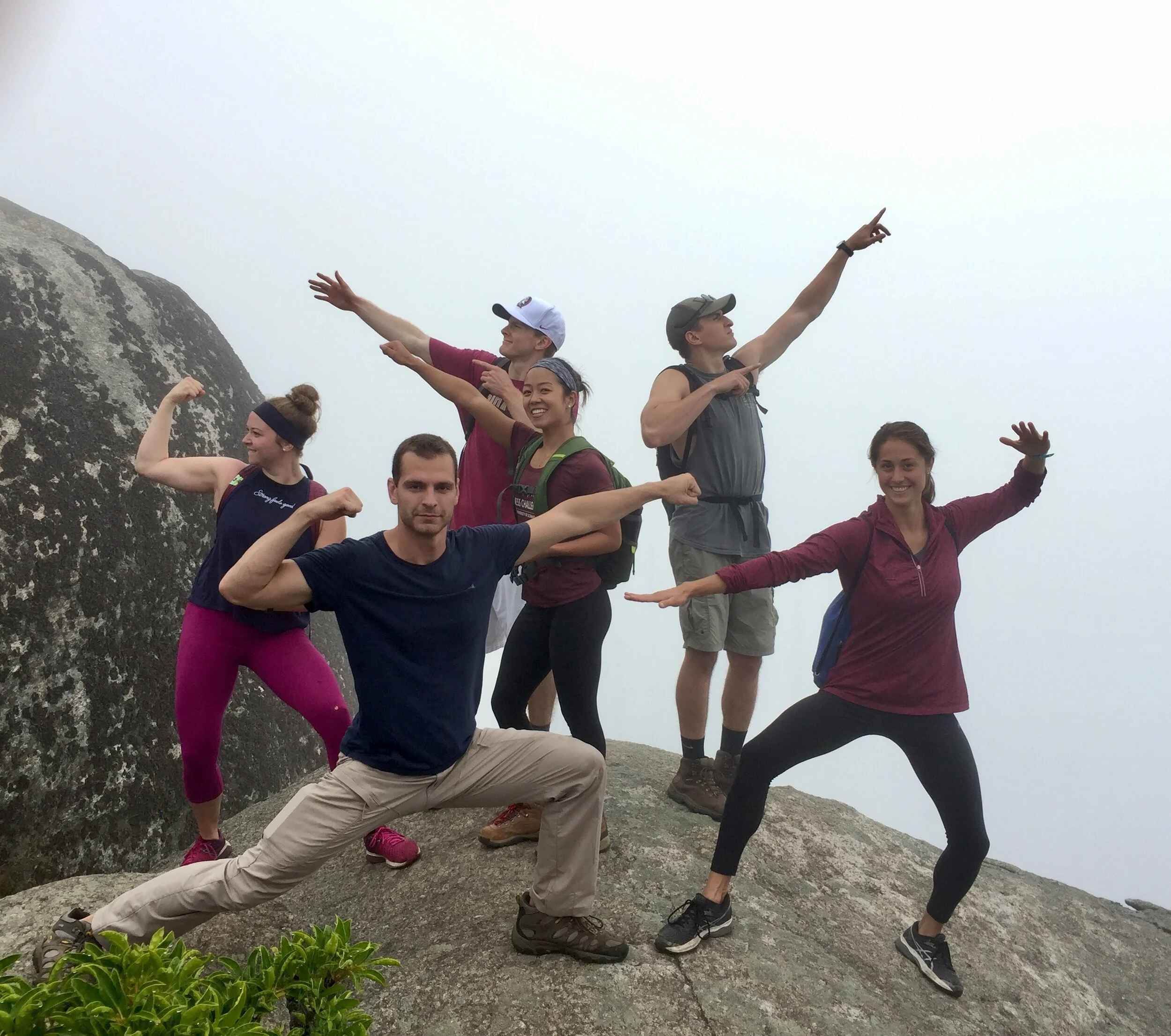

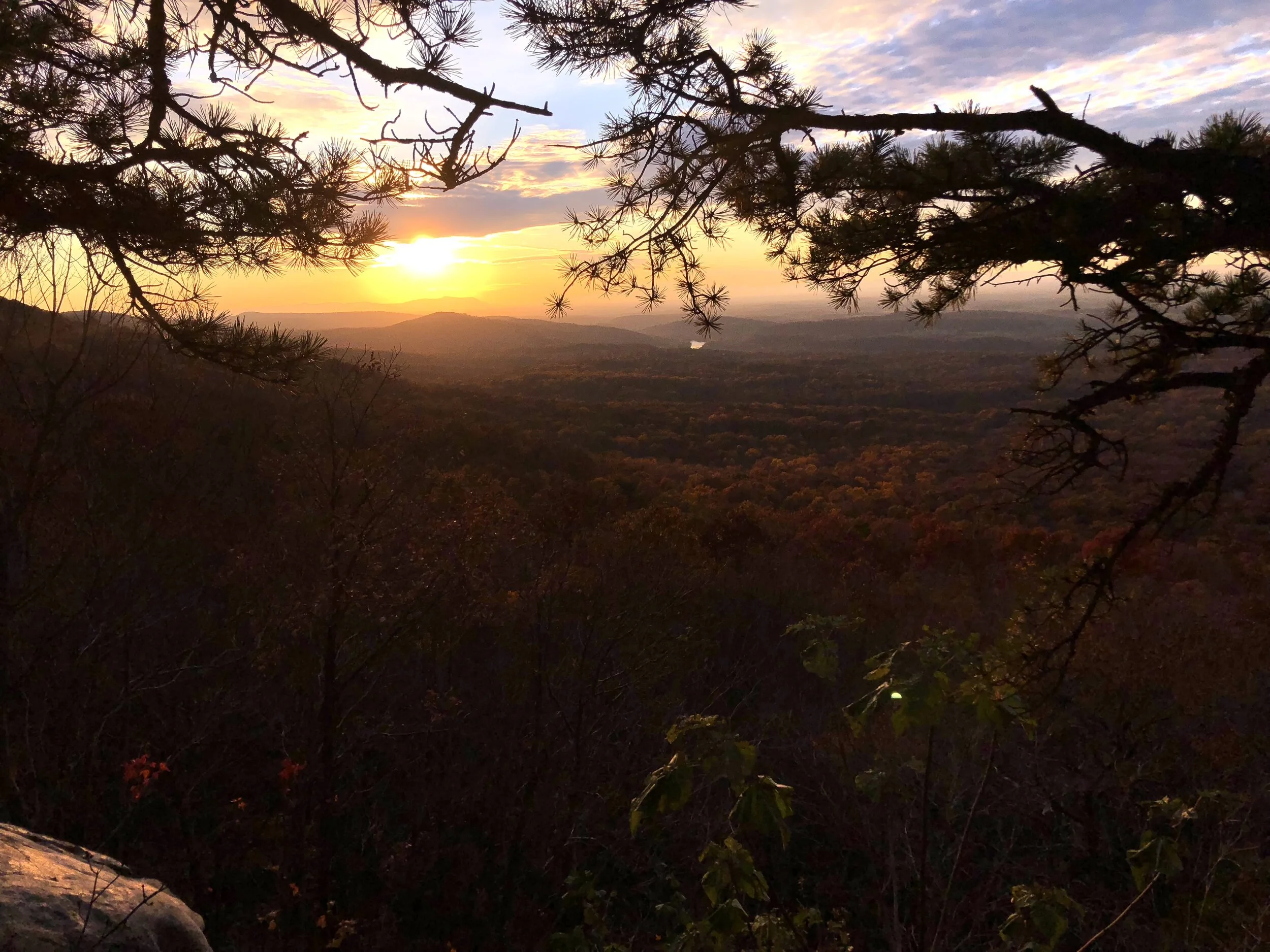
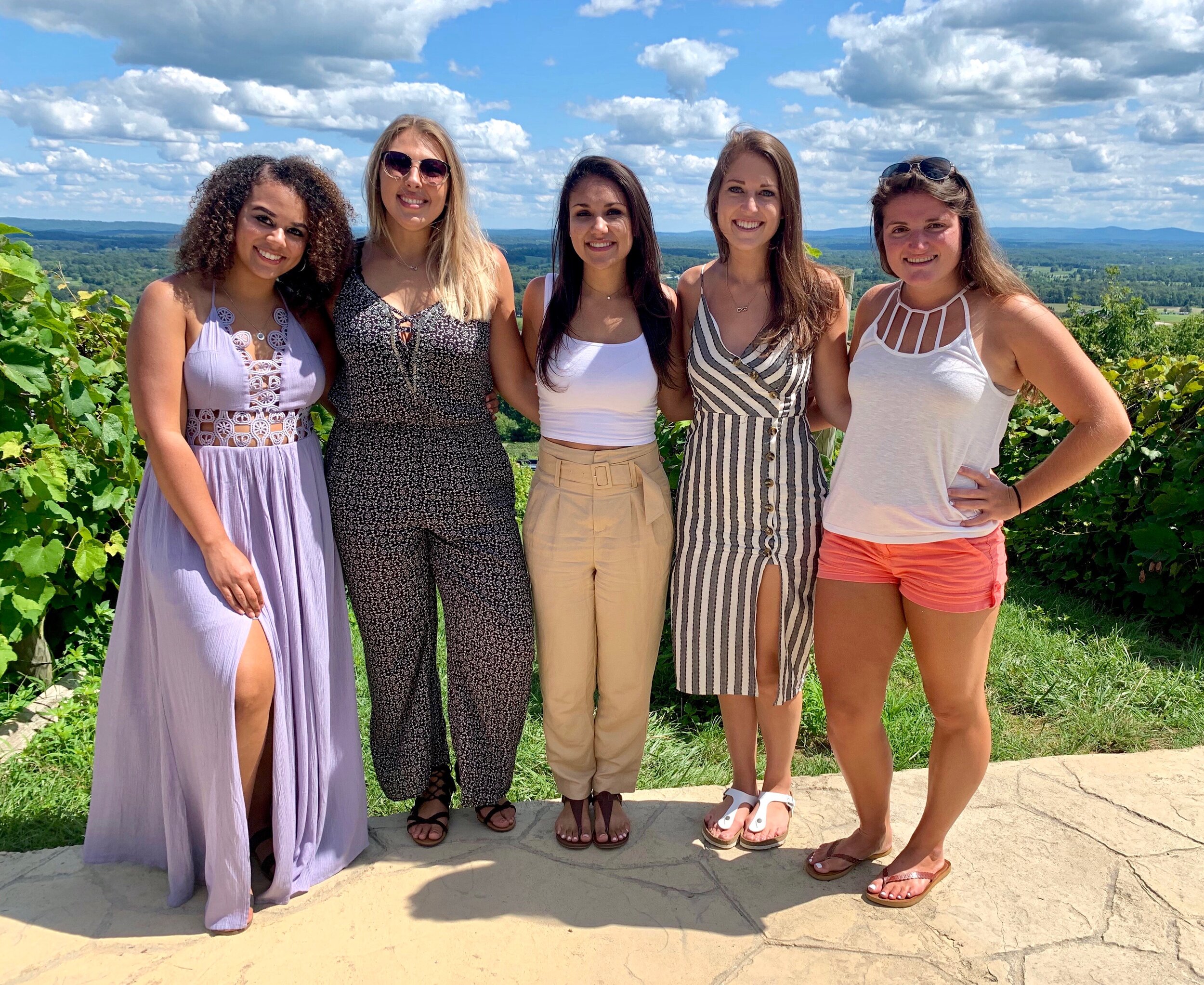

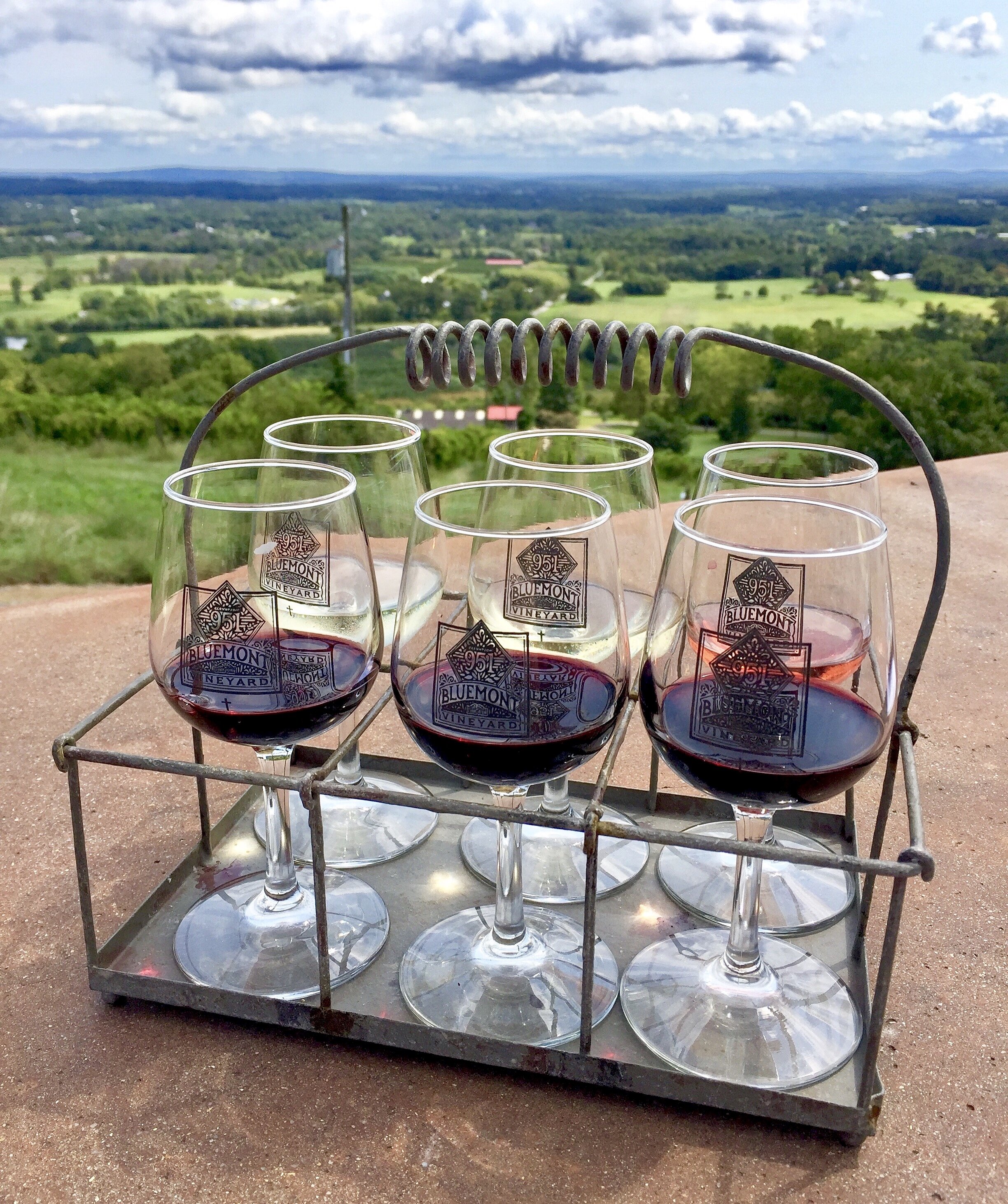

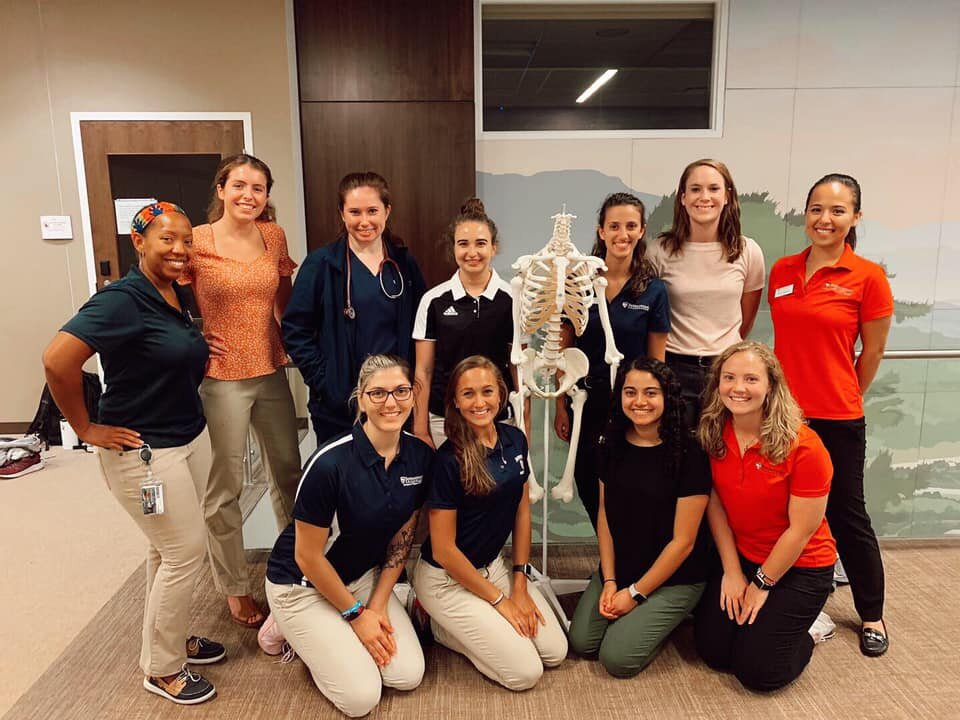

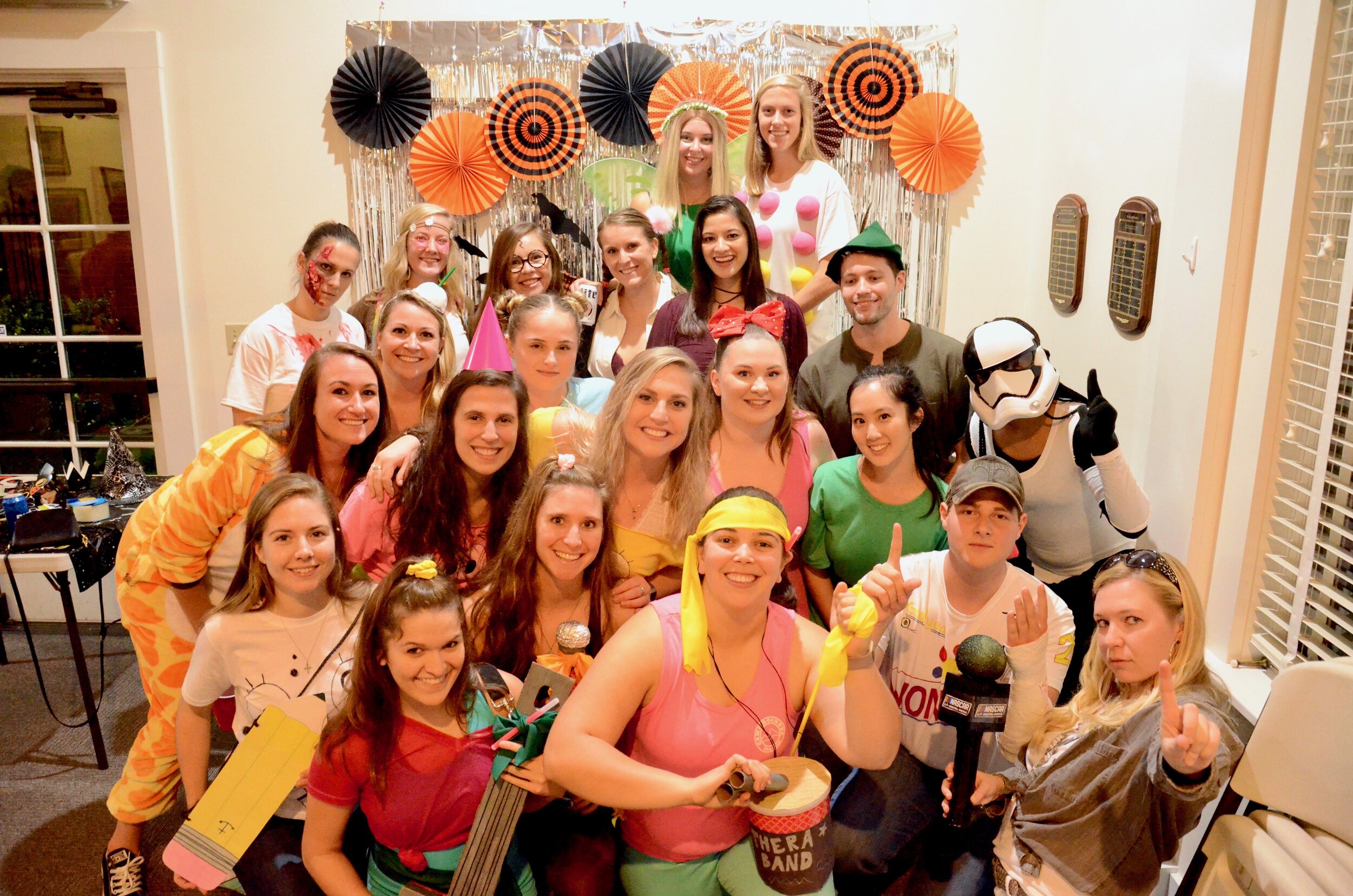
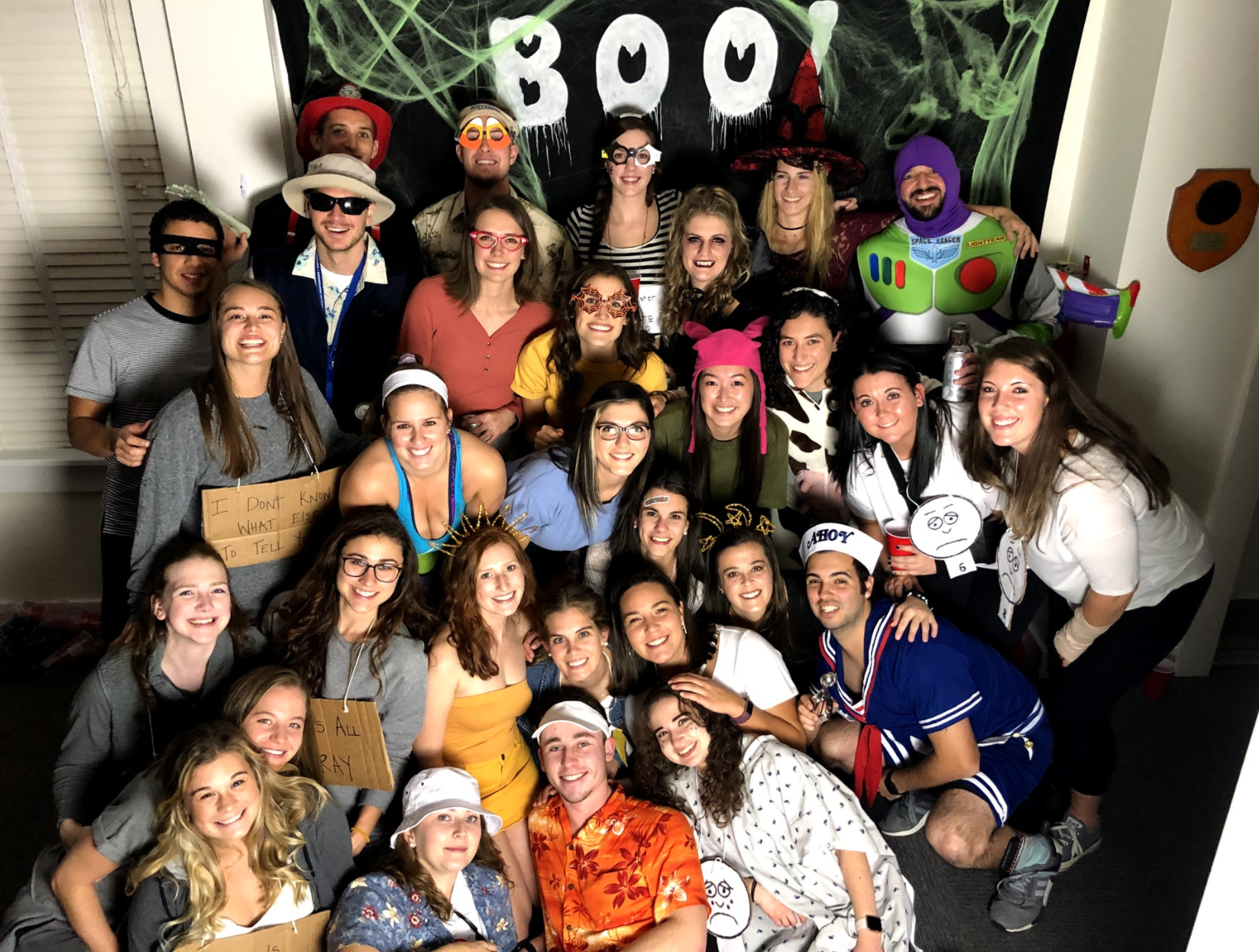
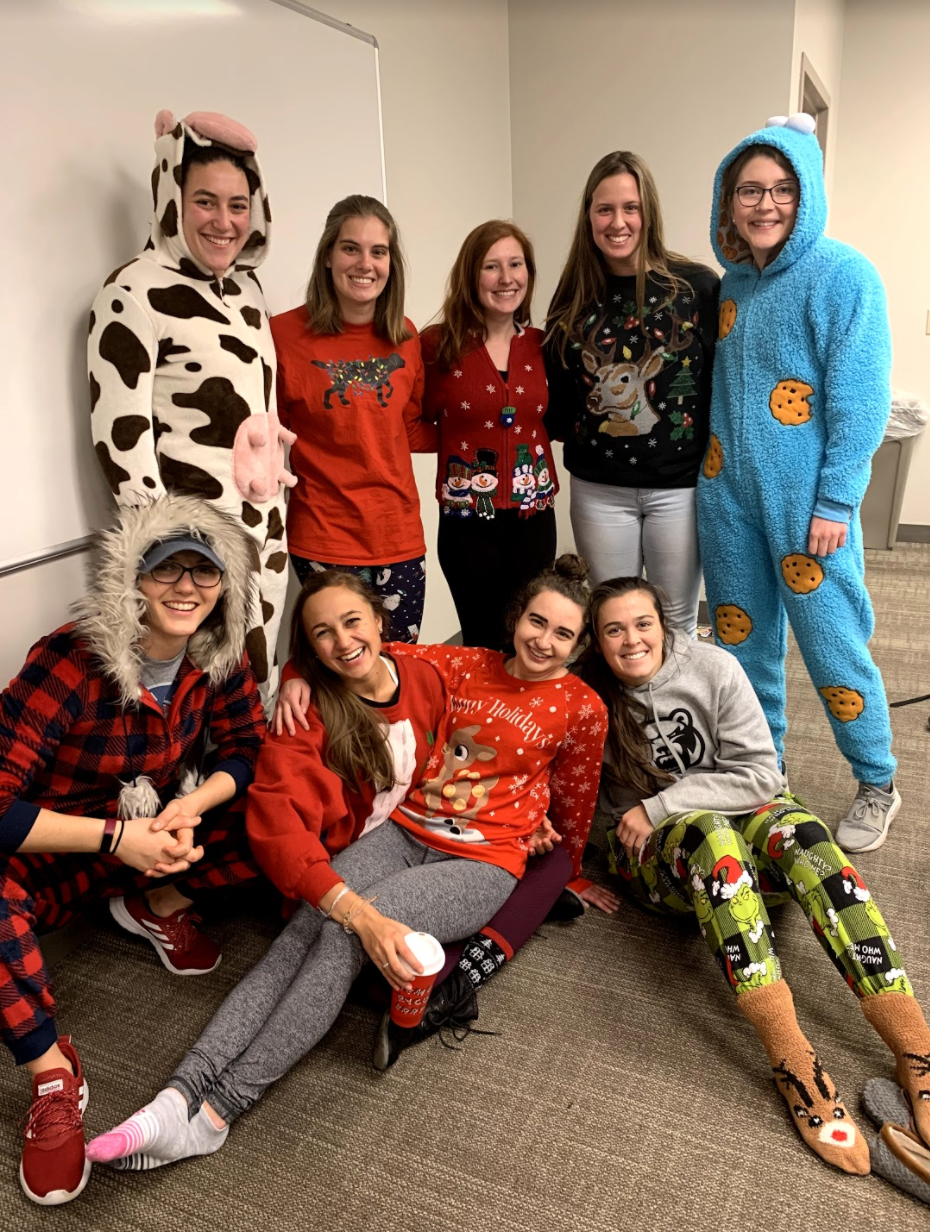
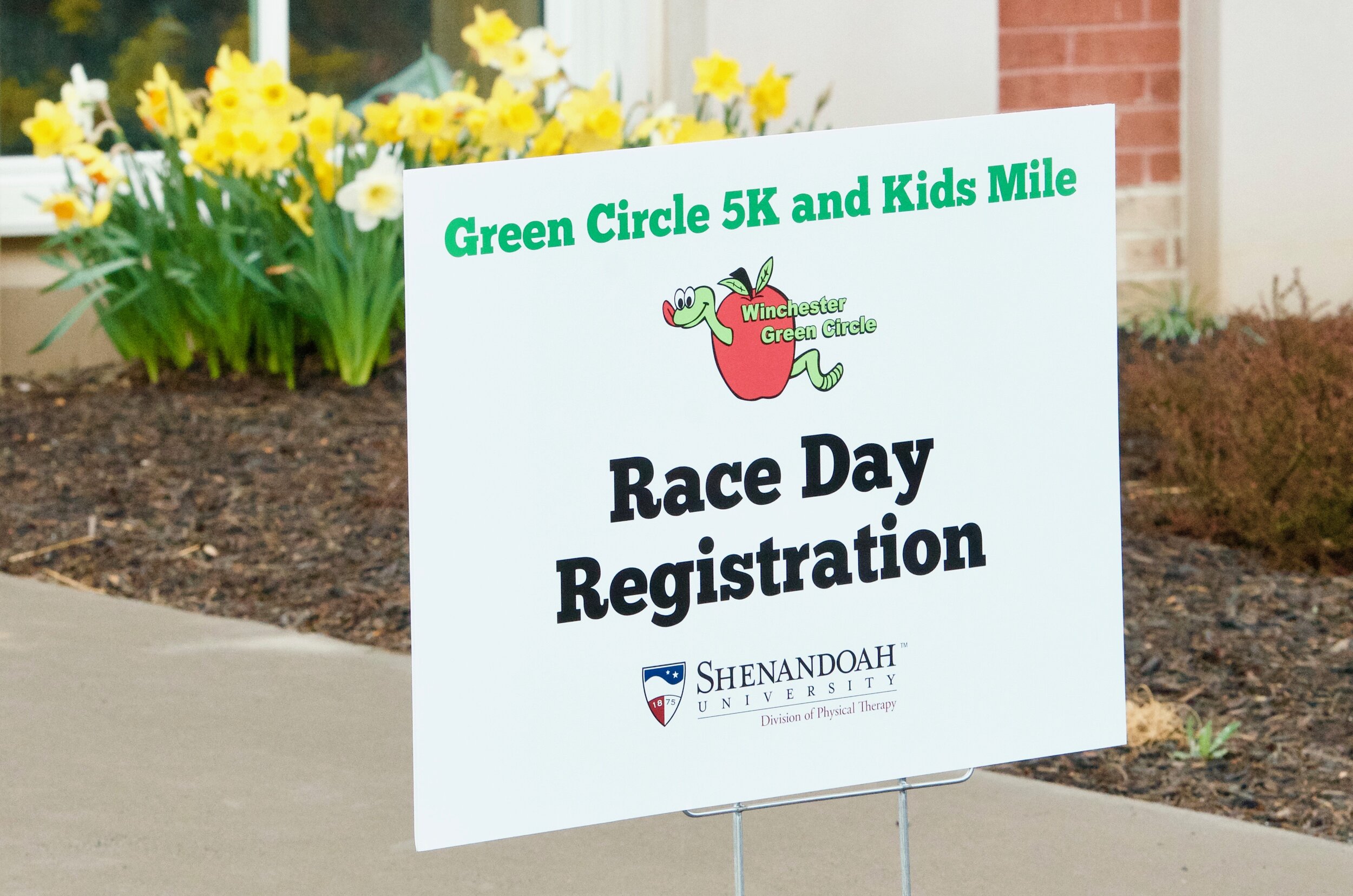
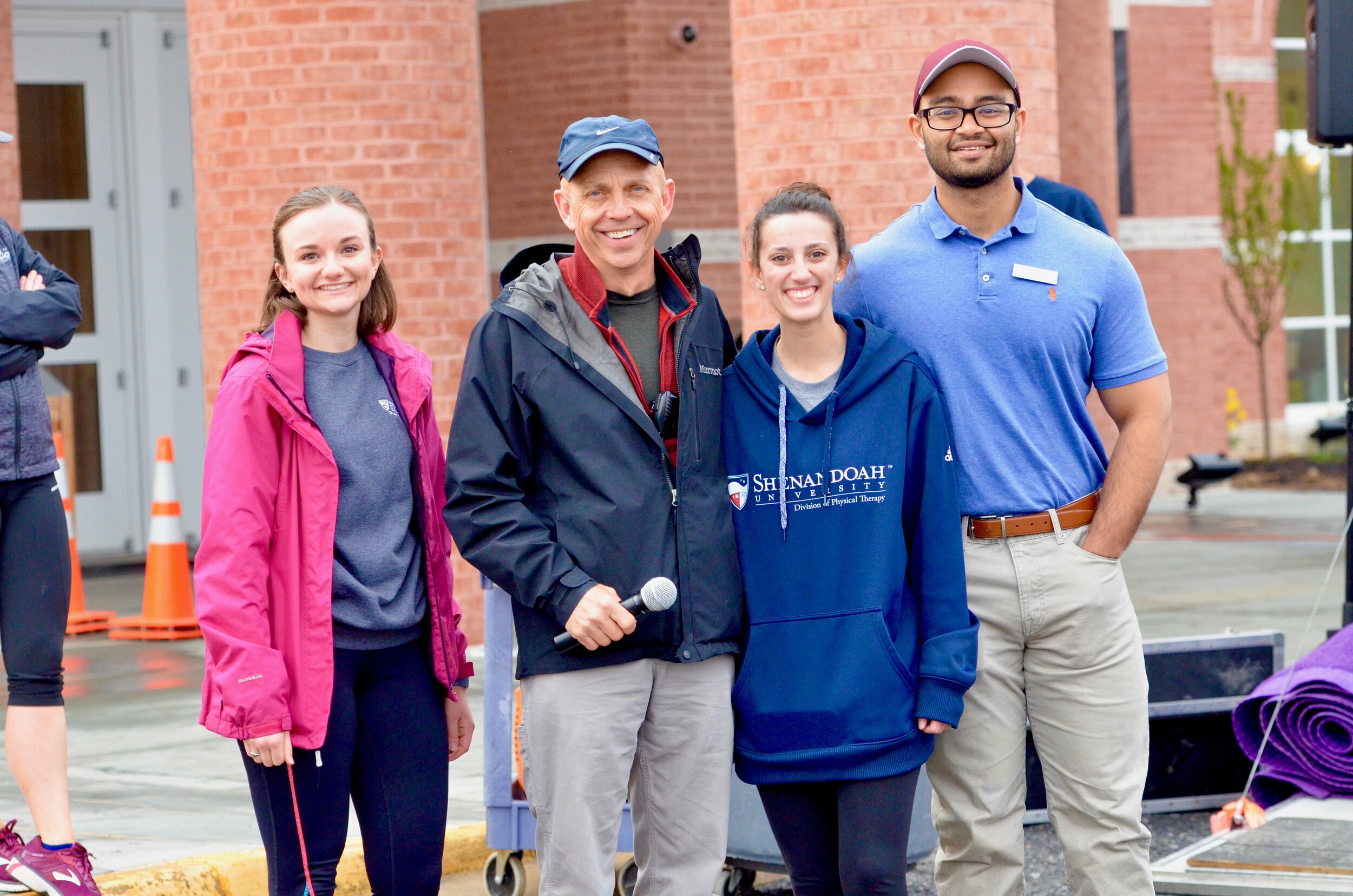




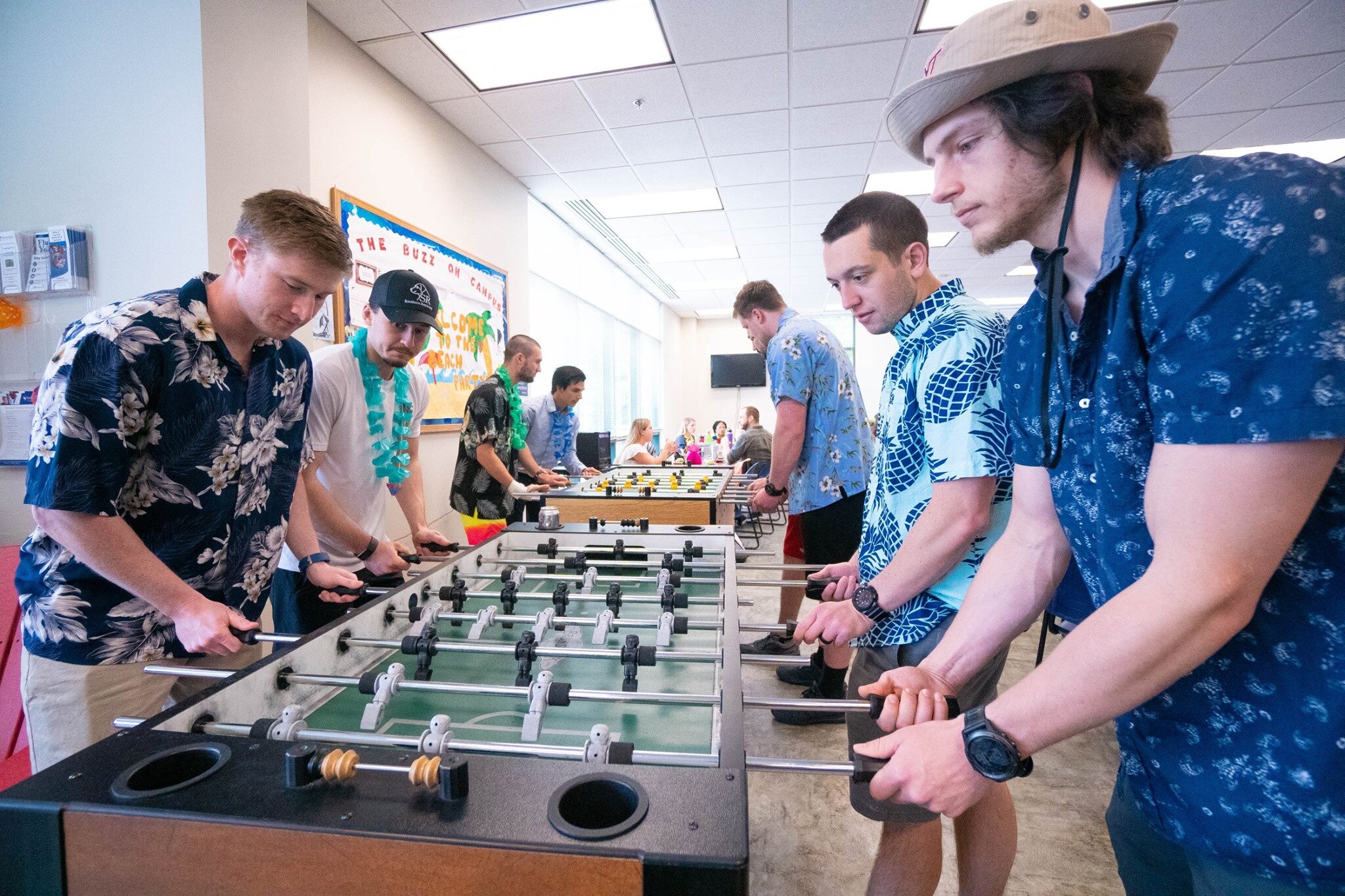
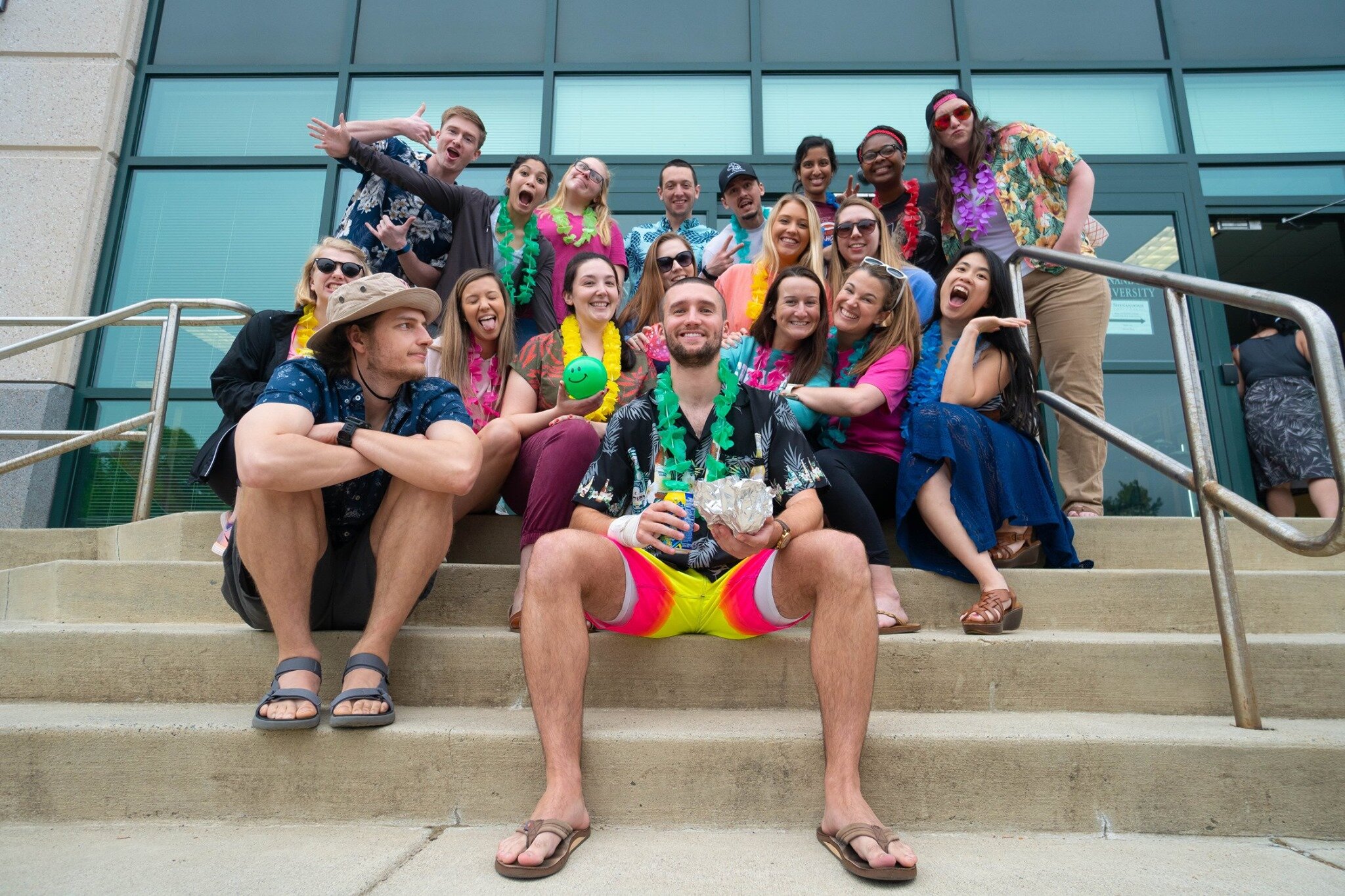

We learn material in creative, interactive ways and have state-of-the-art equipment!
One of my favorite parts of the program is the unique learning experiences. Our professors go above and beyond to teach us material in fun, interactive ways. We have numerous guest speakers throughout each semester. My favorite one so far was from Dennis Klima - a neurologic clinical specialist that presented our traumatic brain injury lecture. Following his lecture, we all learned Polka dancing since it is a great evidence-based intervention for this patient population. How cool is that?! We learn how to do serial casting, have a motor learning lab (which is basically the coolest little talent show where we get to show off our fine and gross motor skills), baby lab (where we get to play and interact with babies to learn all about their development as a part of our pediatrics class), participate in aquatic therapy, and so much more. For our Adult Neurotherapeutics and Pediatrics classes, we get to treat a patient and implement our own plan of care as part of the course in addition to our clinical placements, giving us lots and lots of hands-on patient care opportunities! We have state-of-the-art equipment, including a 3D motion analysis lab, Litegait, Neurocom, Virtual Reality, and the coolest anatomy cadaver lab I’ve ever seen, which all contribute to some pretty amazing learning experiences.


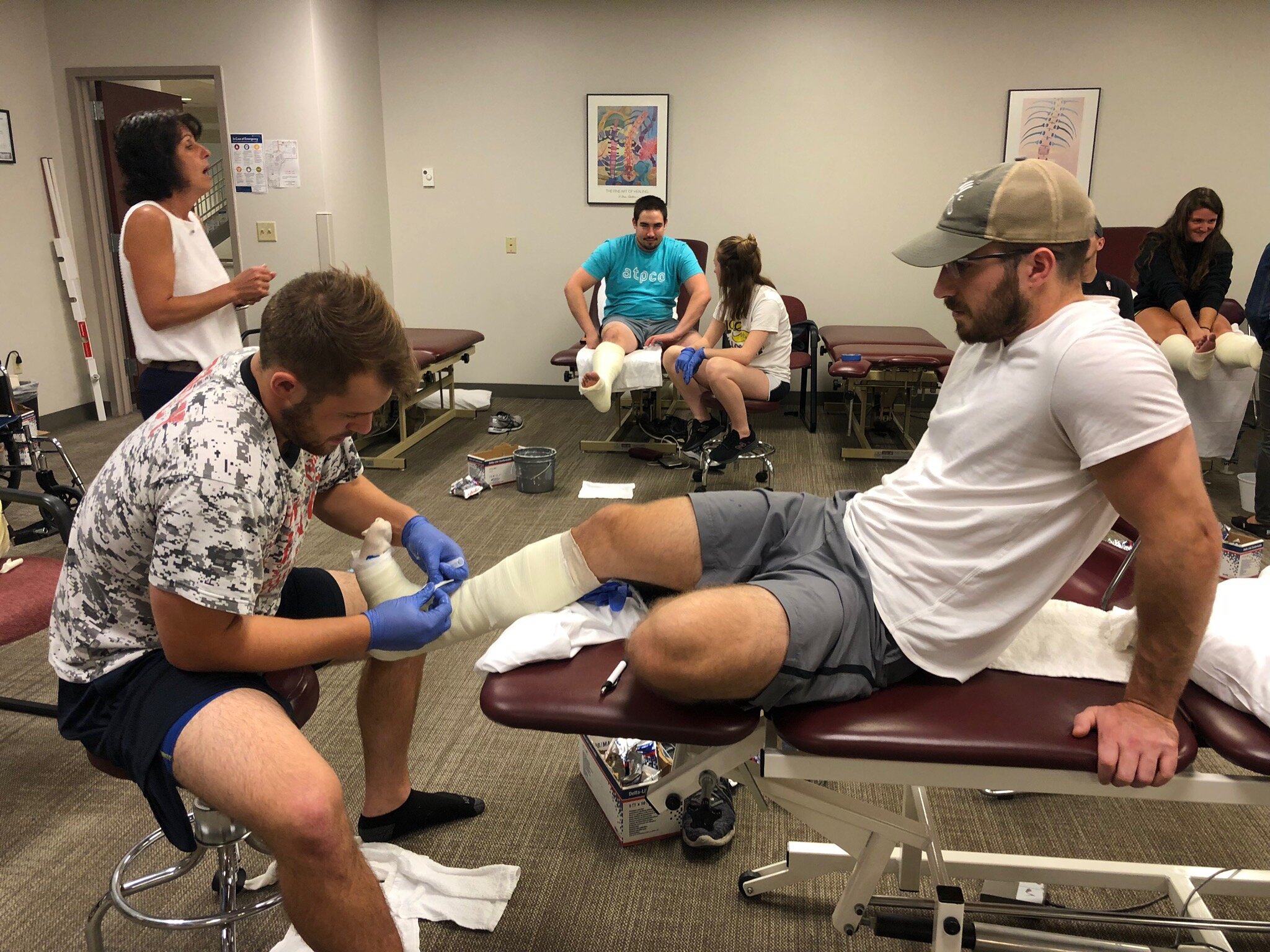
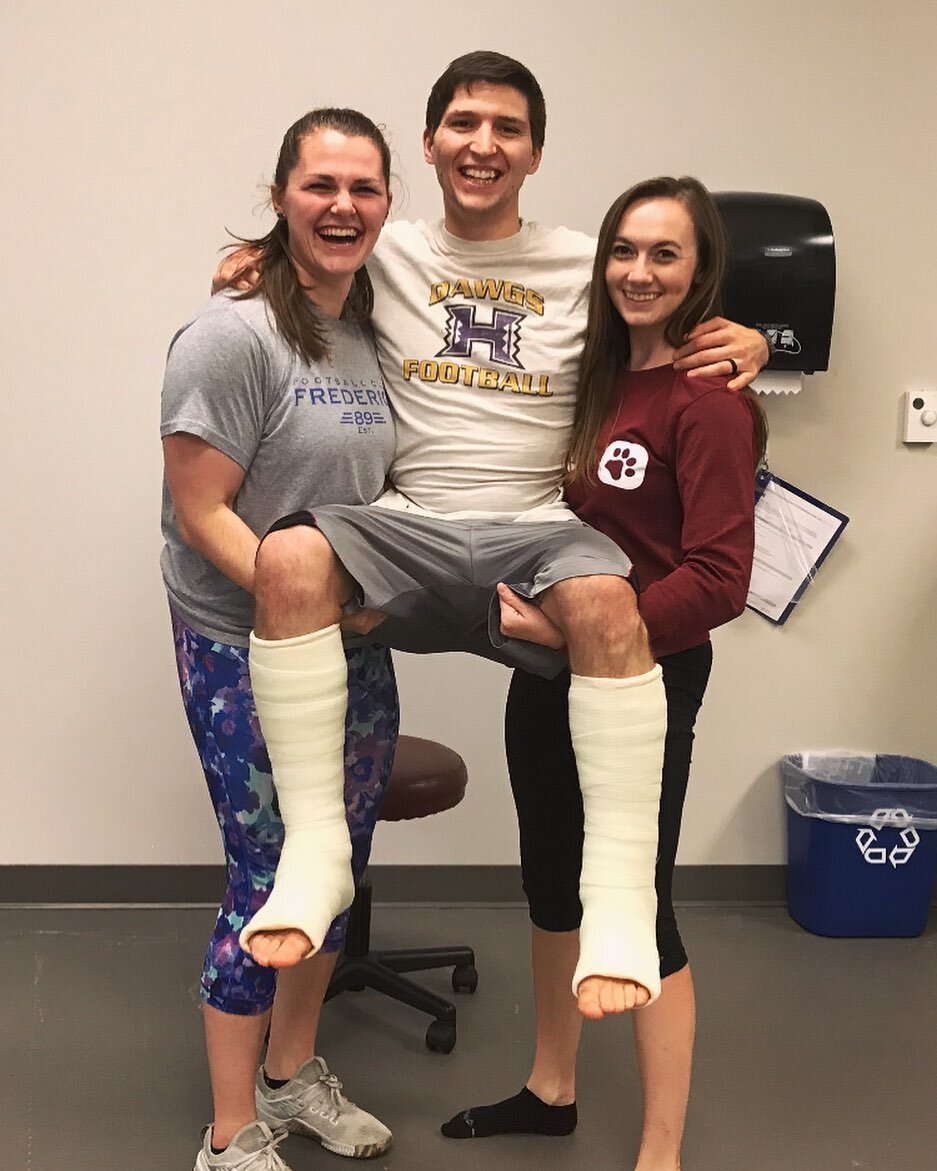

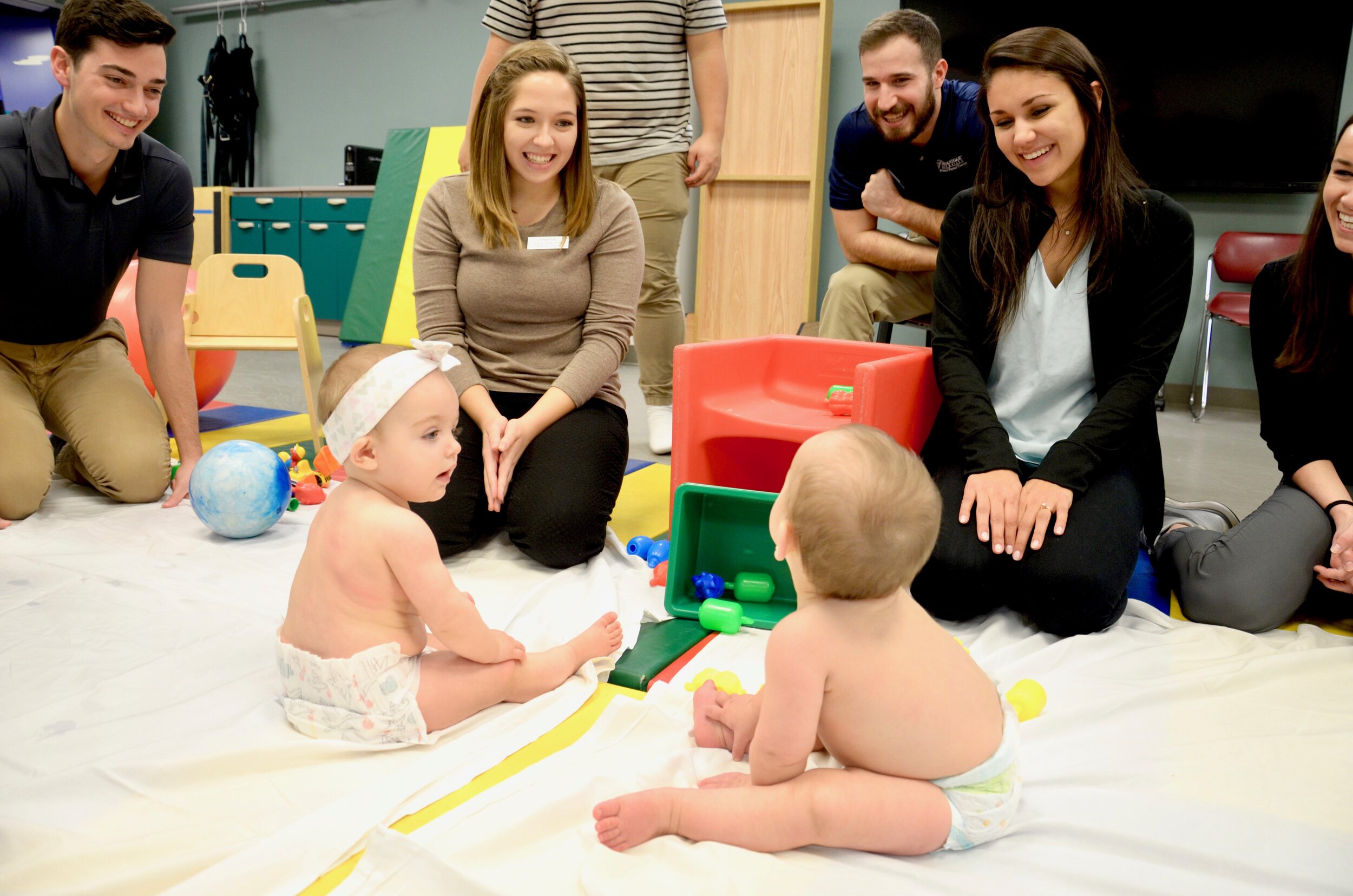
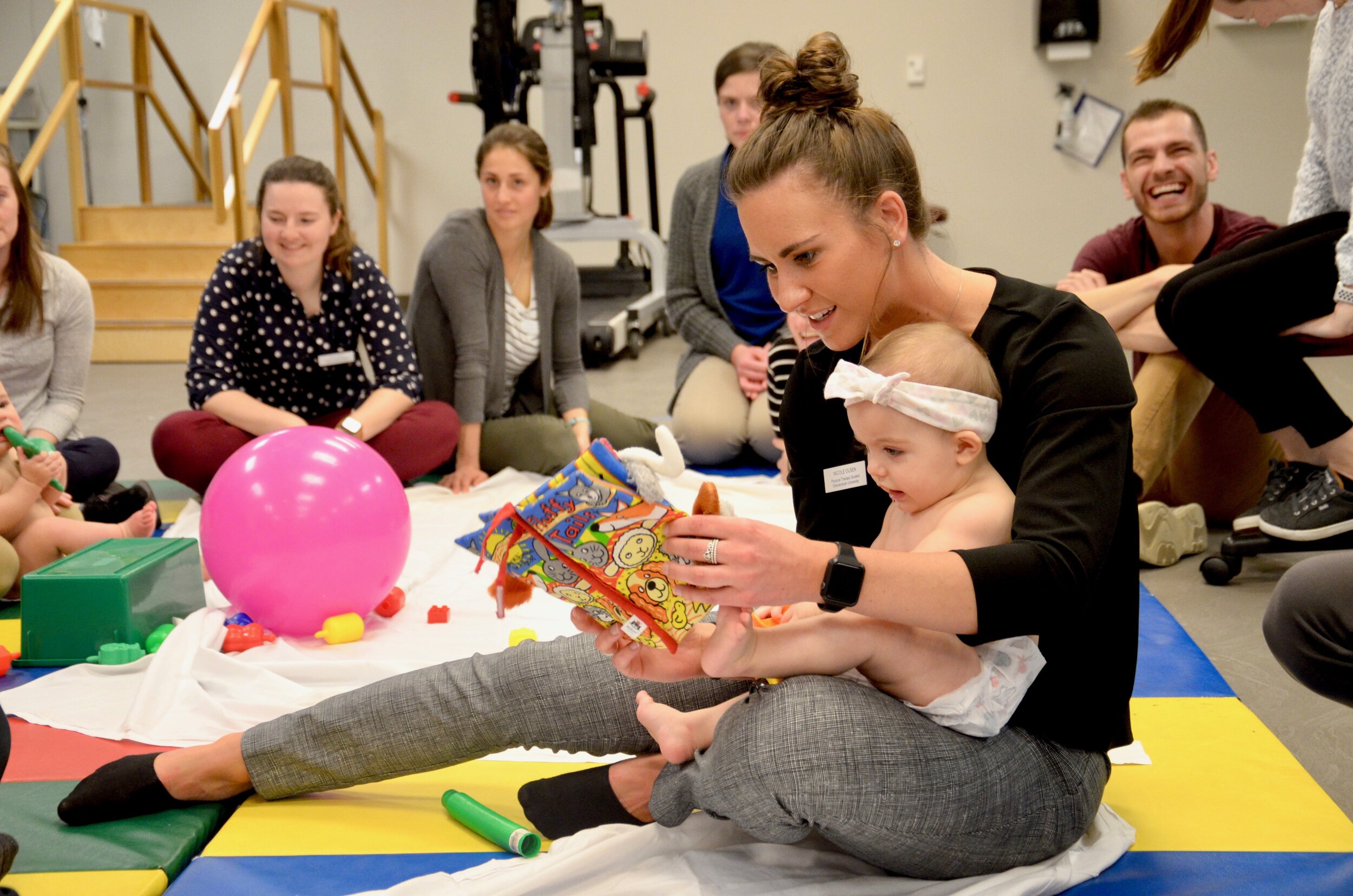
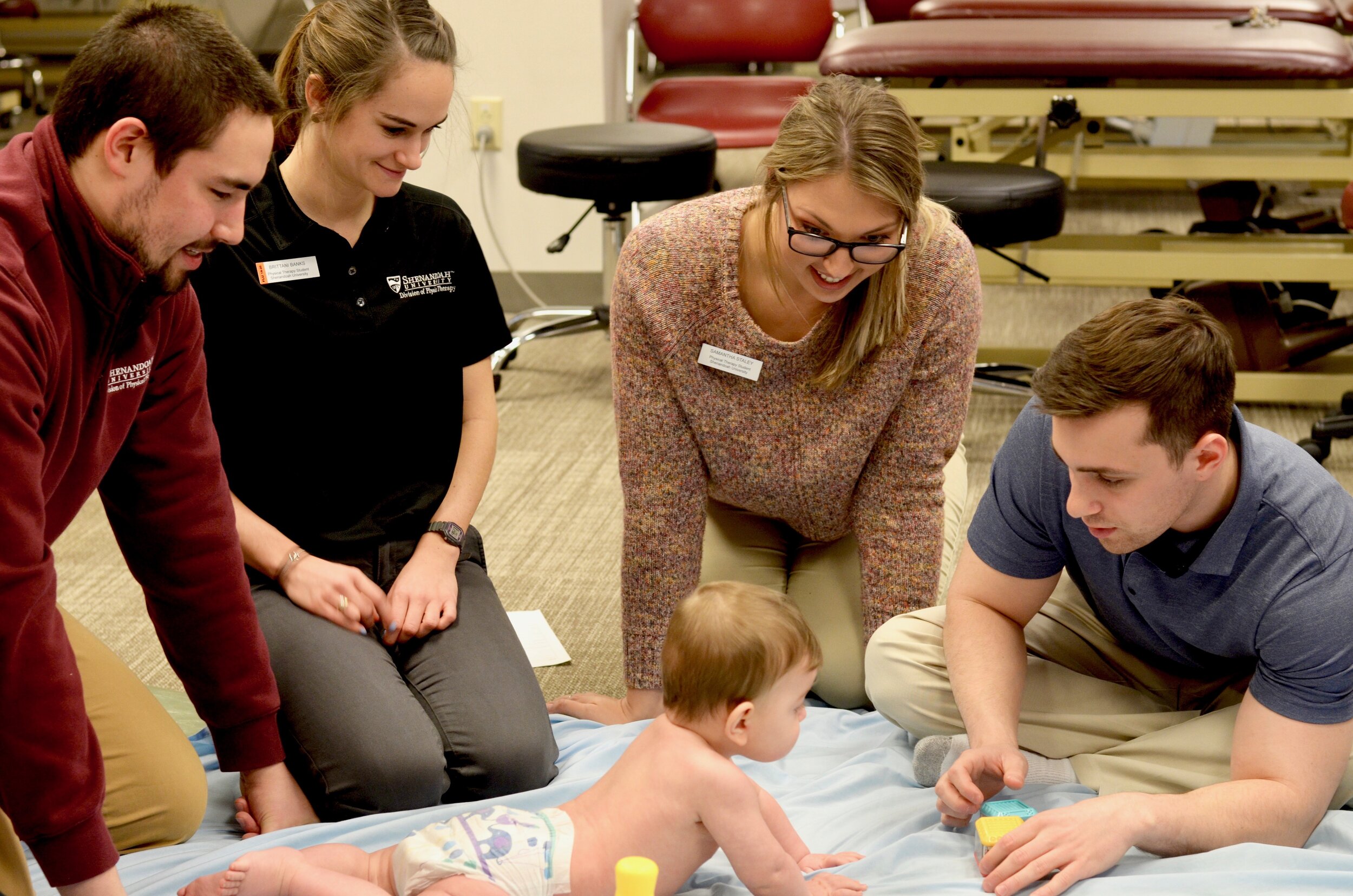
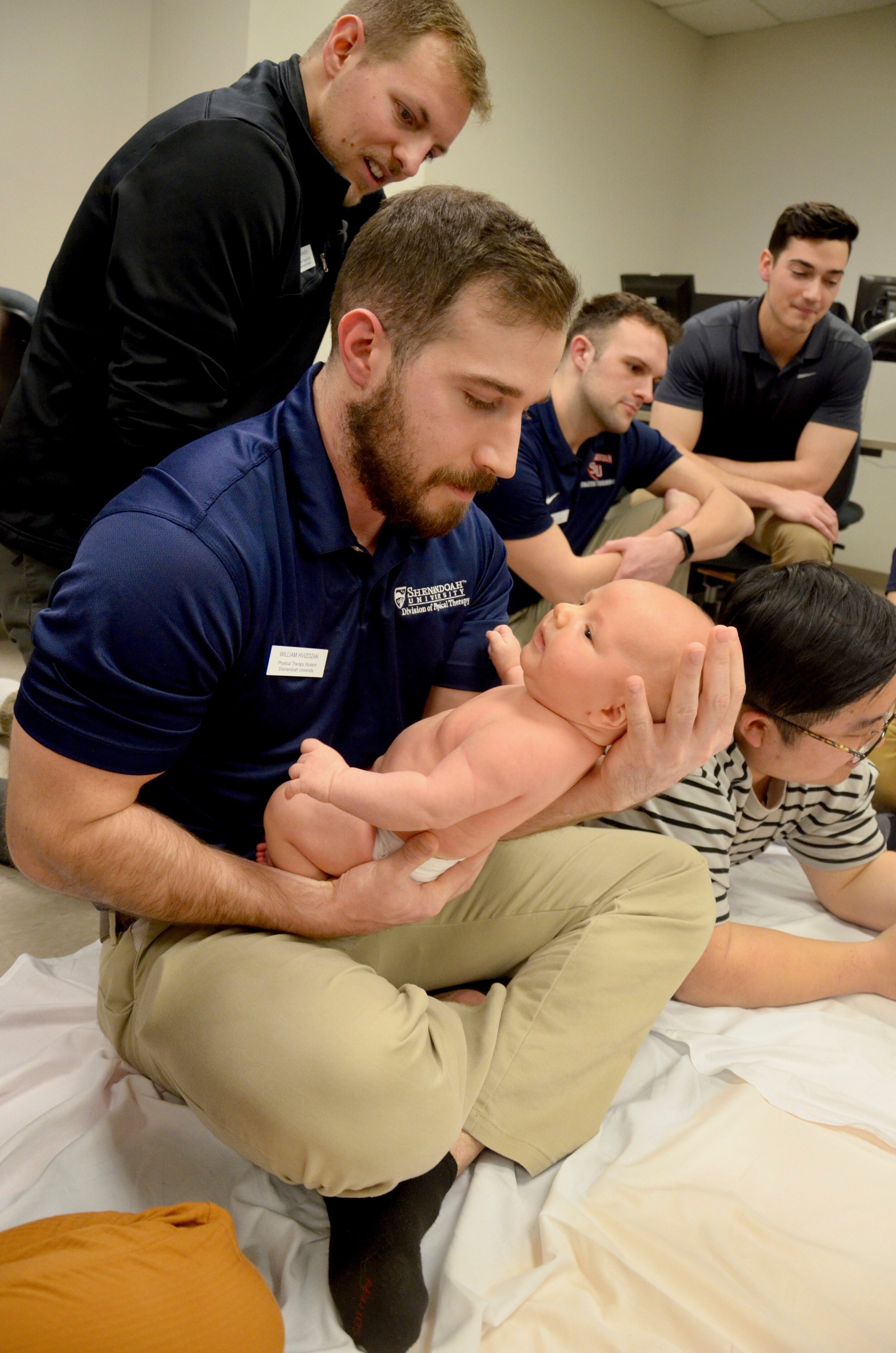
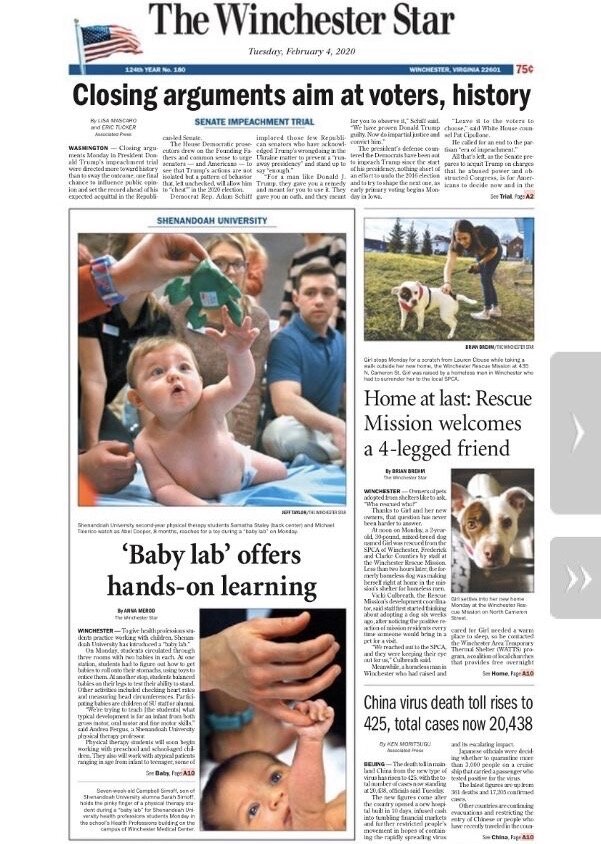
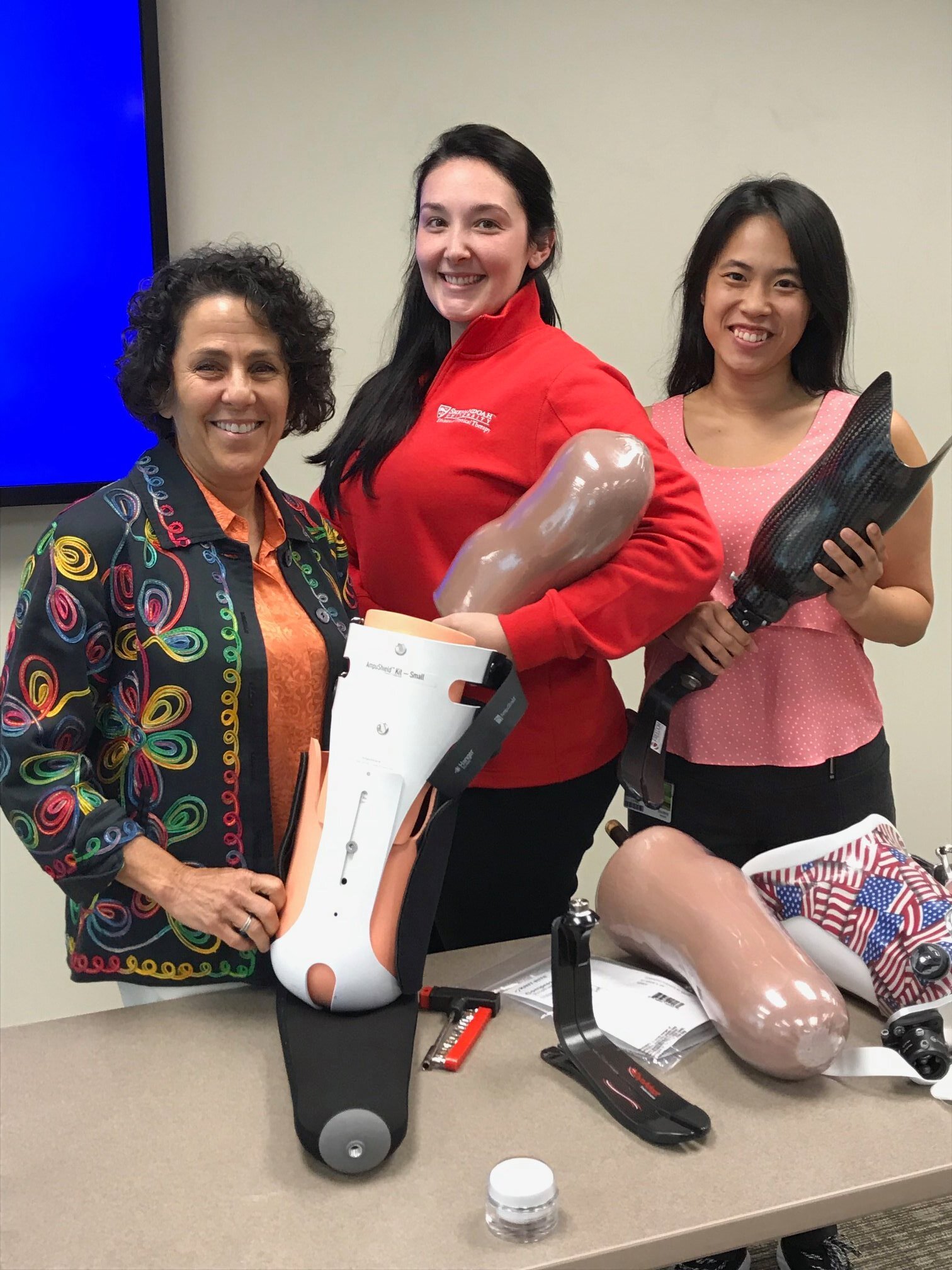
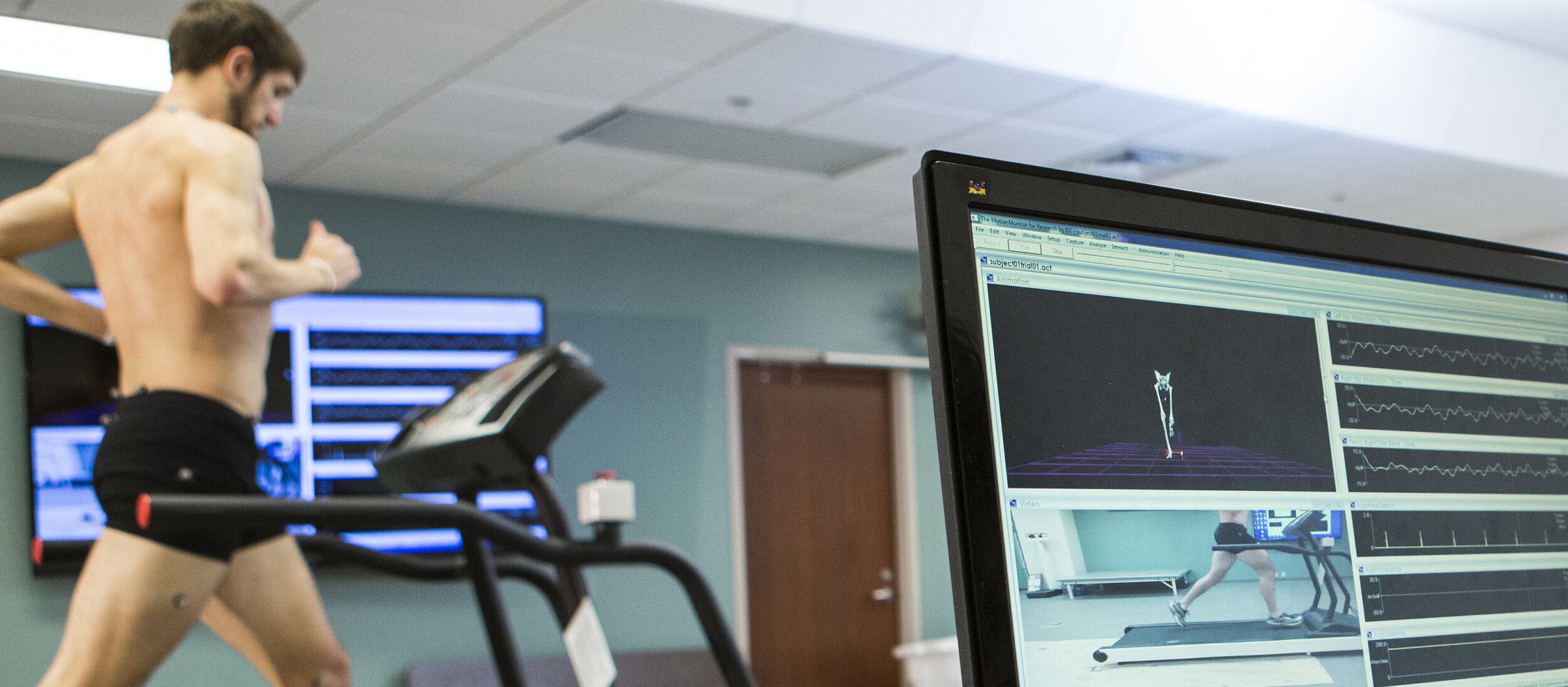
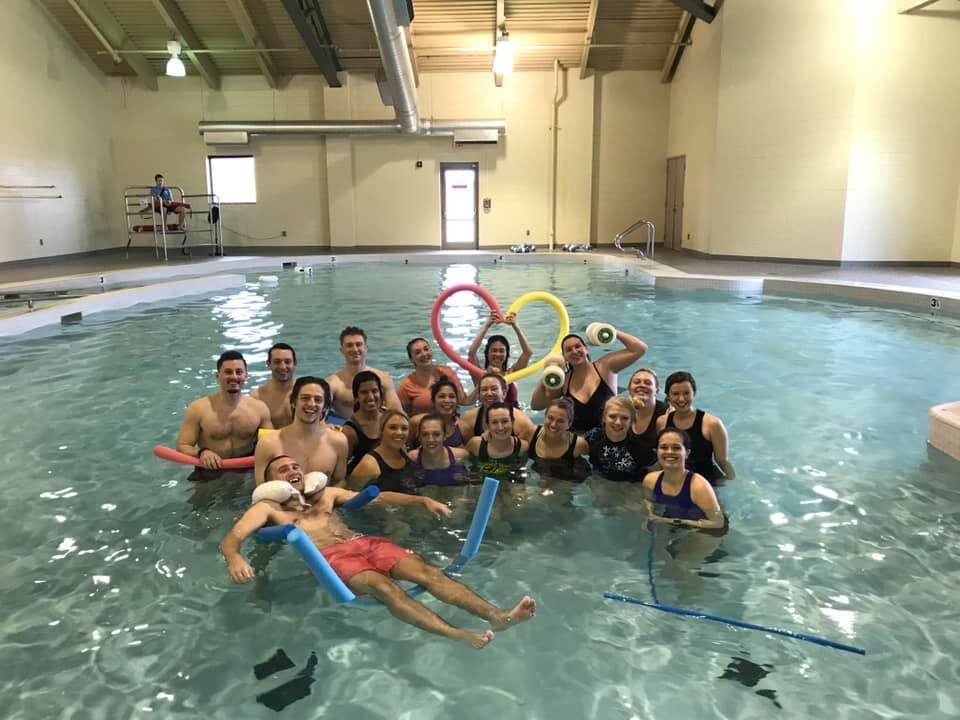
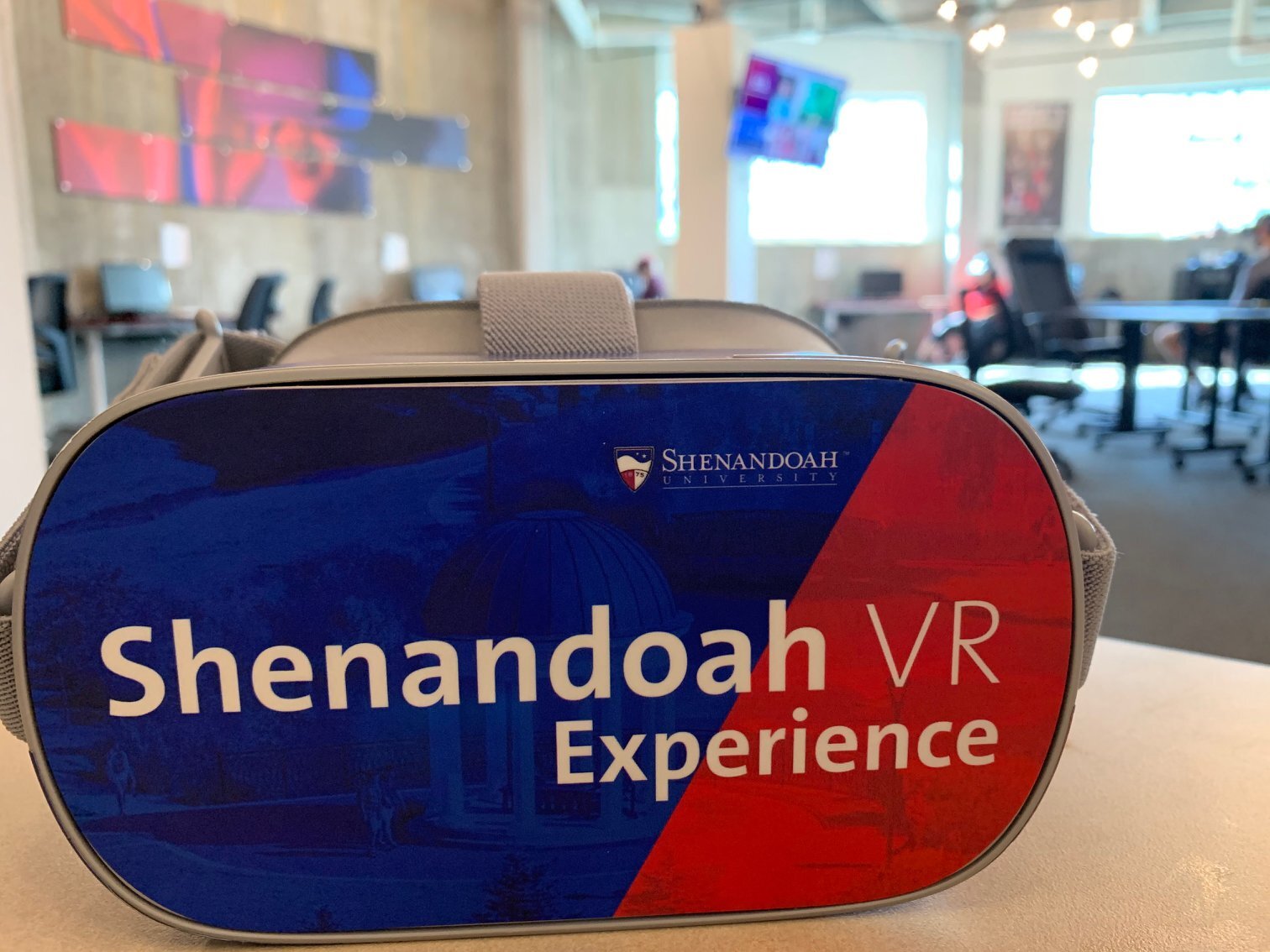


Thanks so much for reading - I hope you found this post helpful if you are considering applying to DPT school and Shenandoah is one of the programs you are interested in! I am more than happy to answer any additional questions you may have about the program! :)












